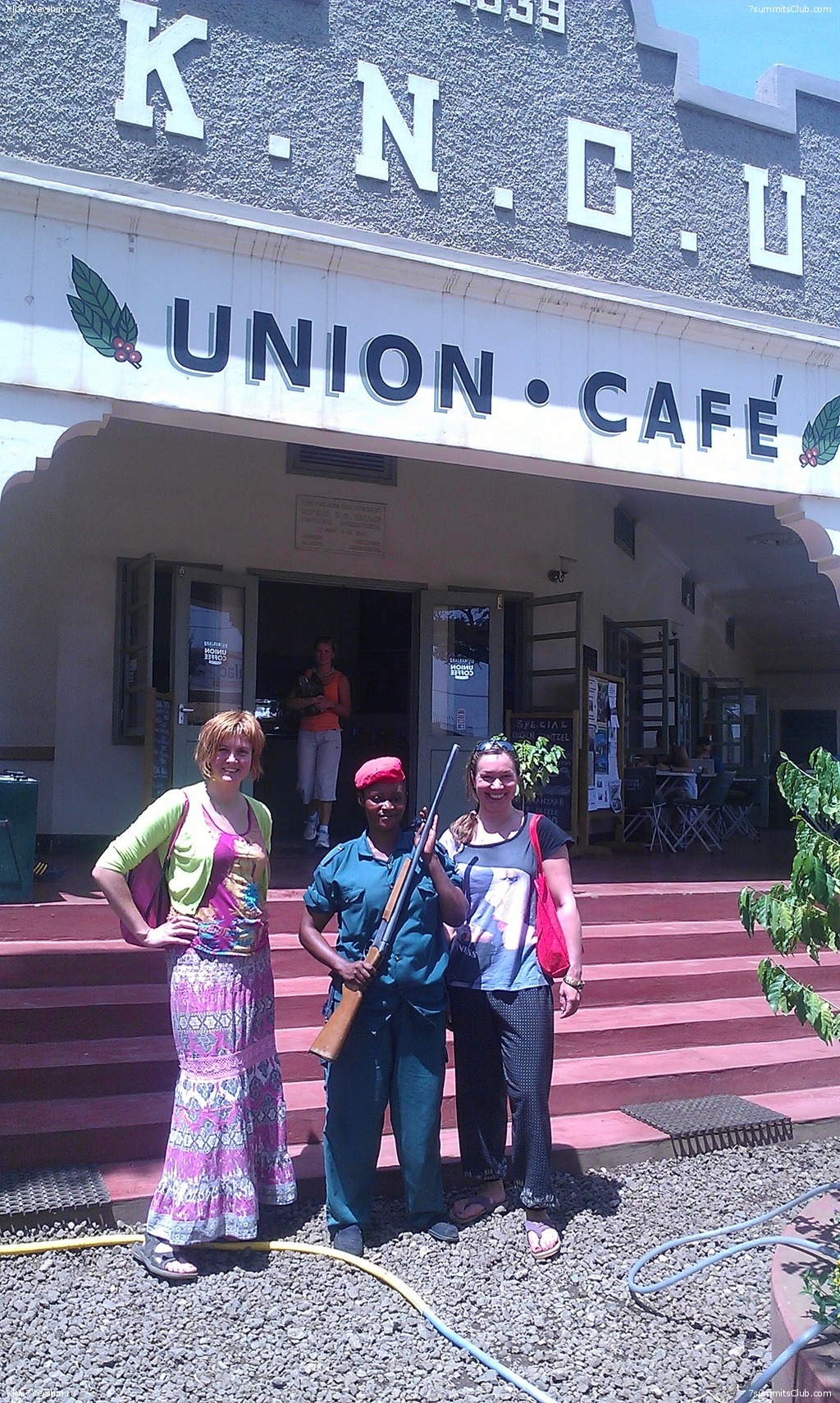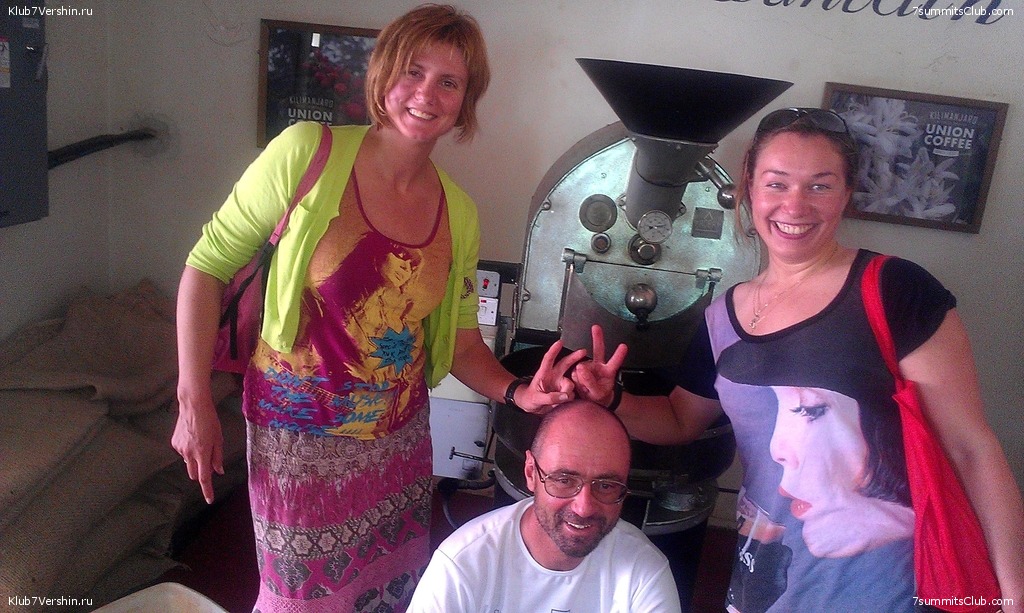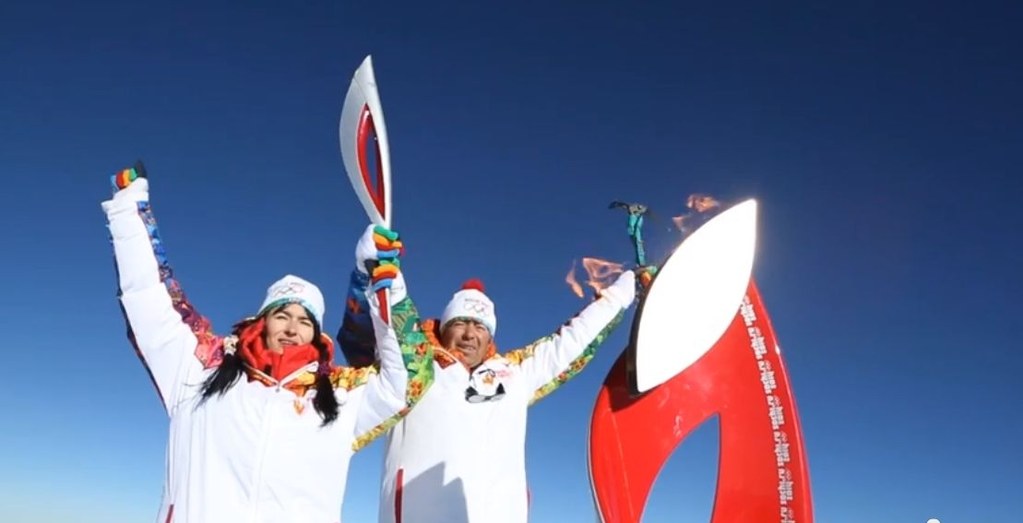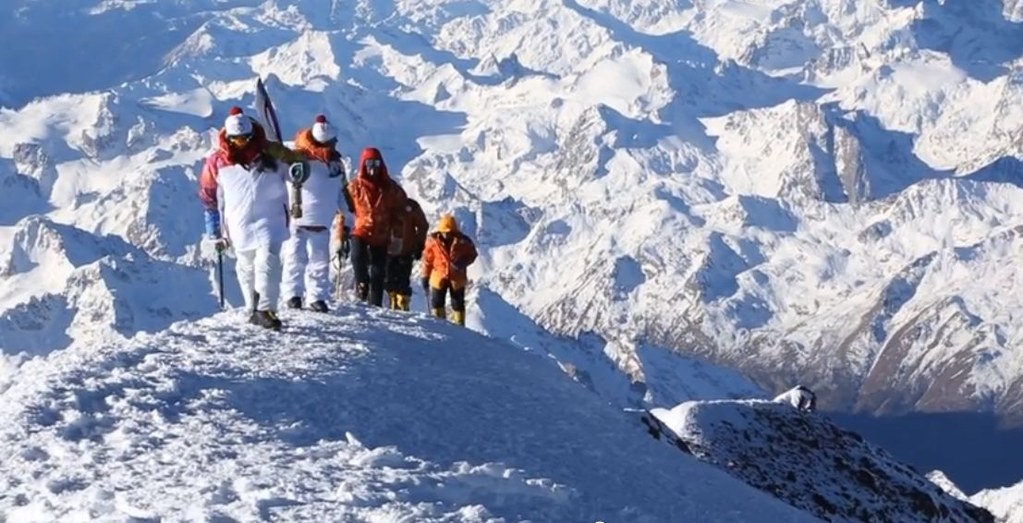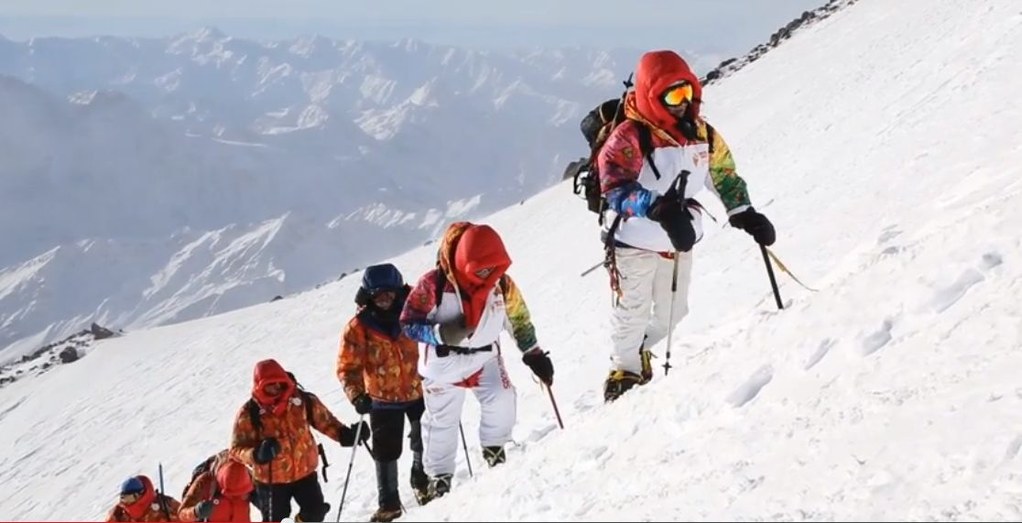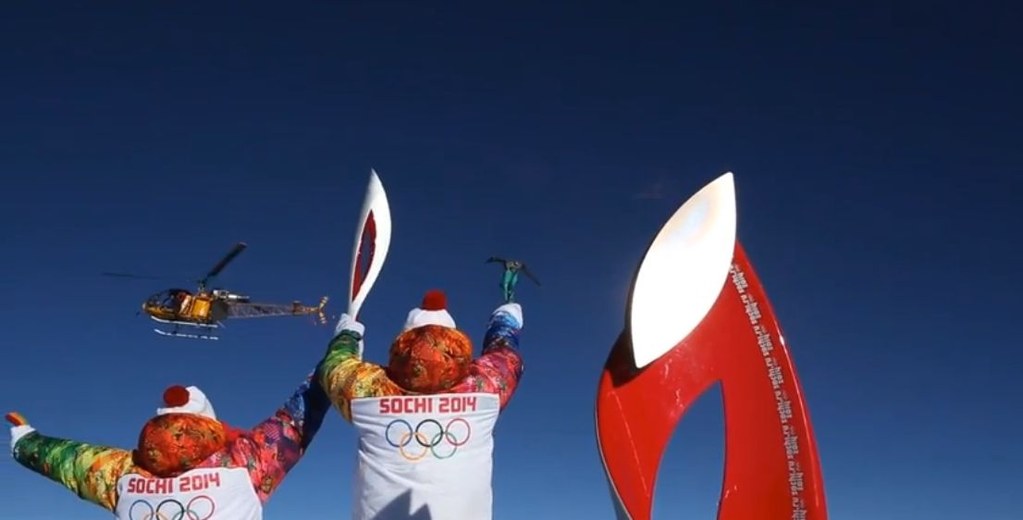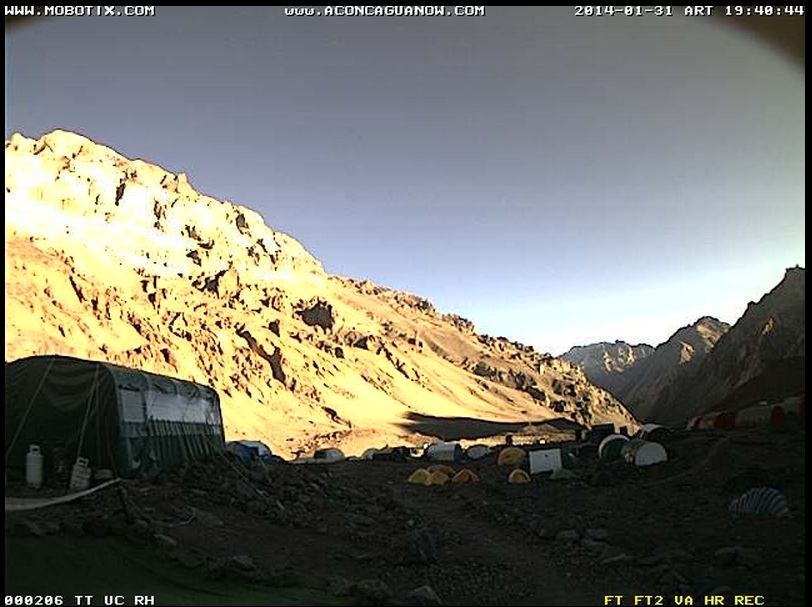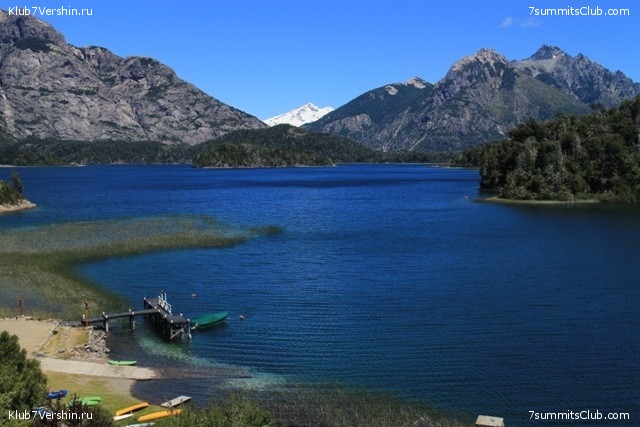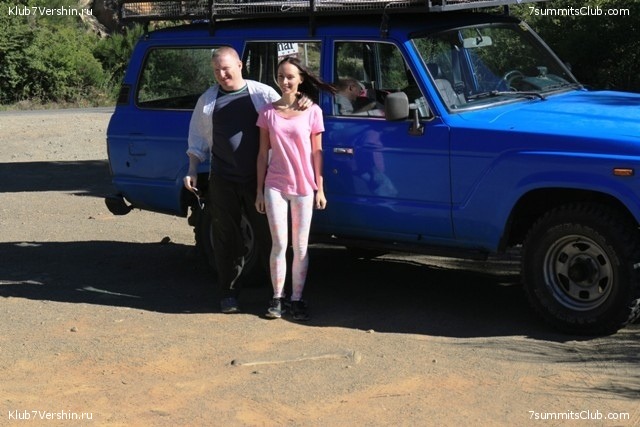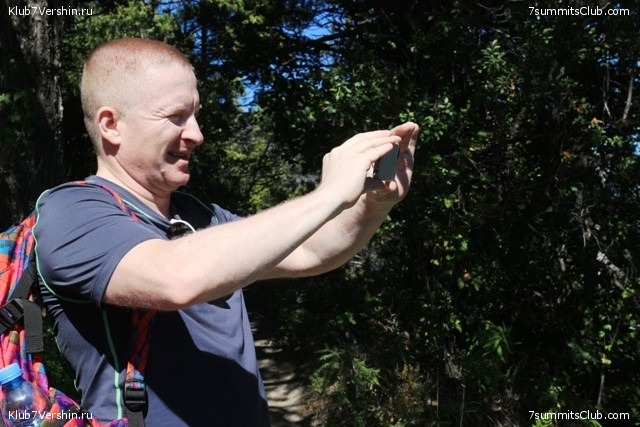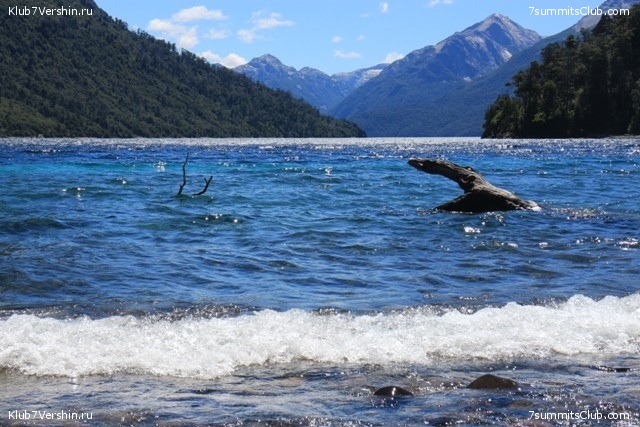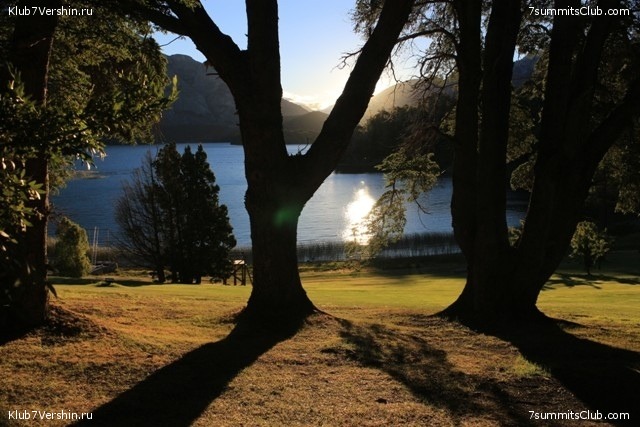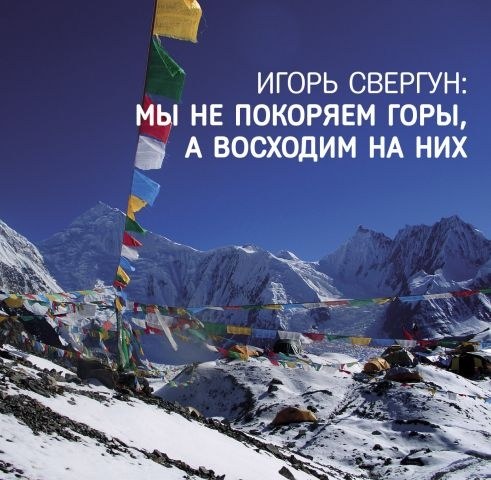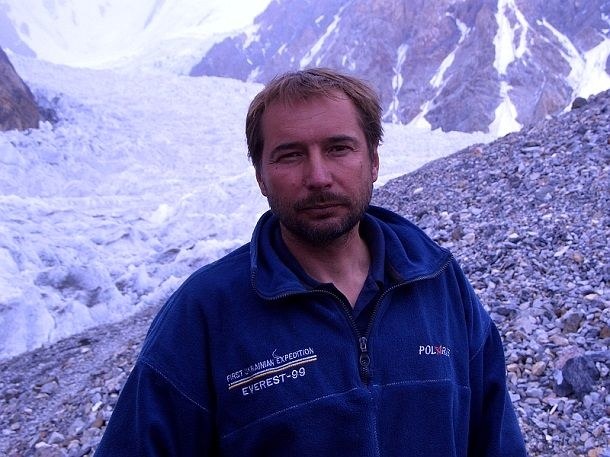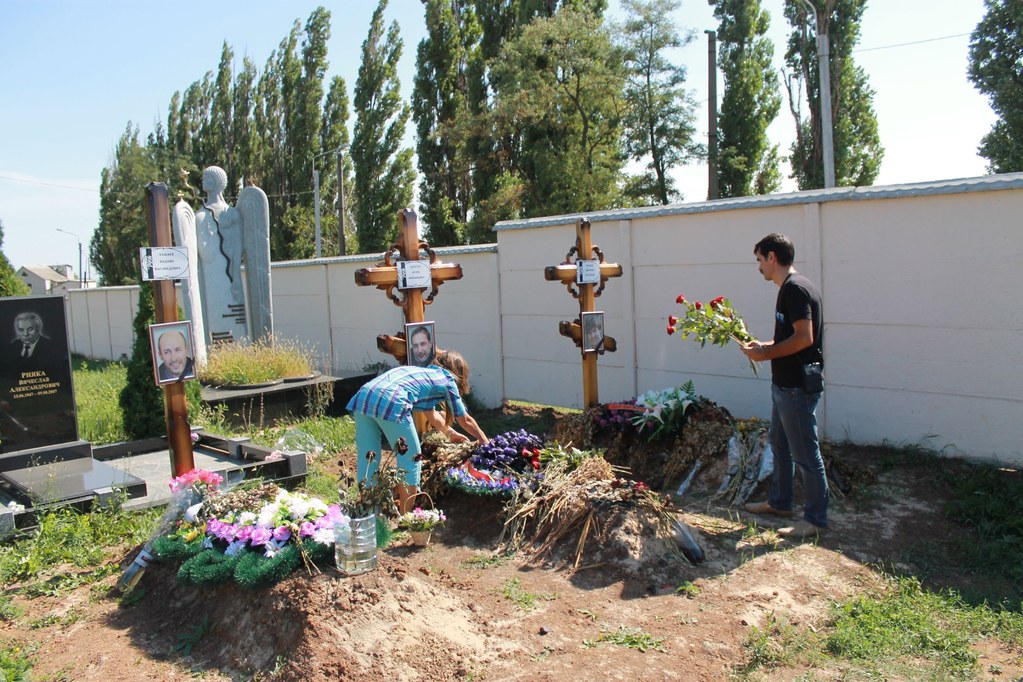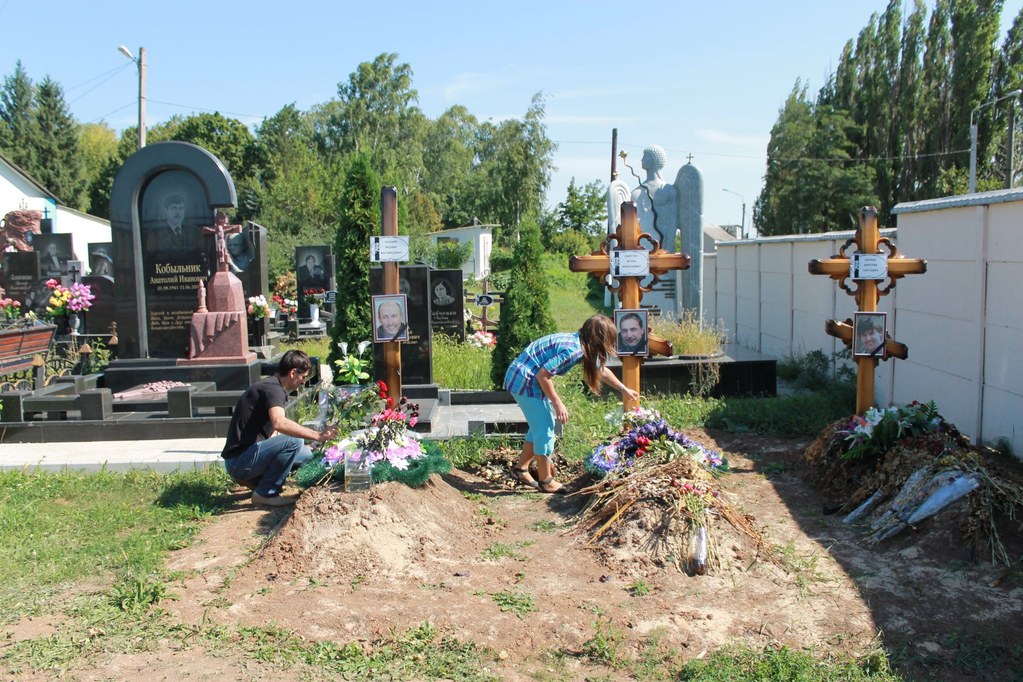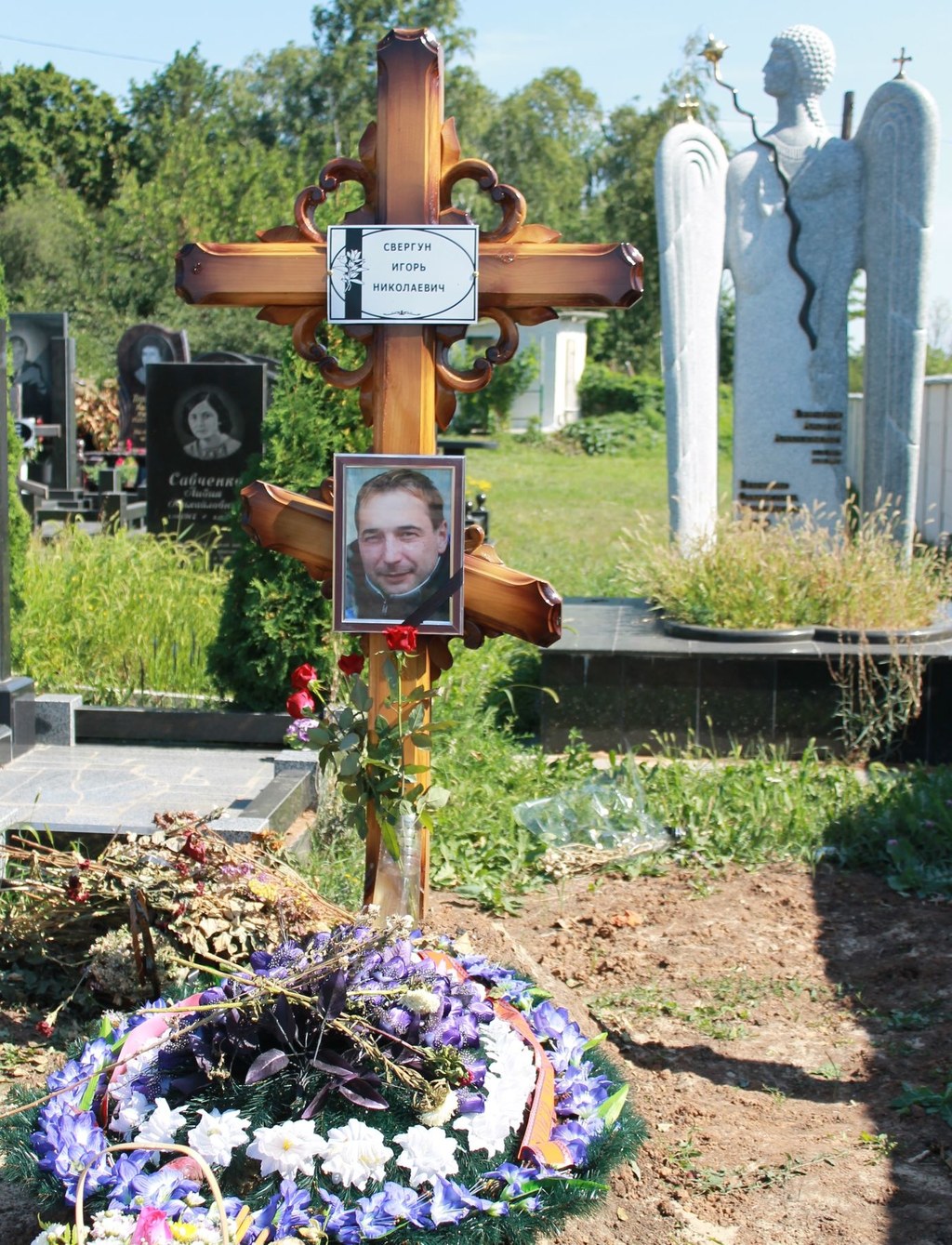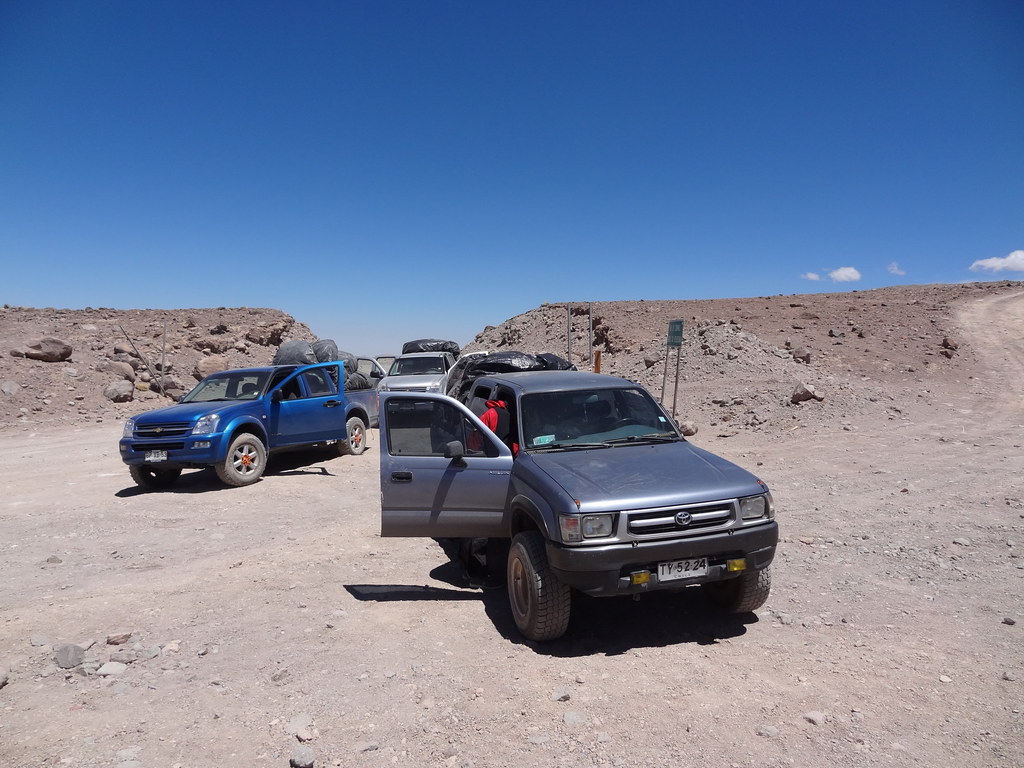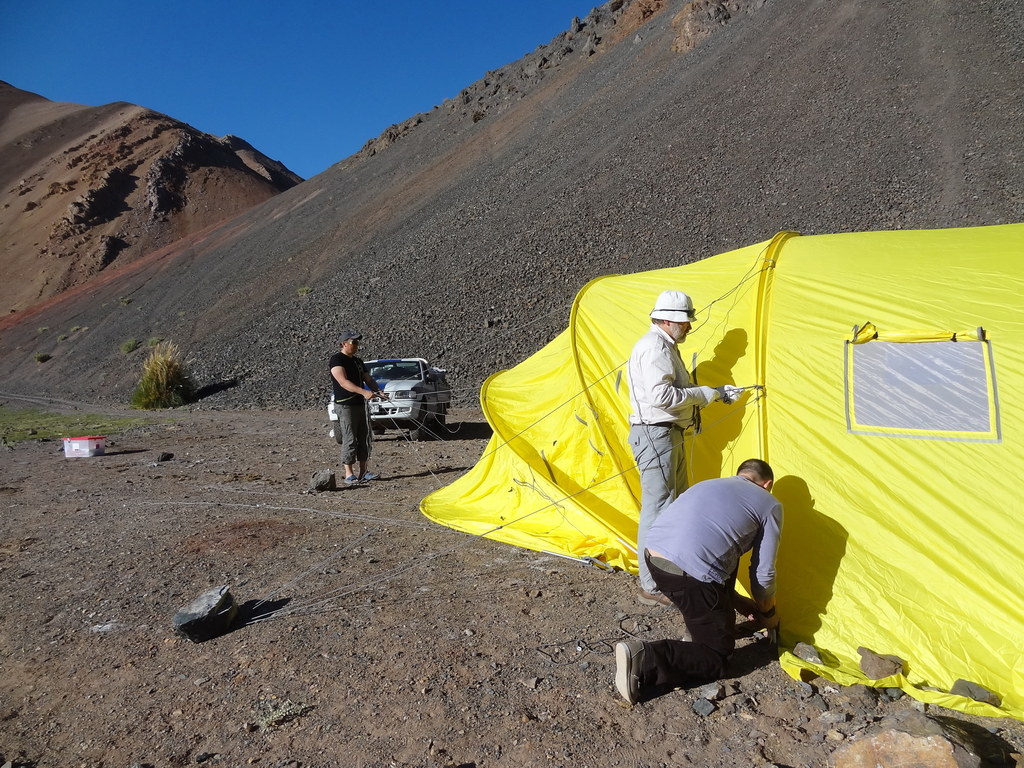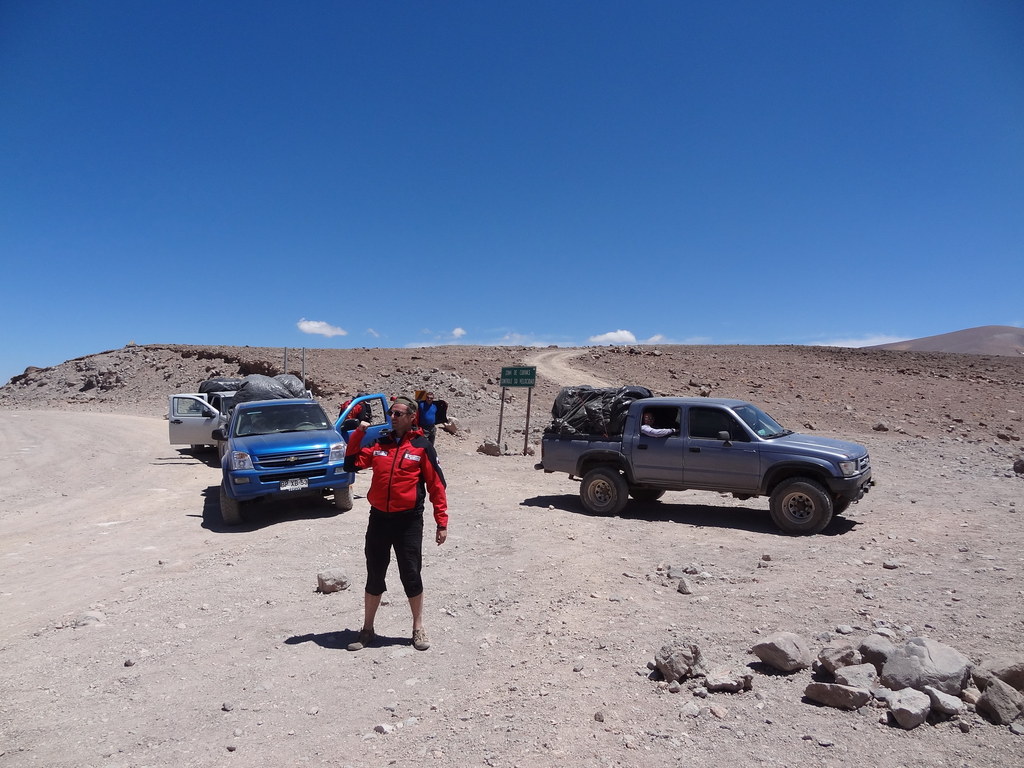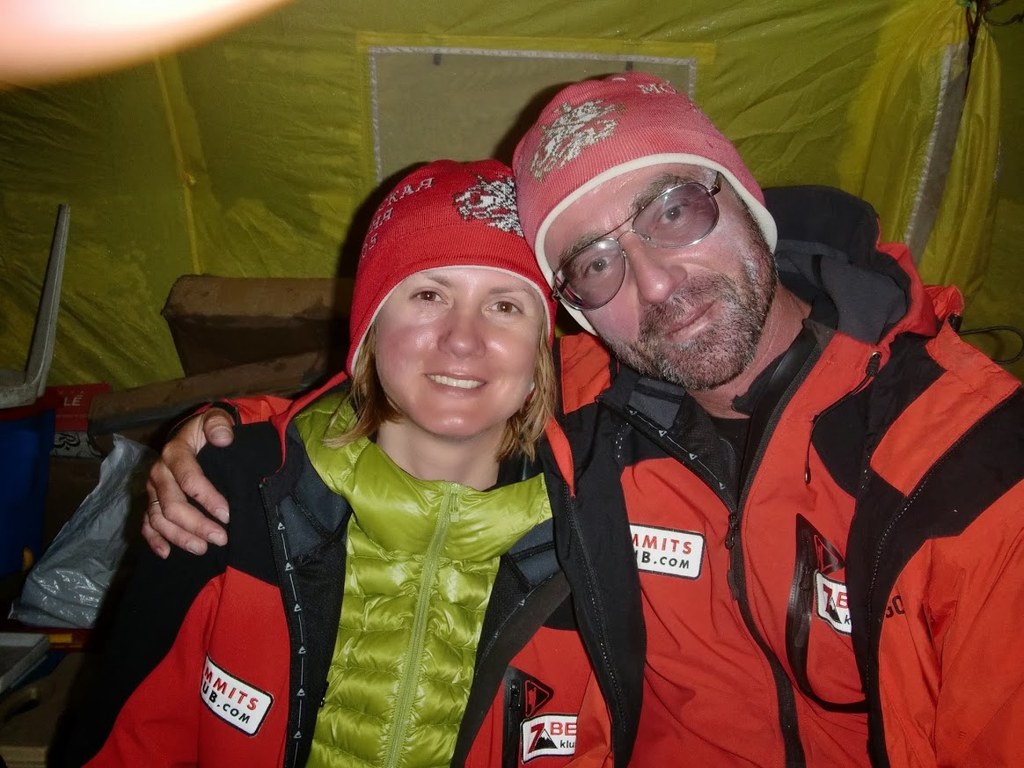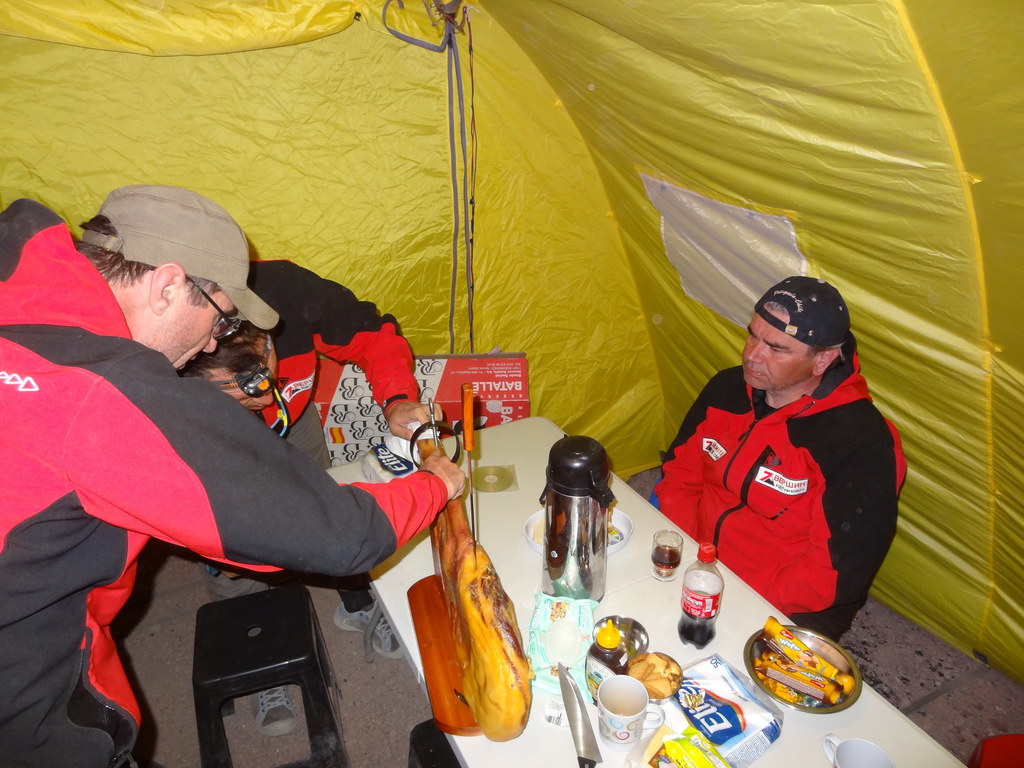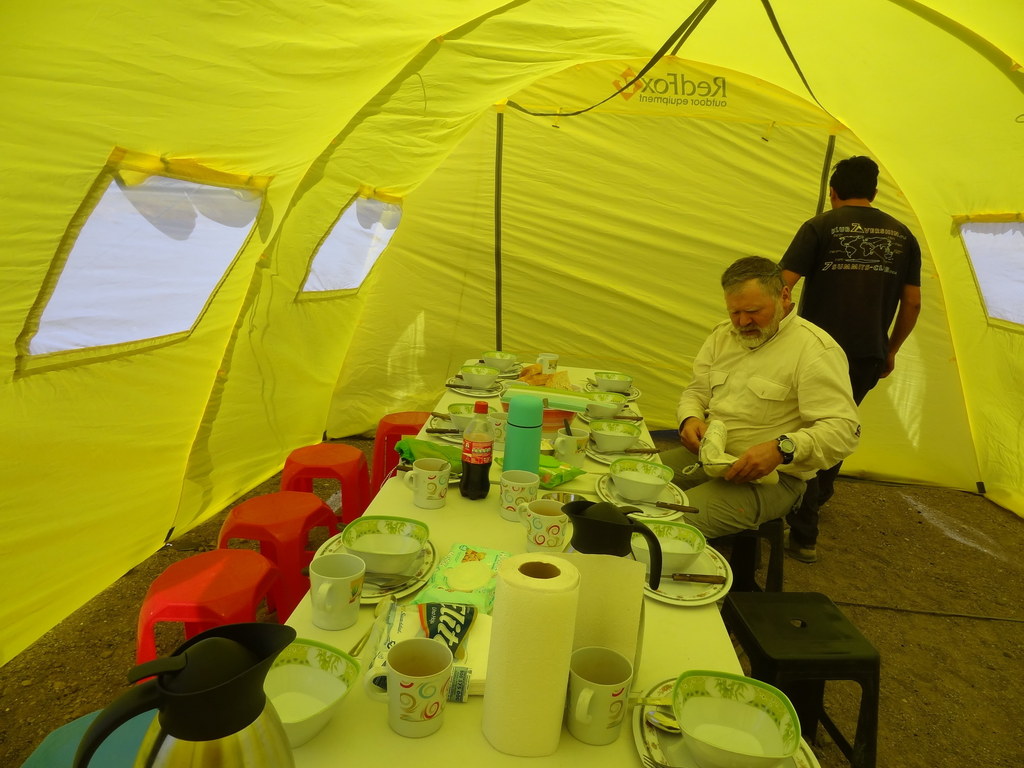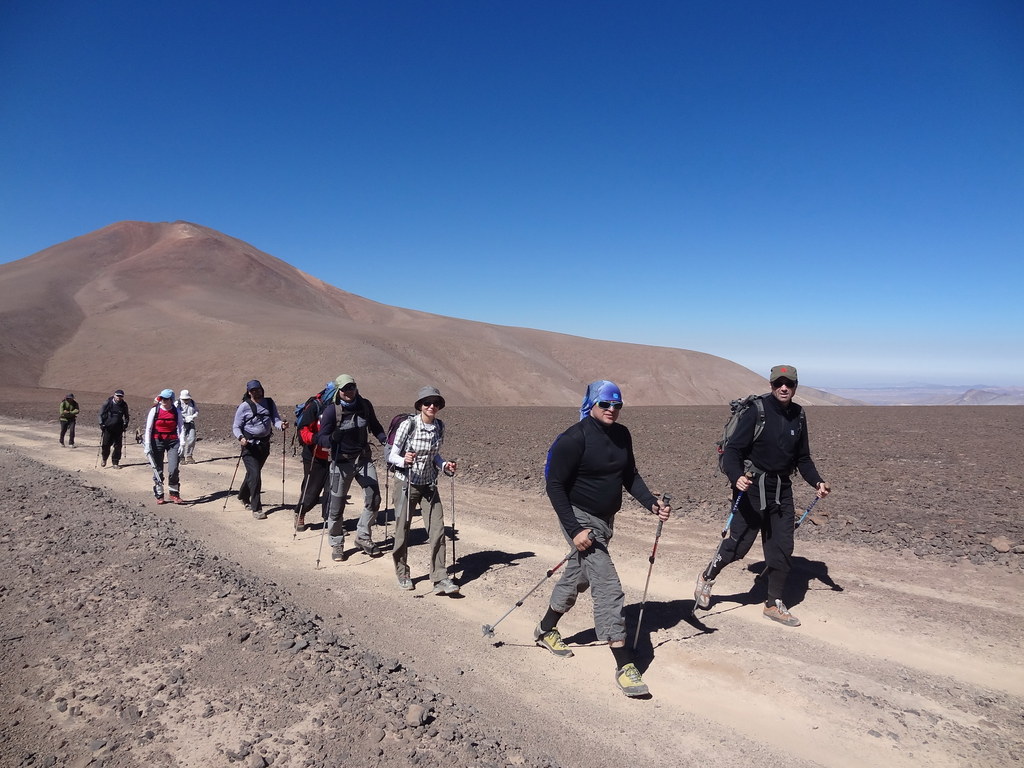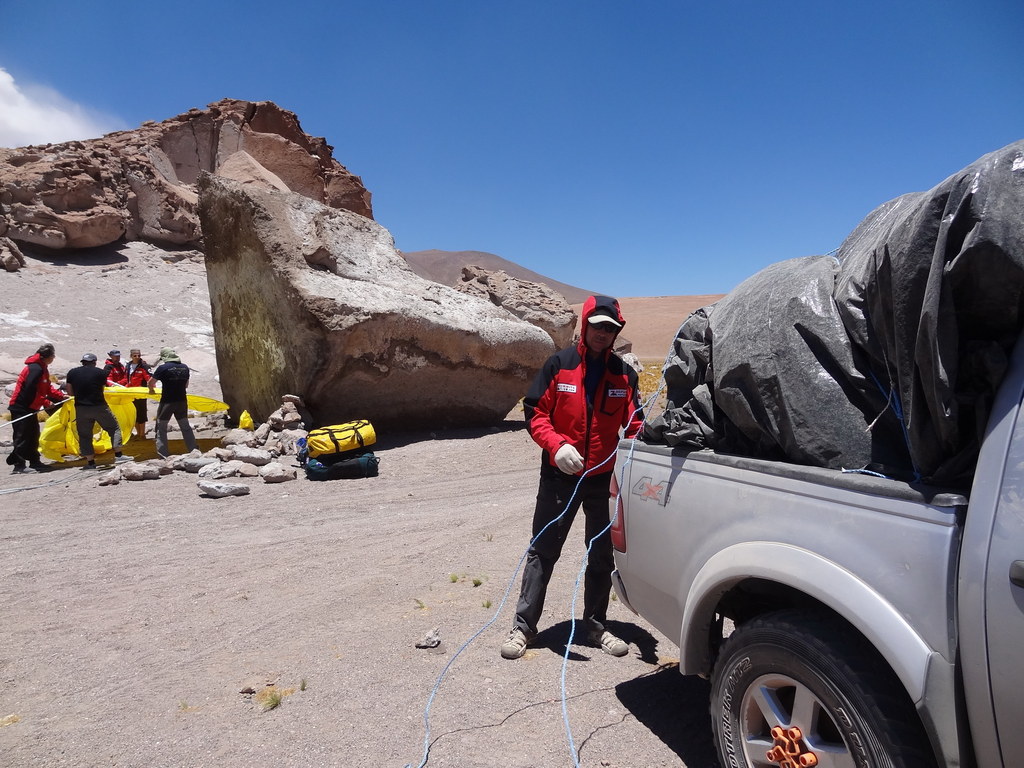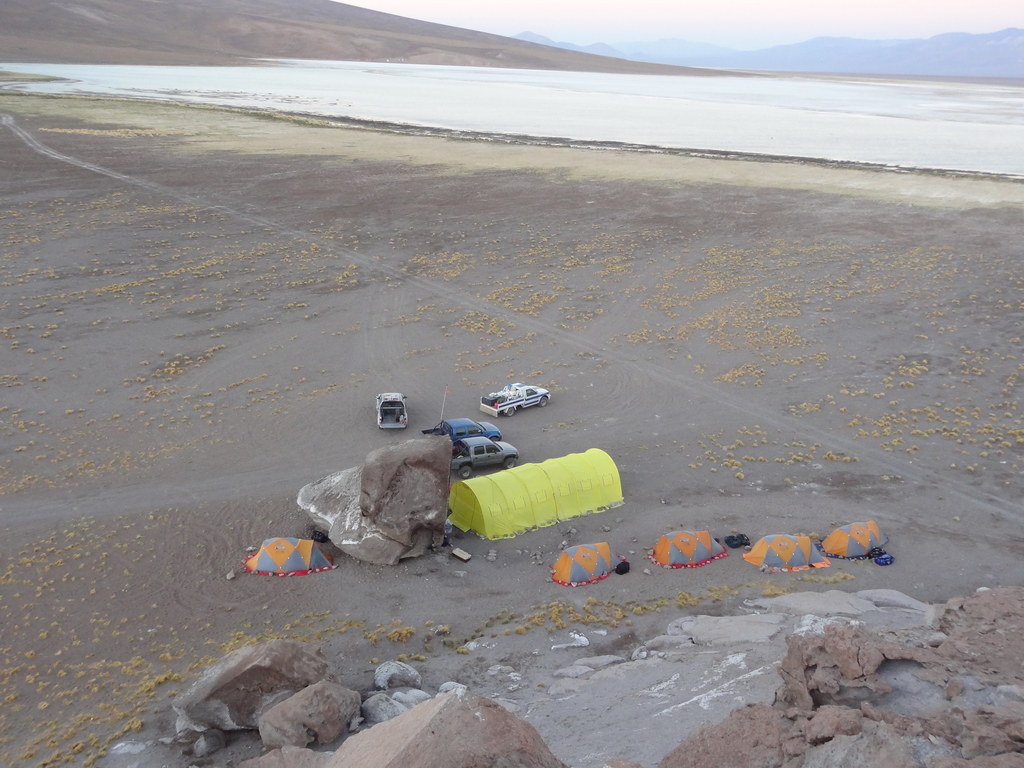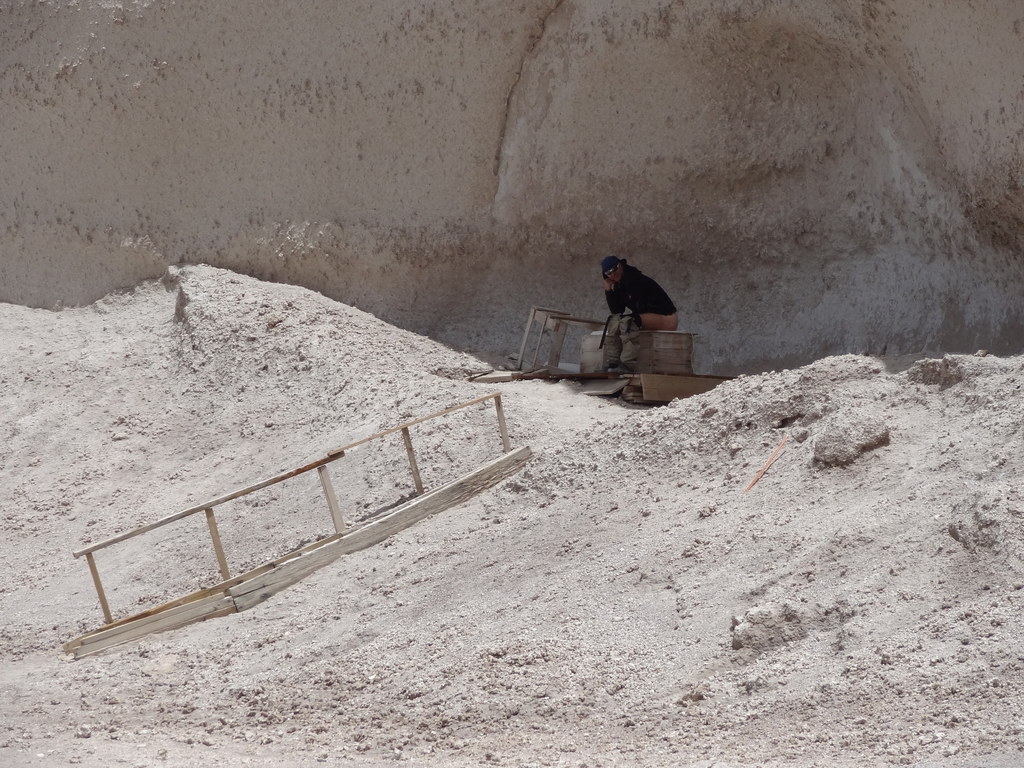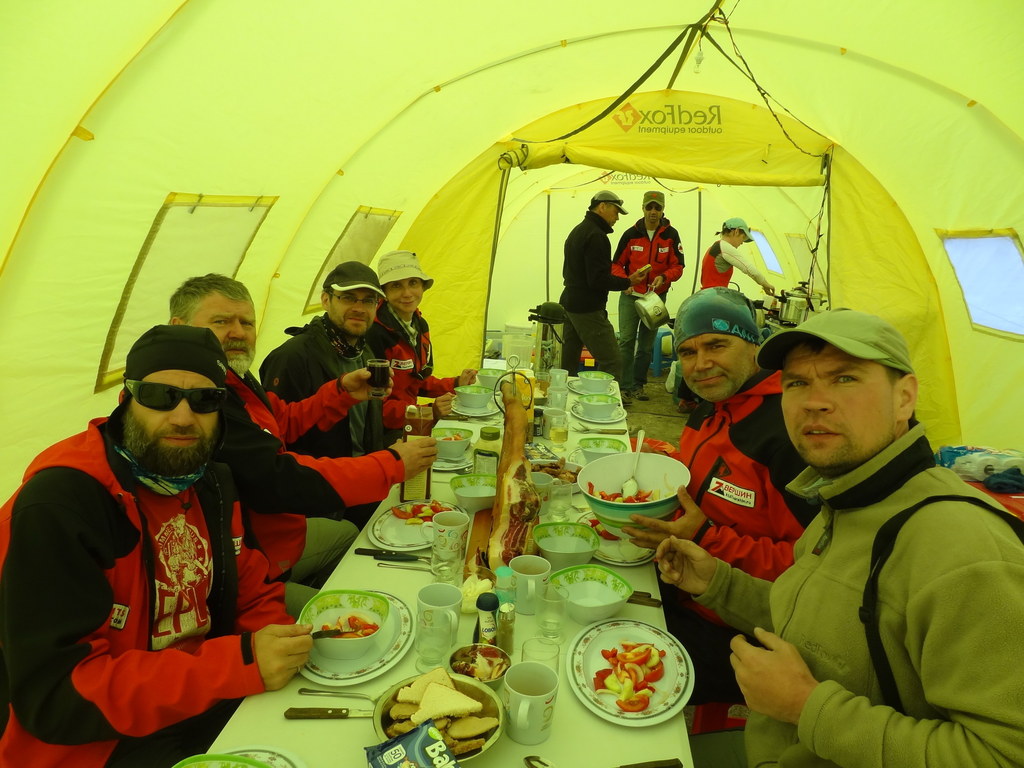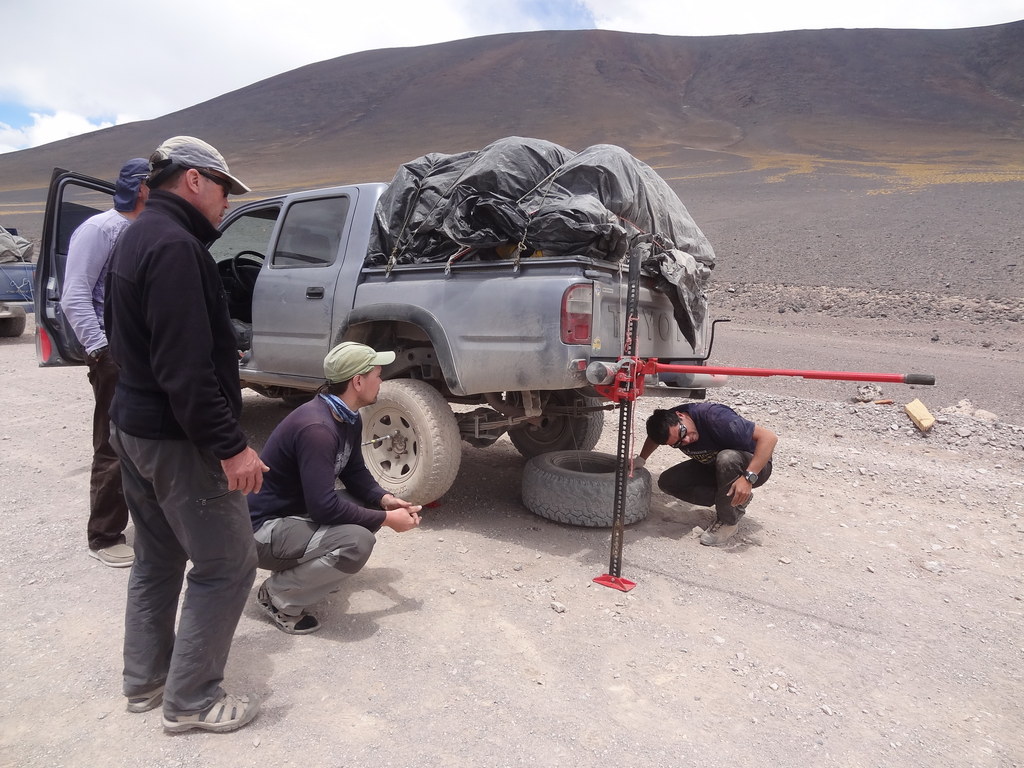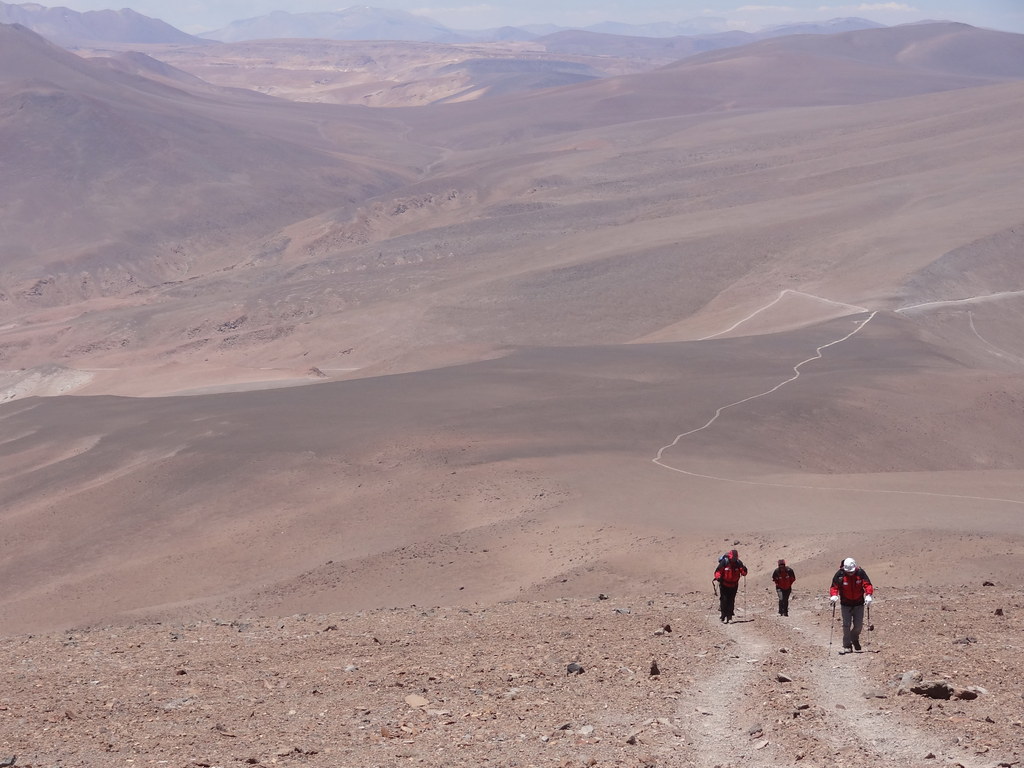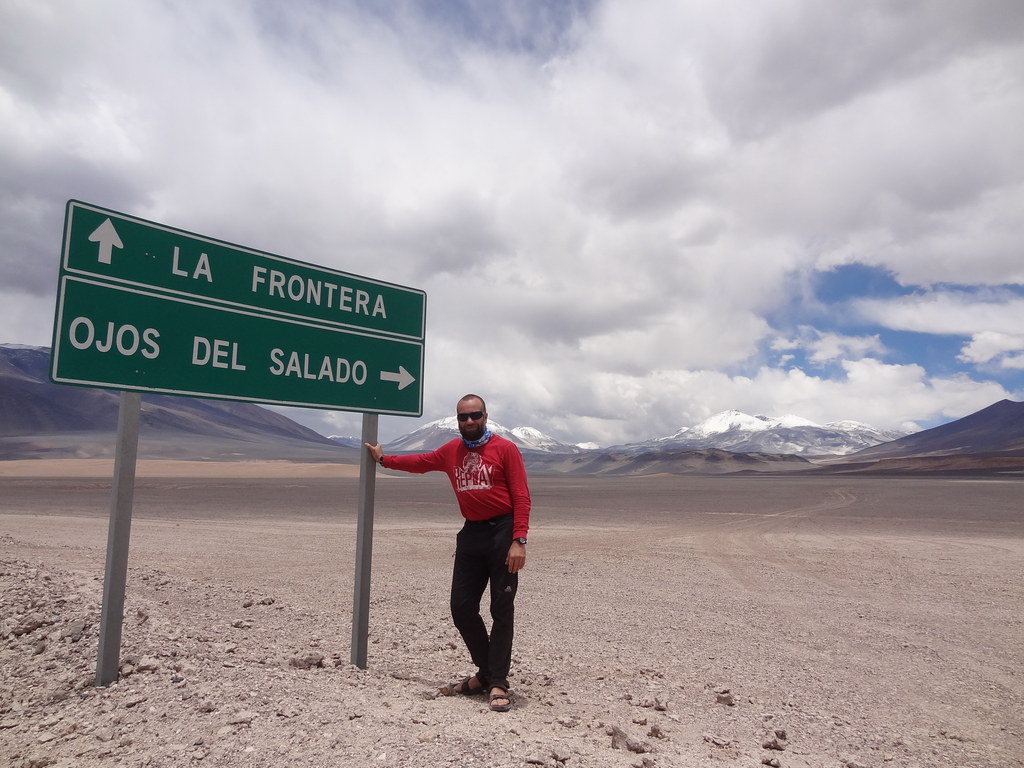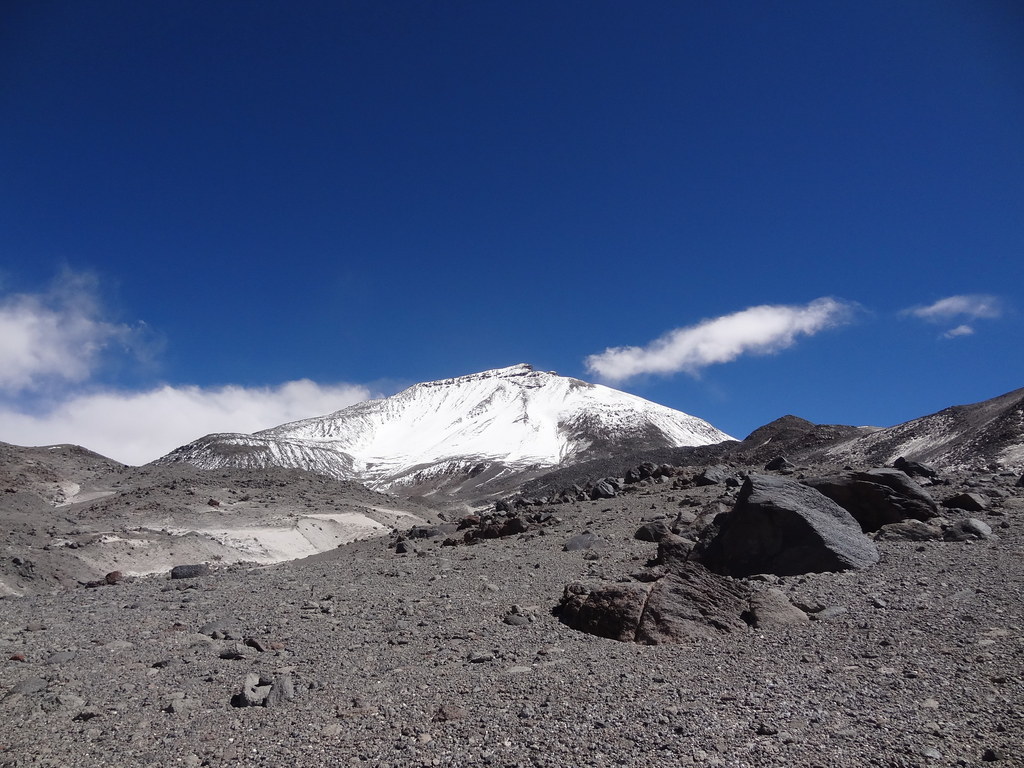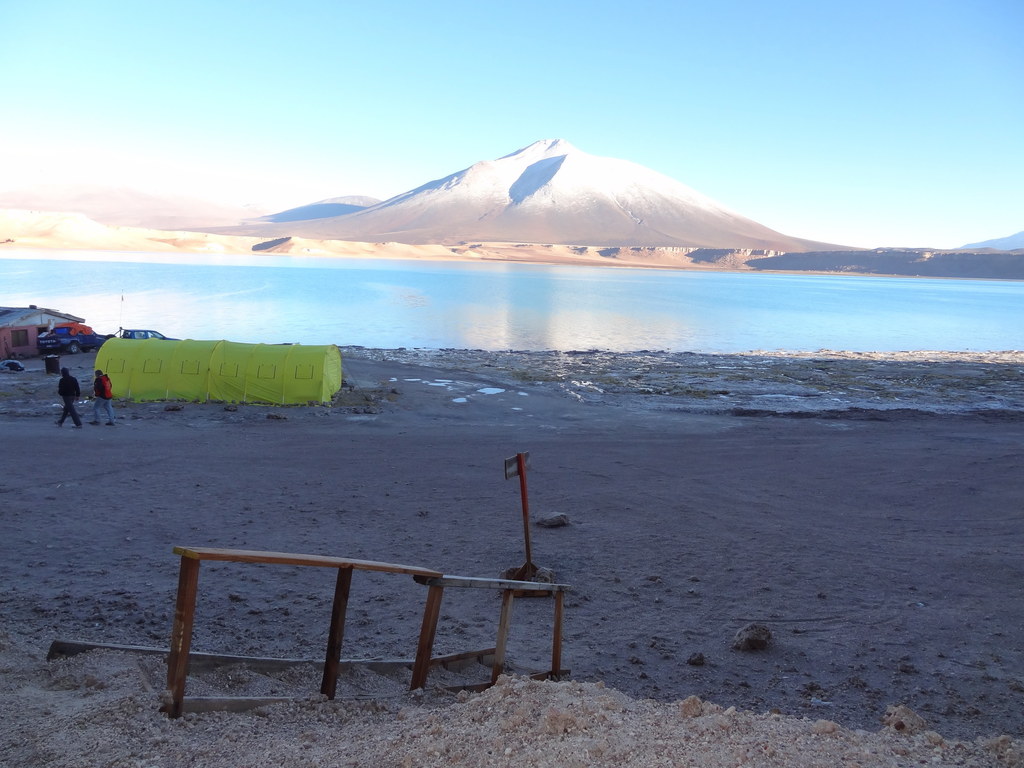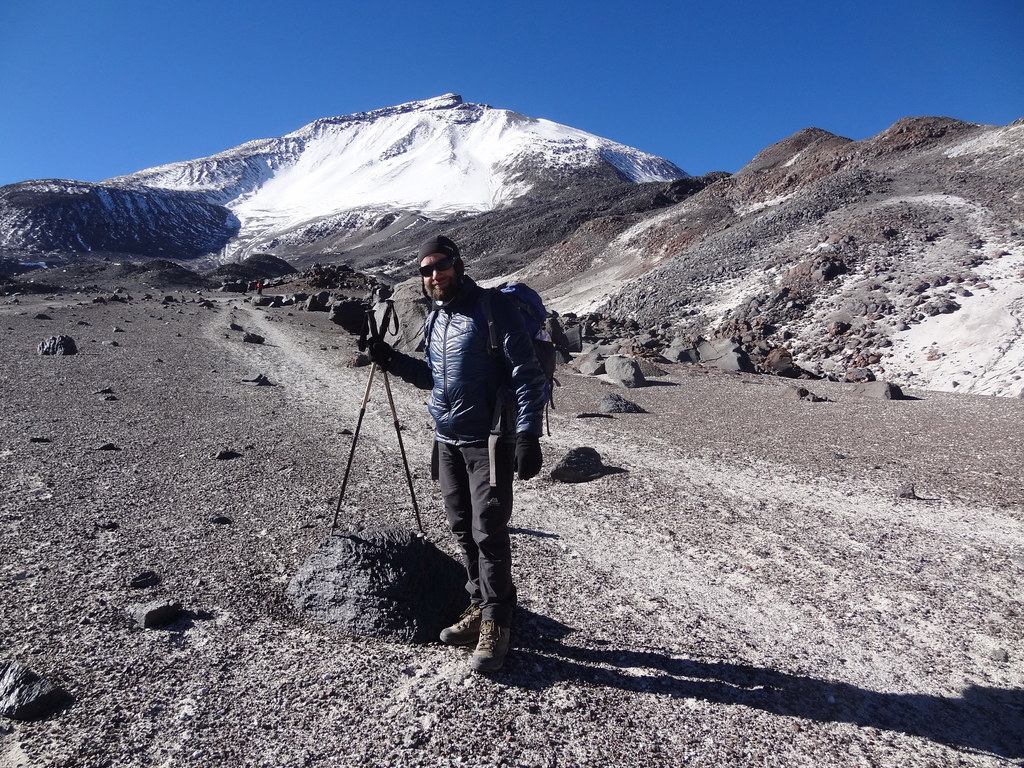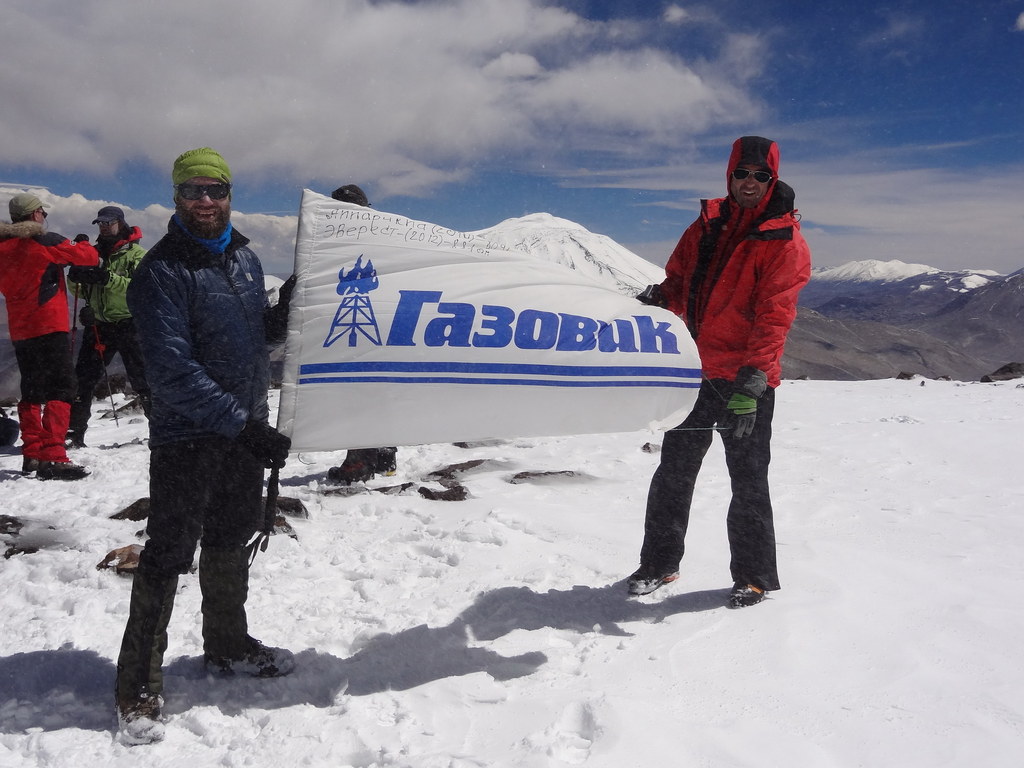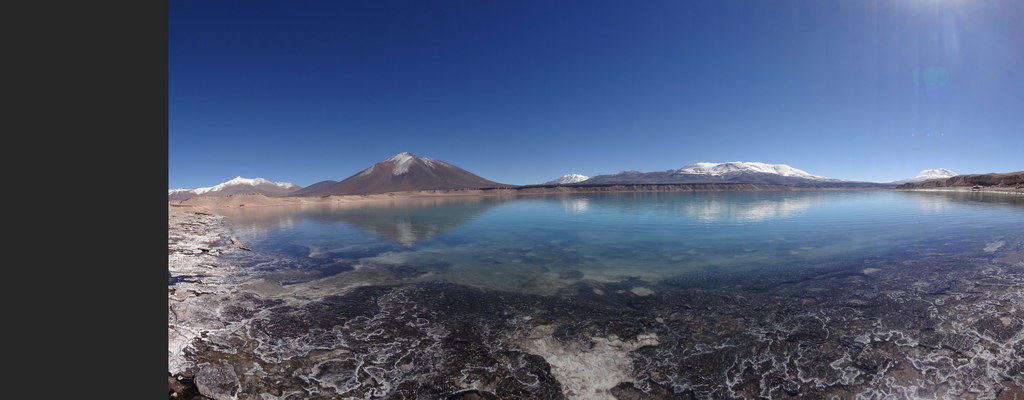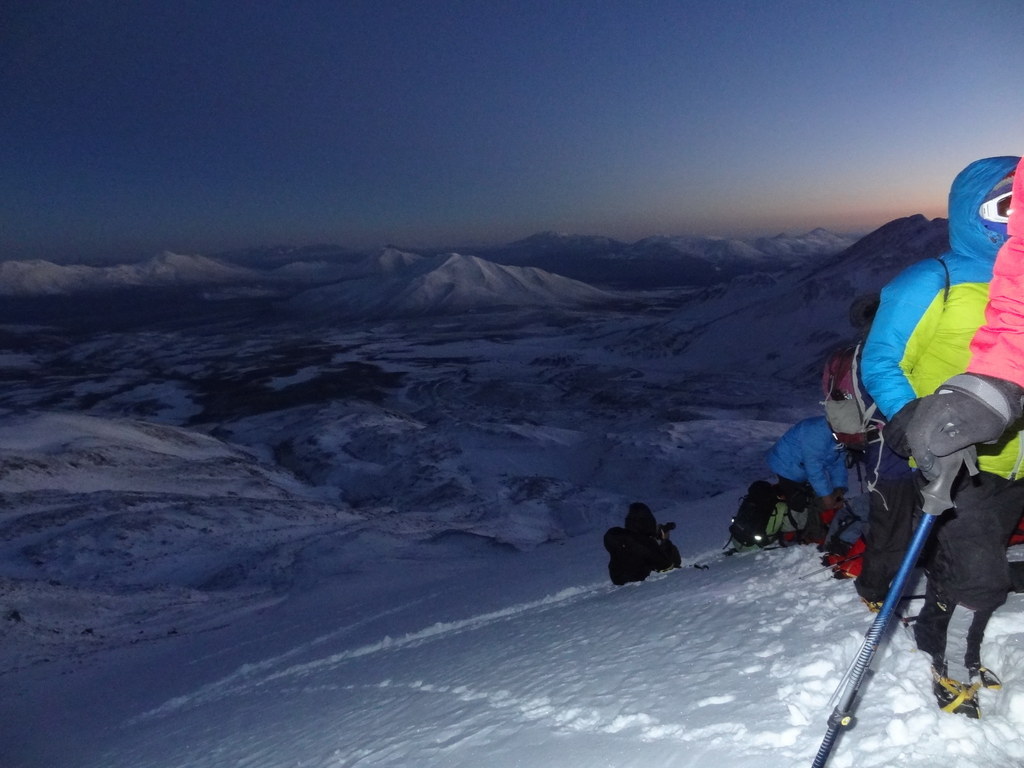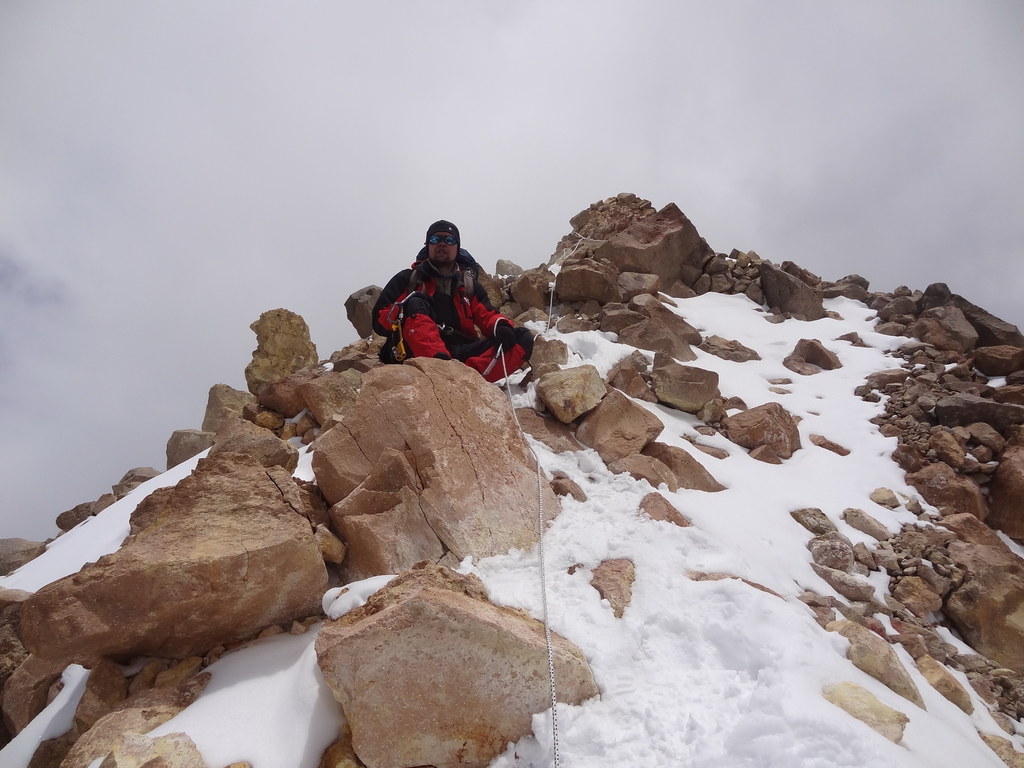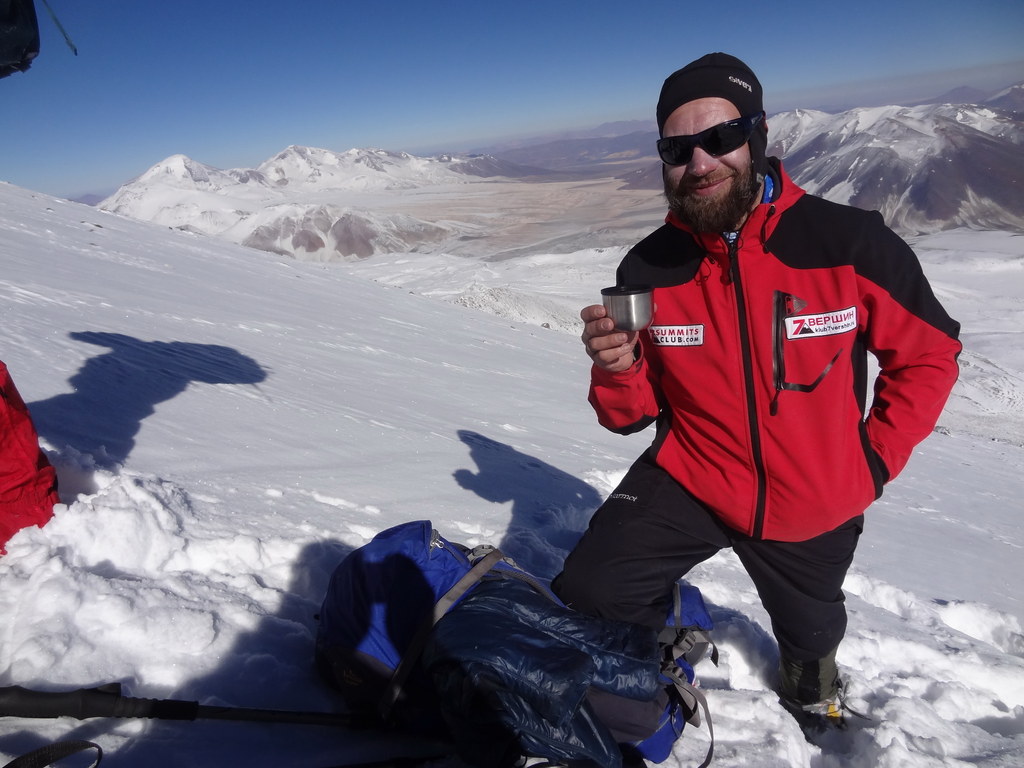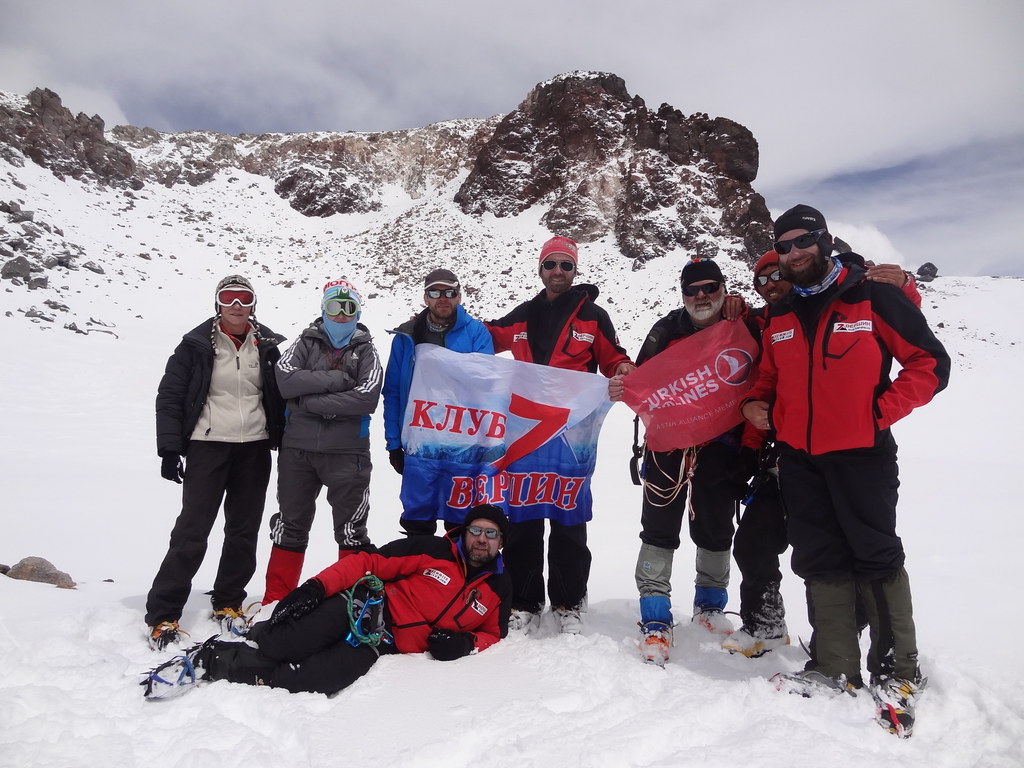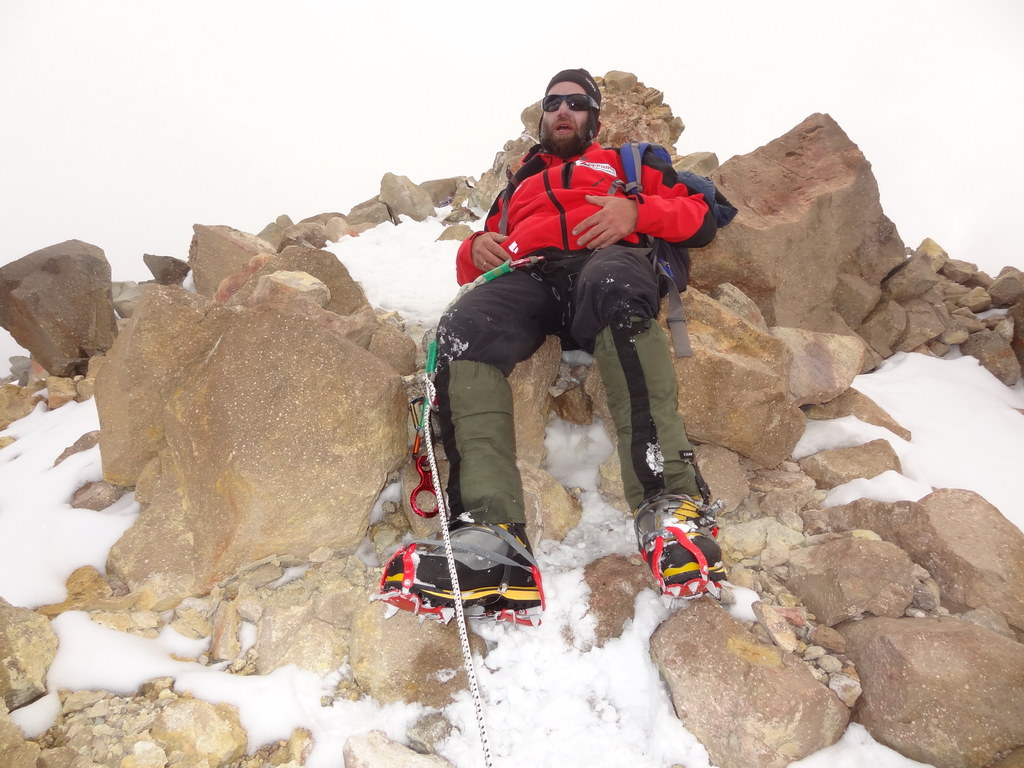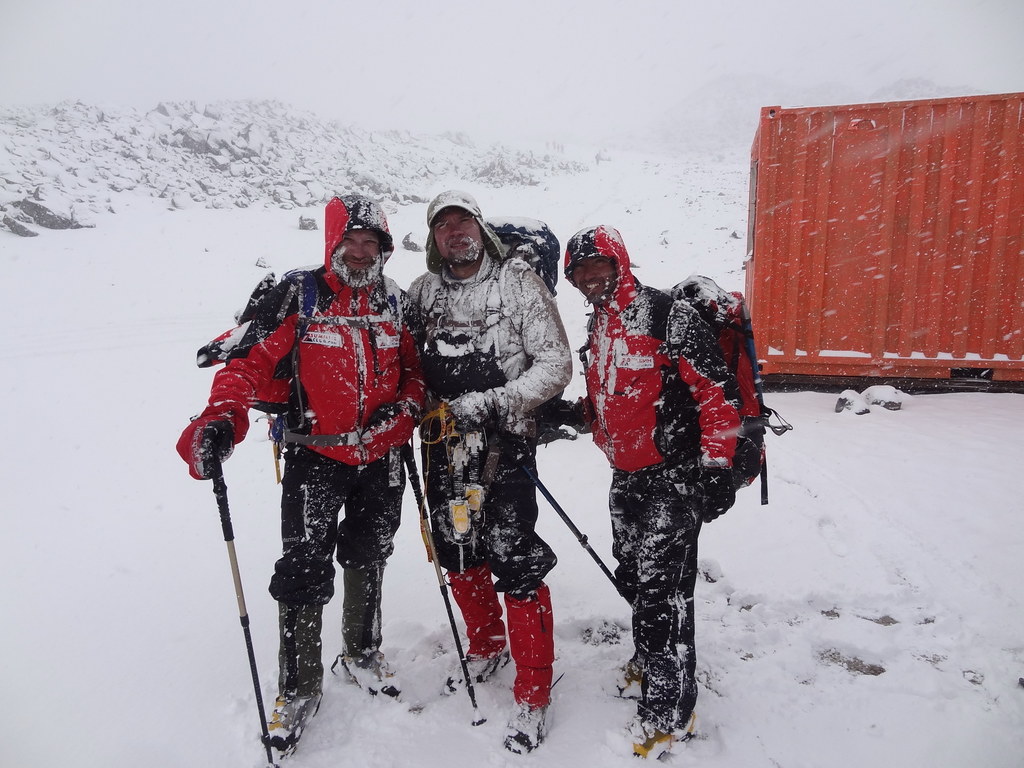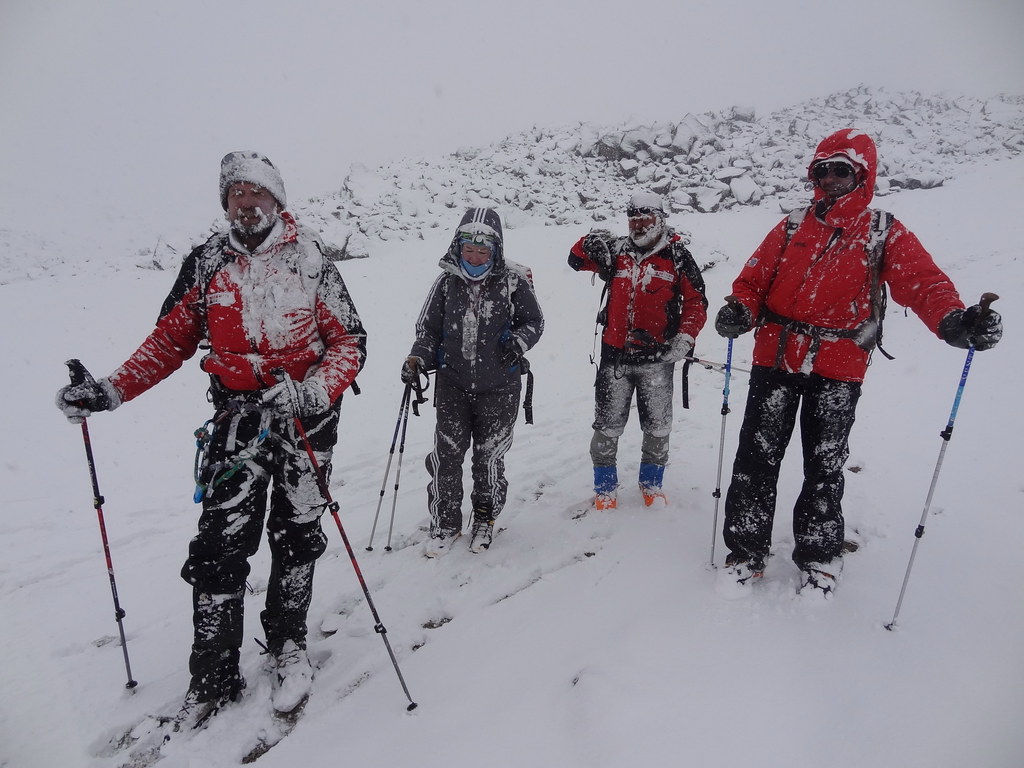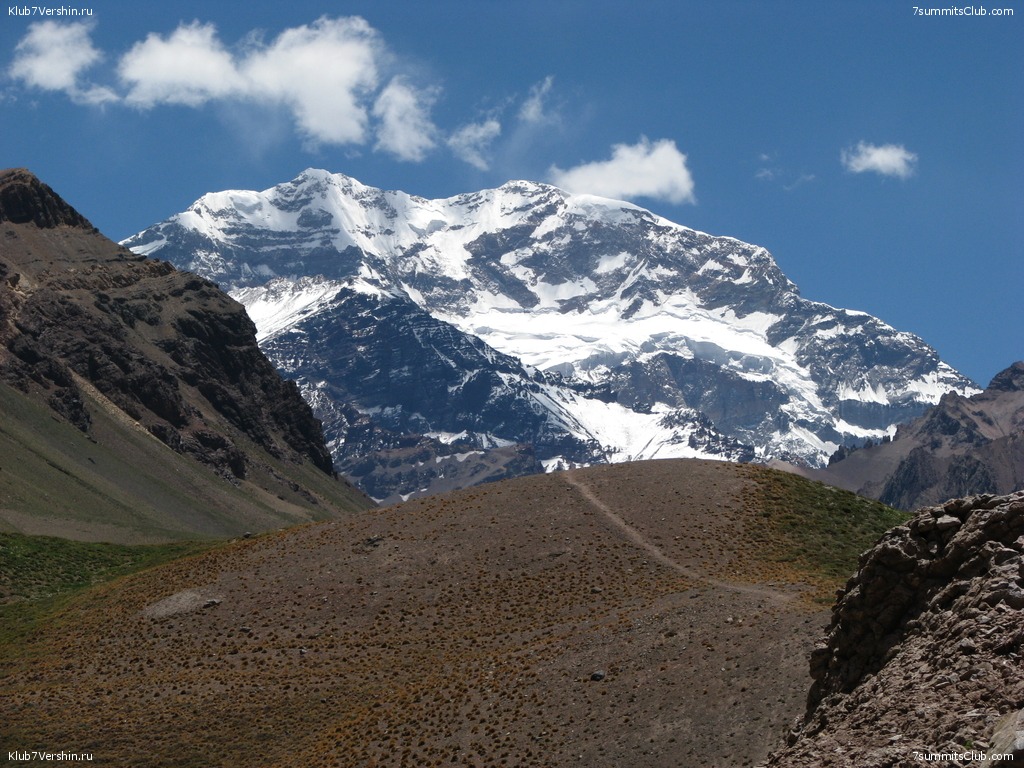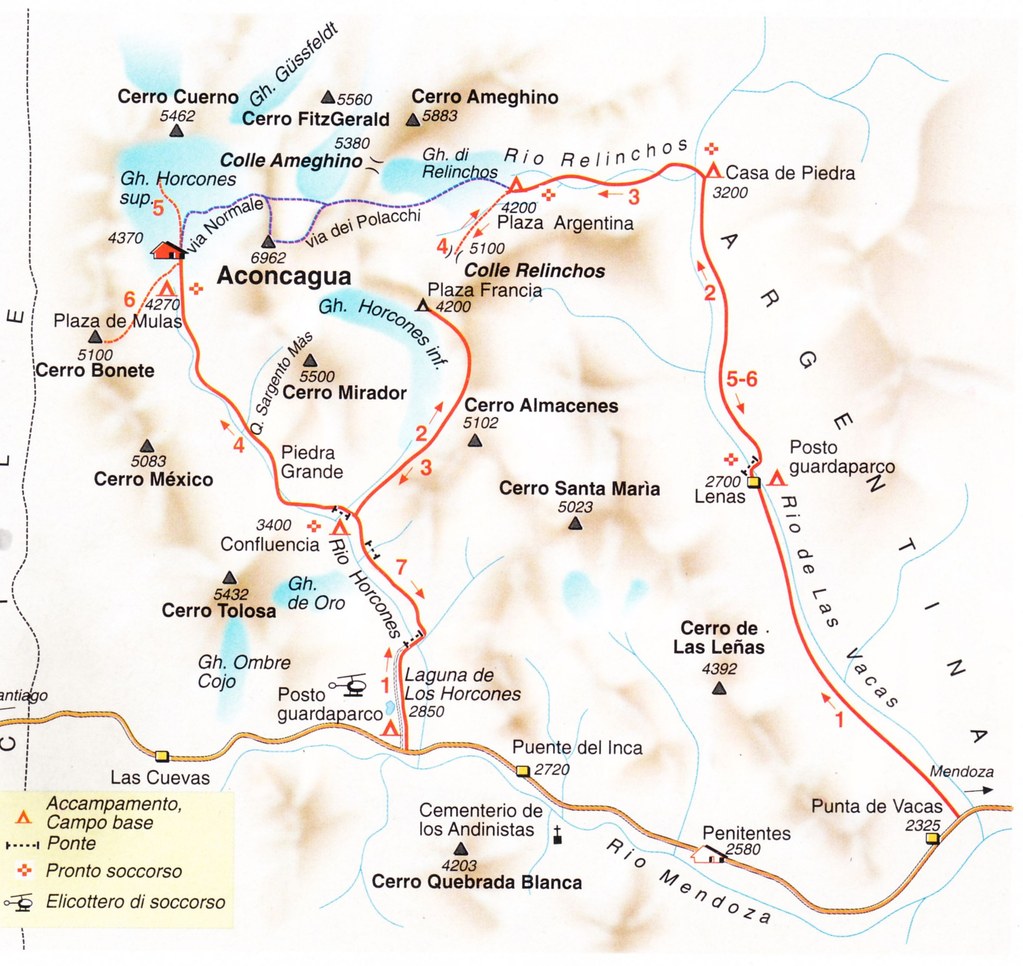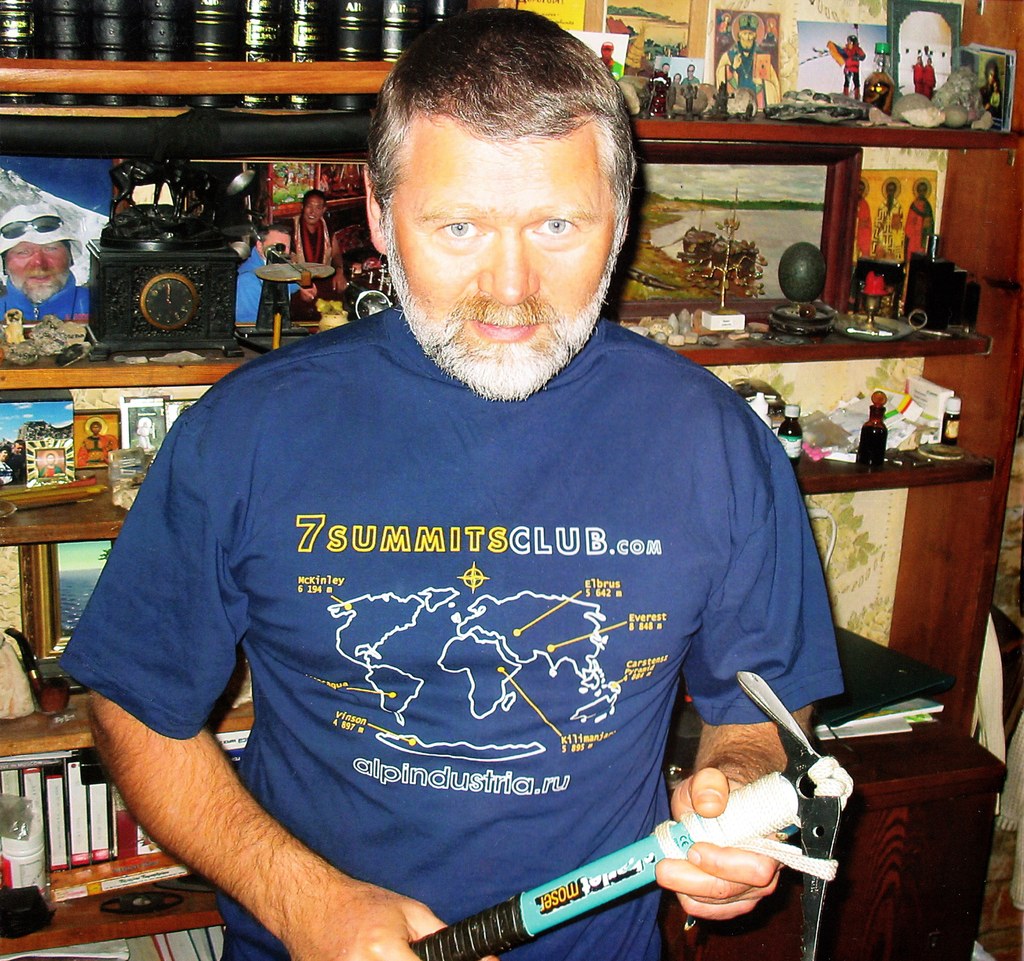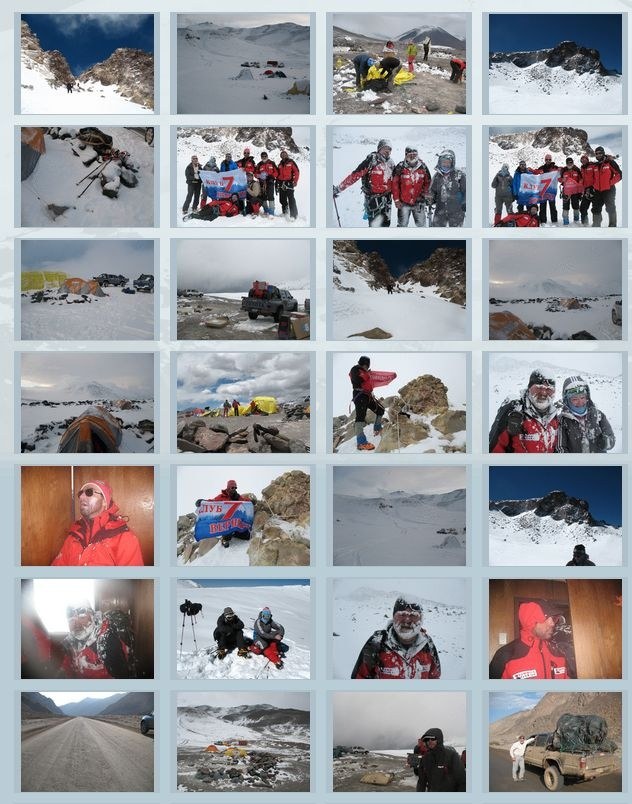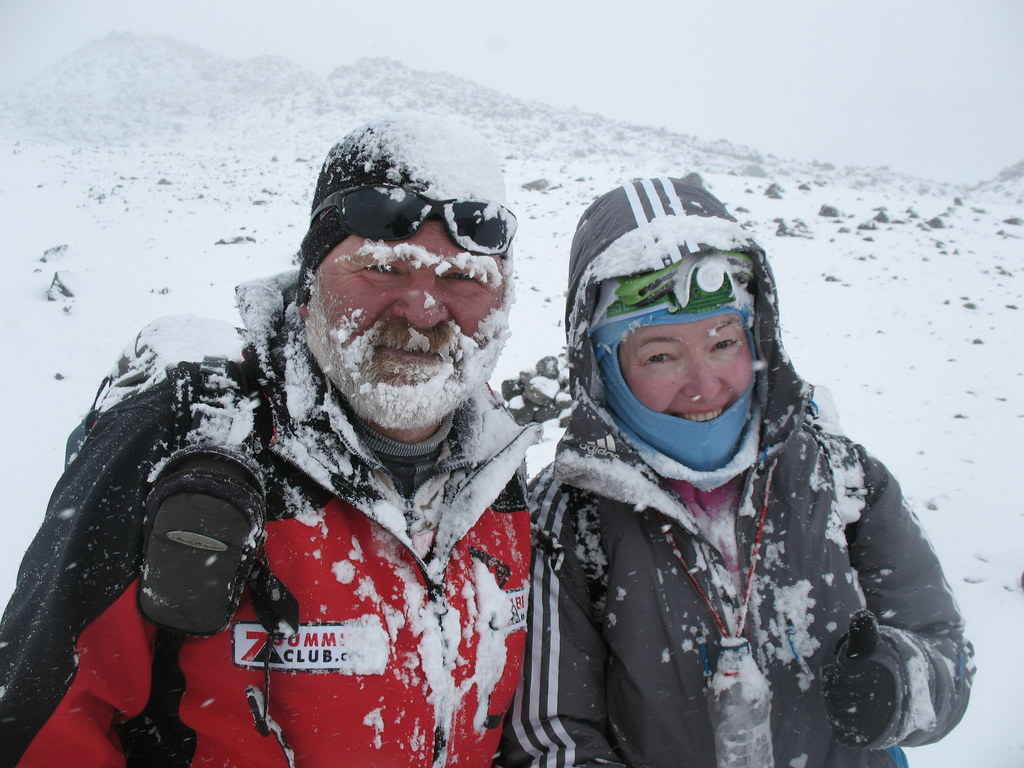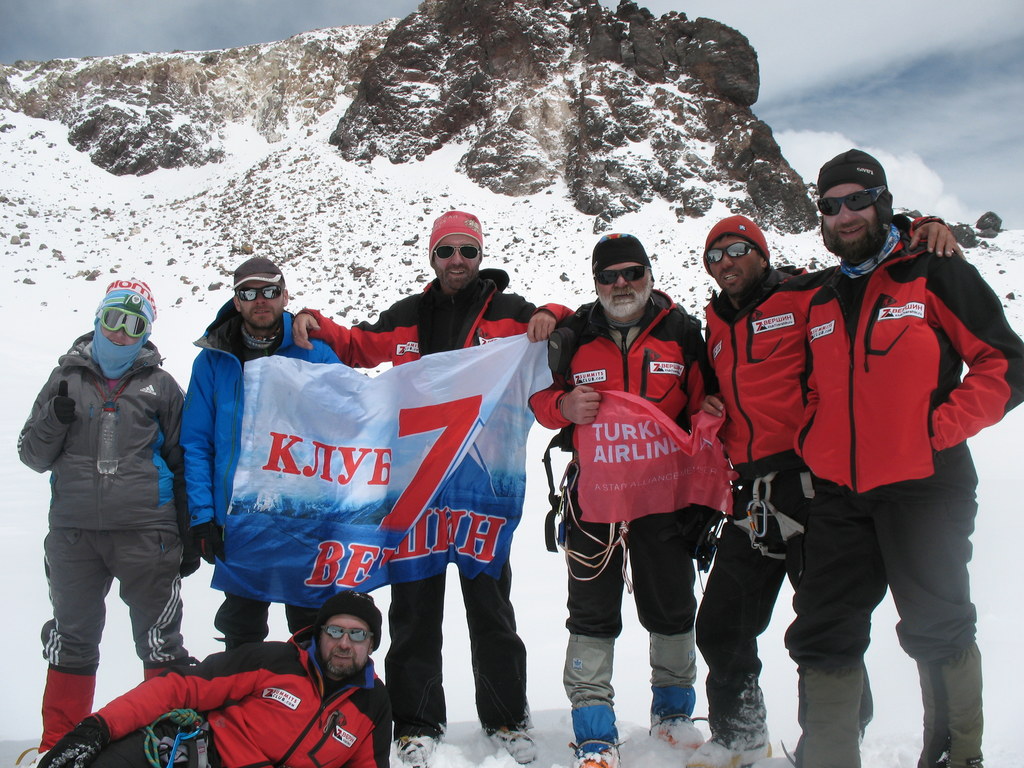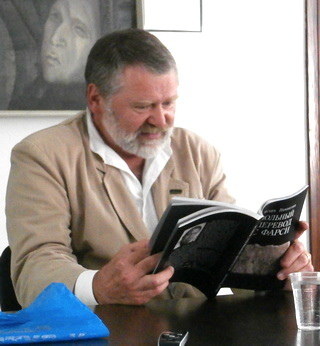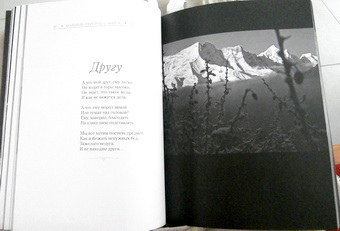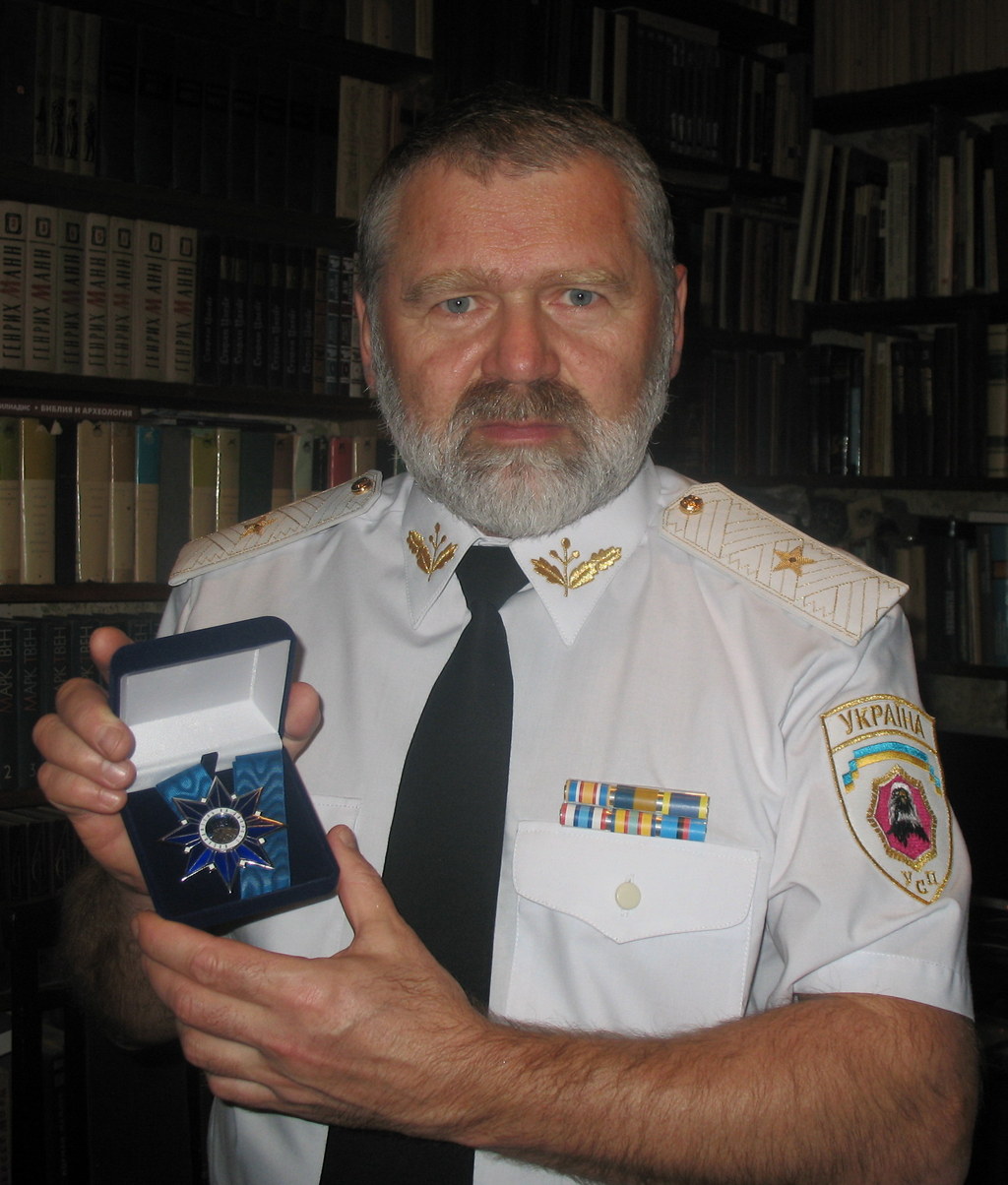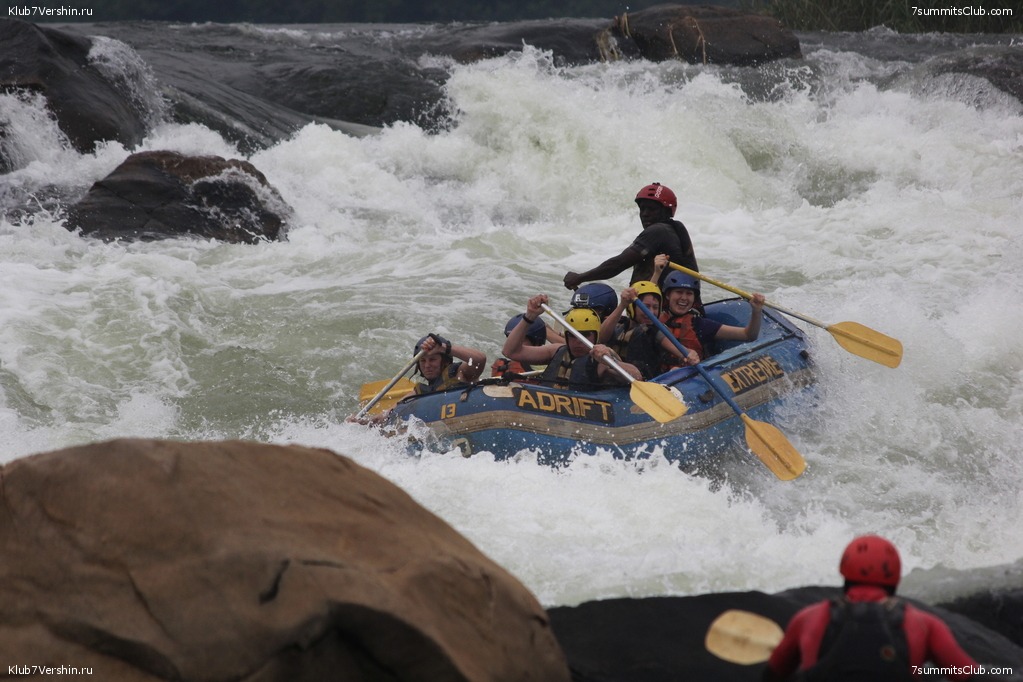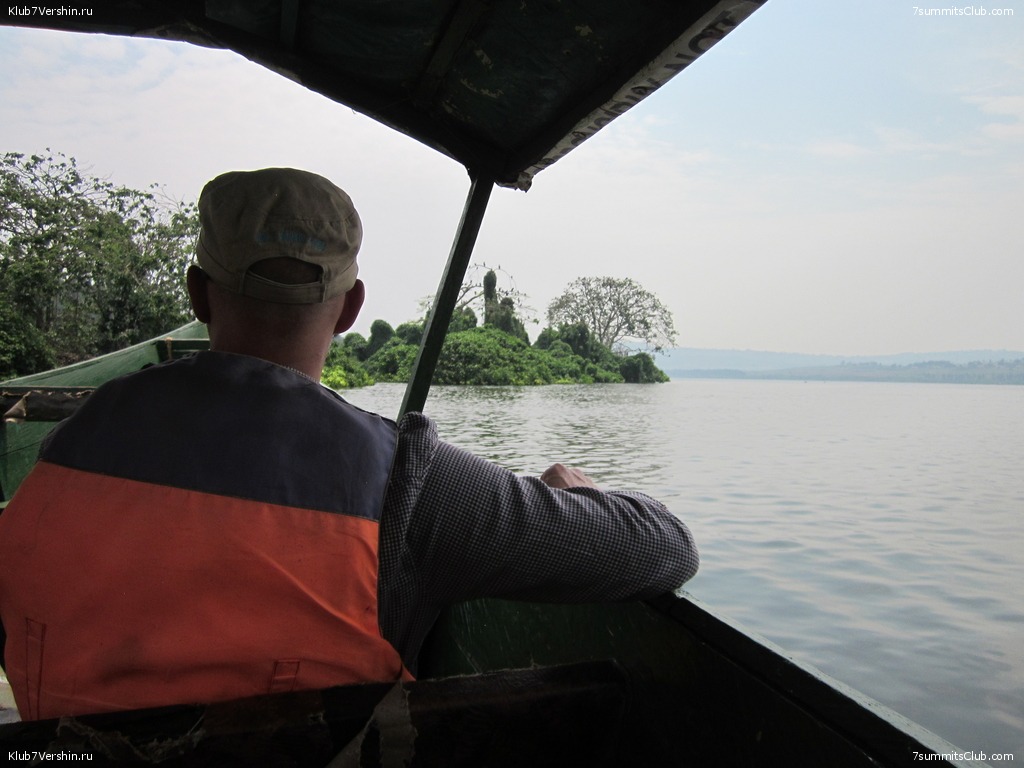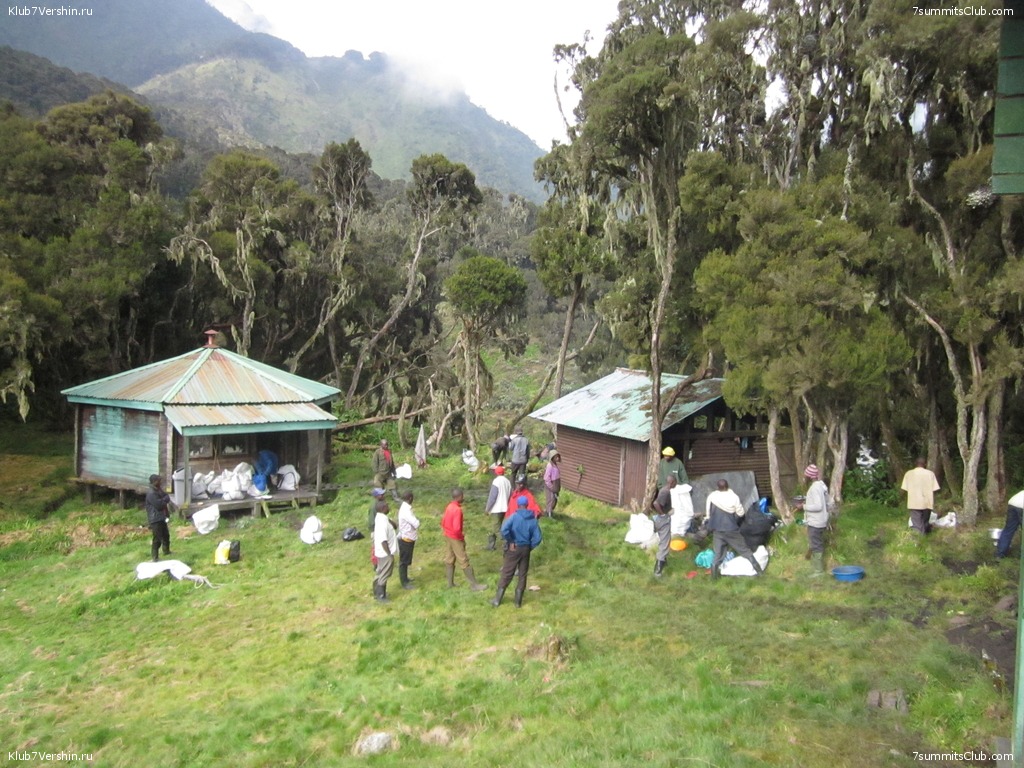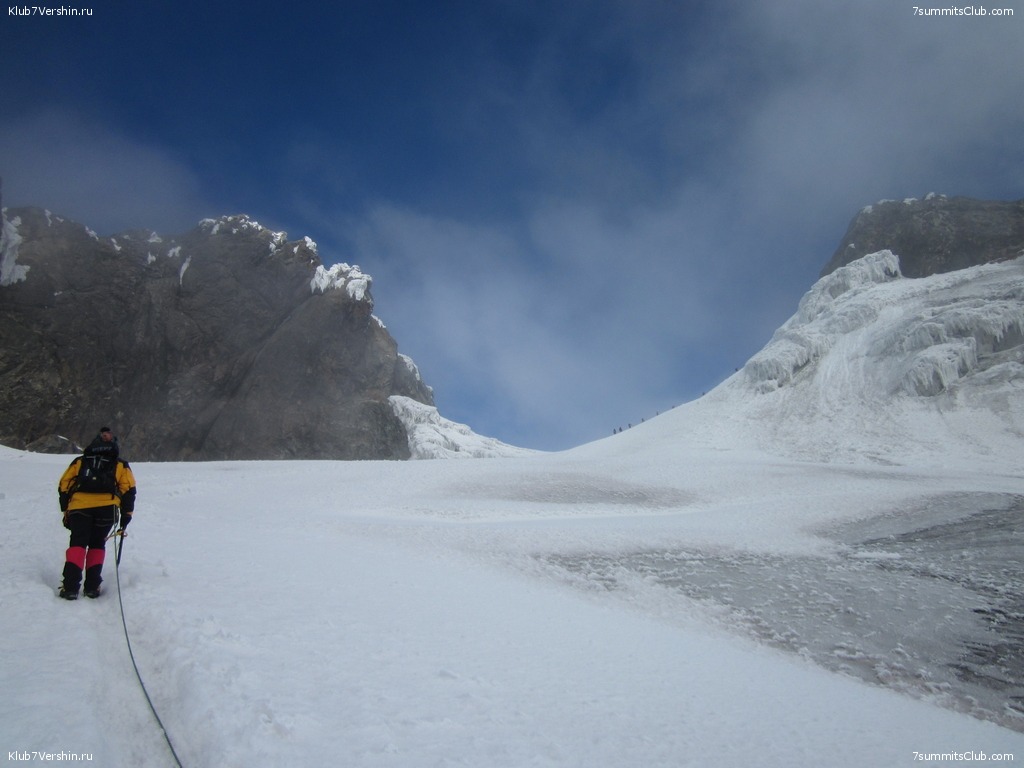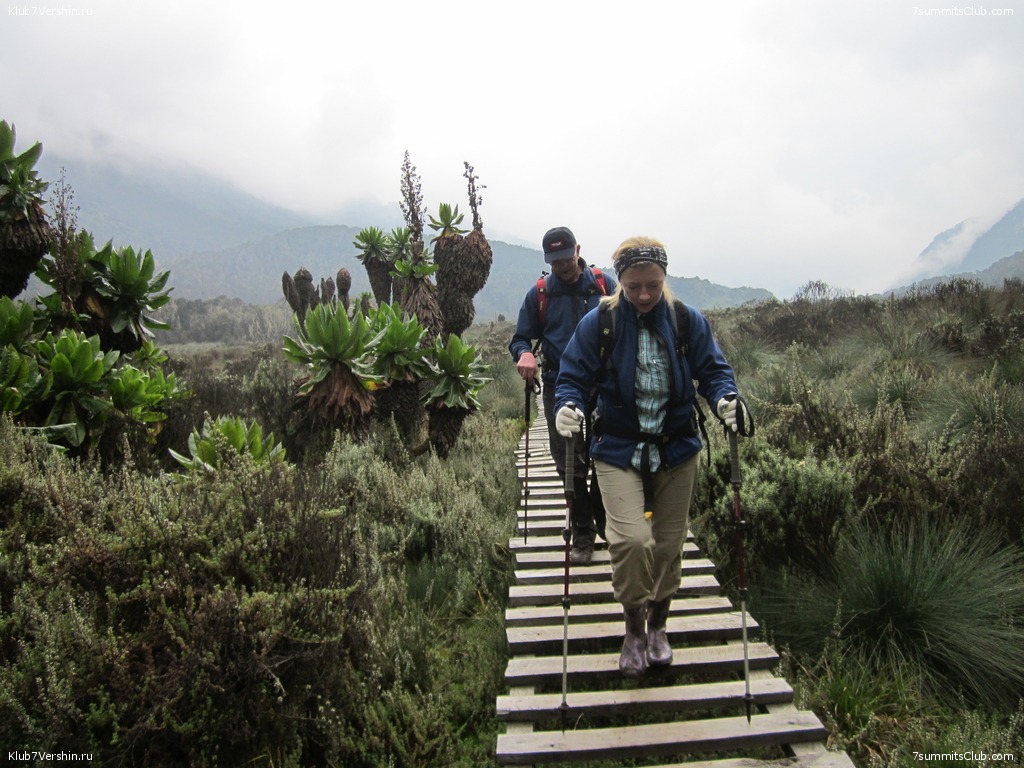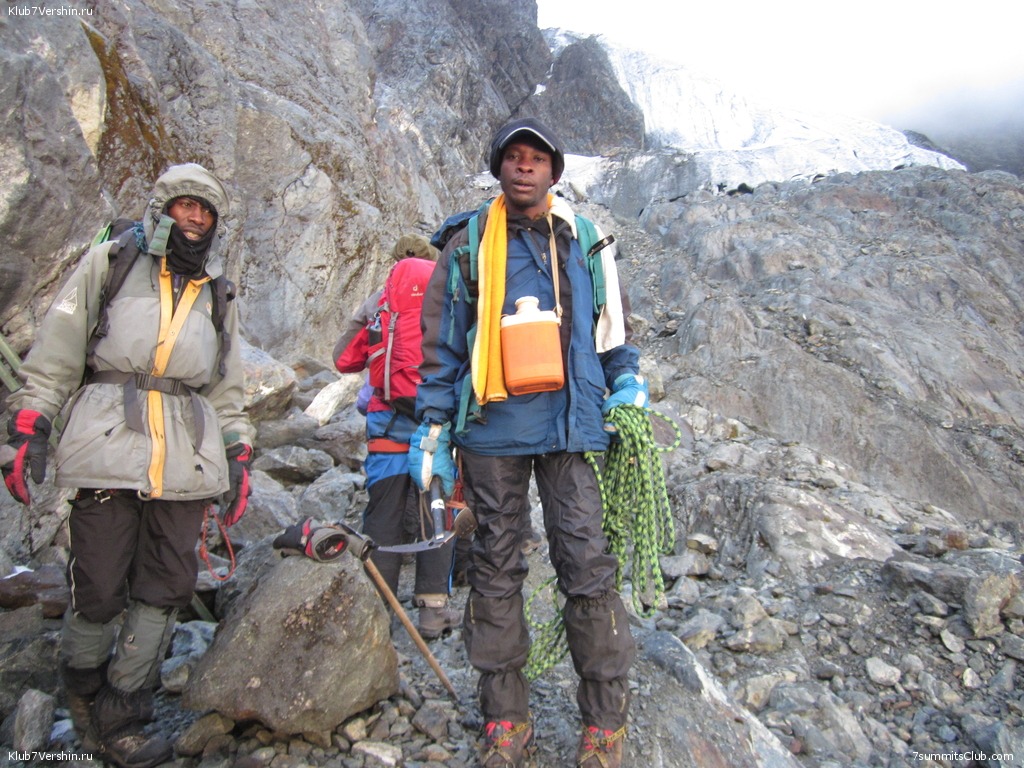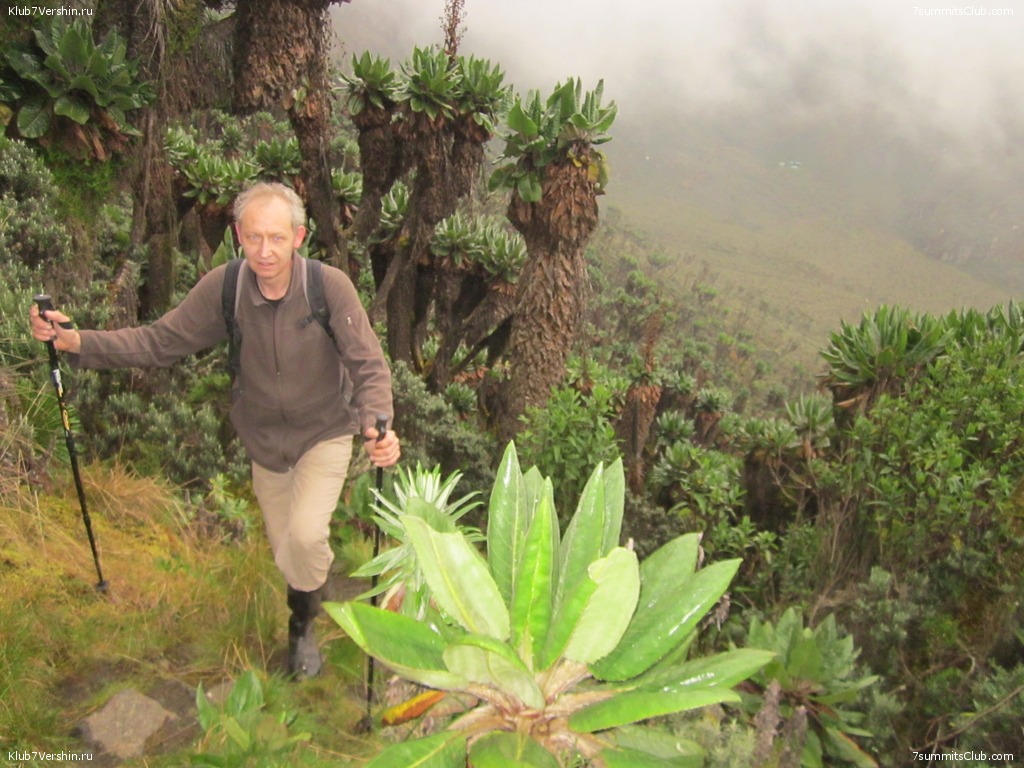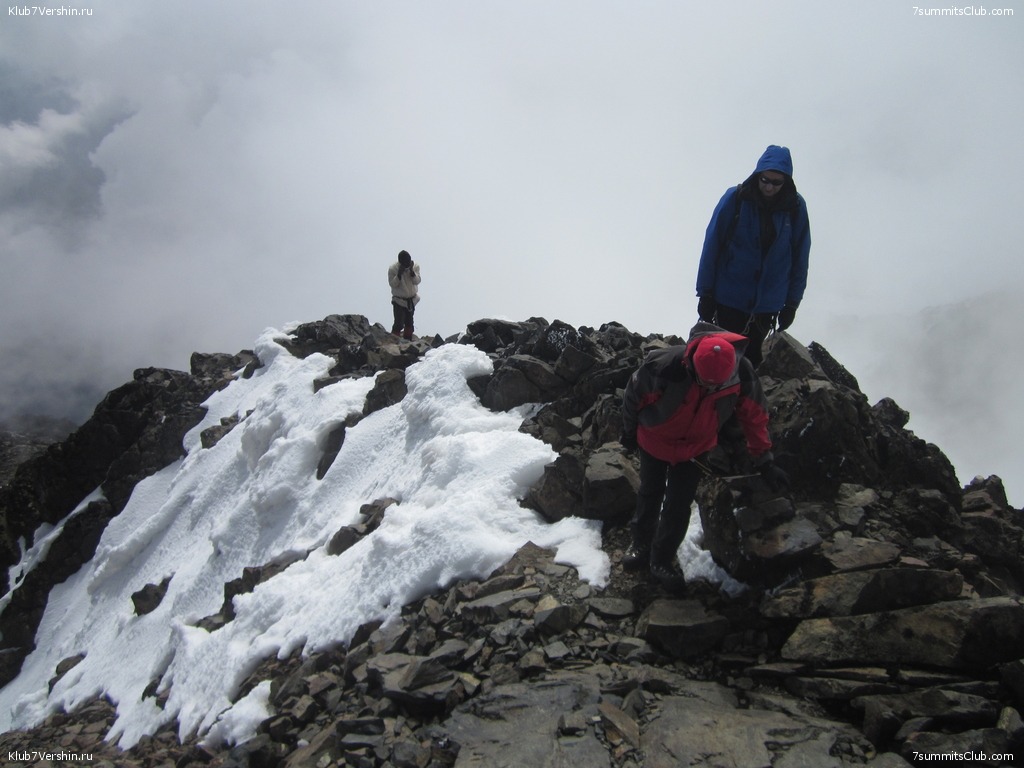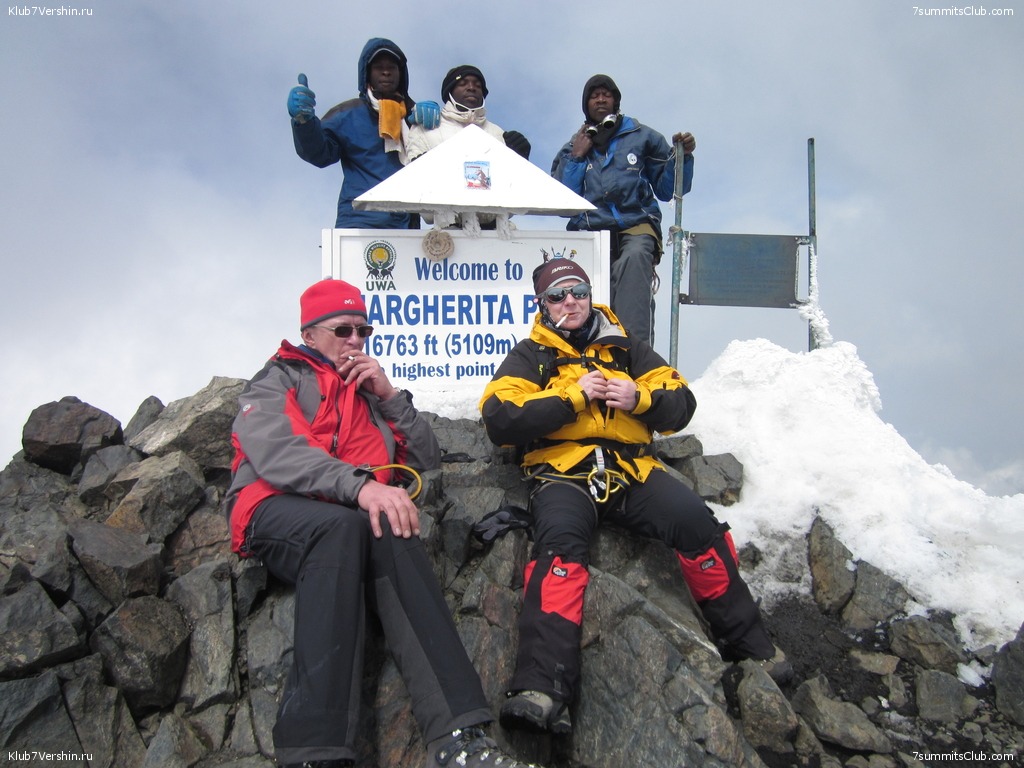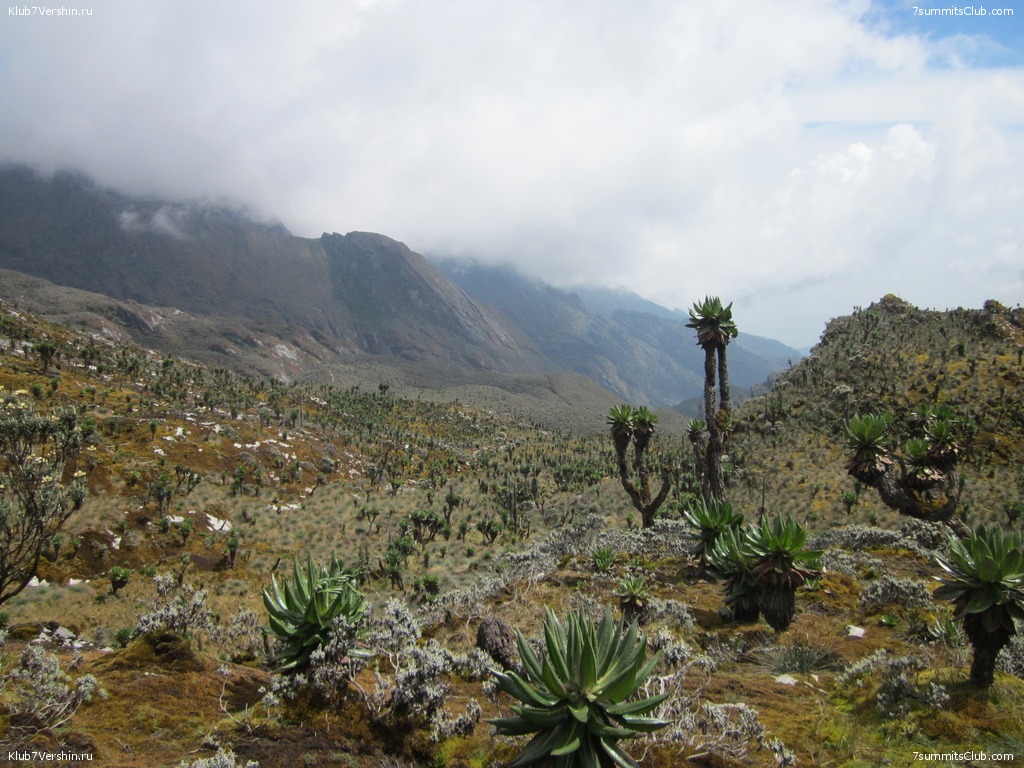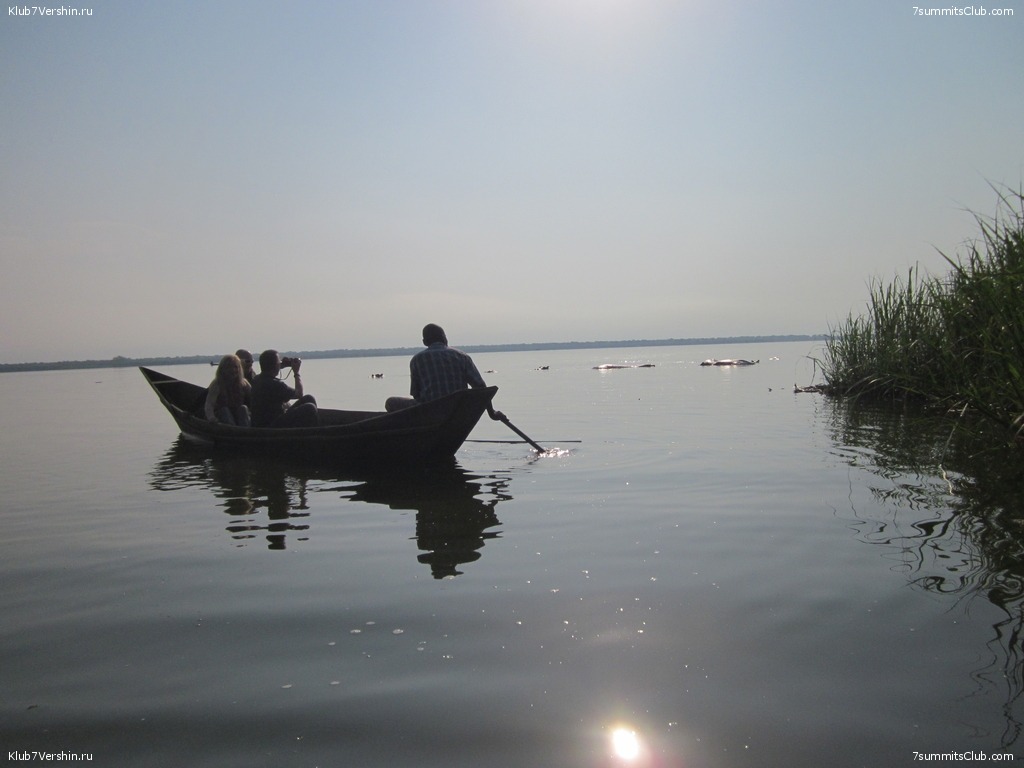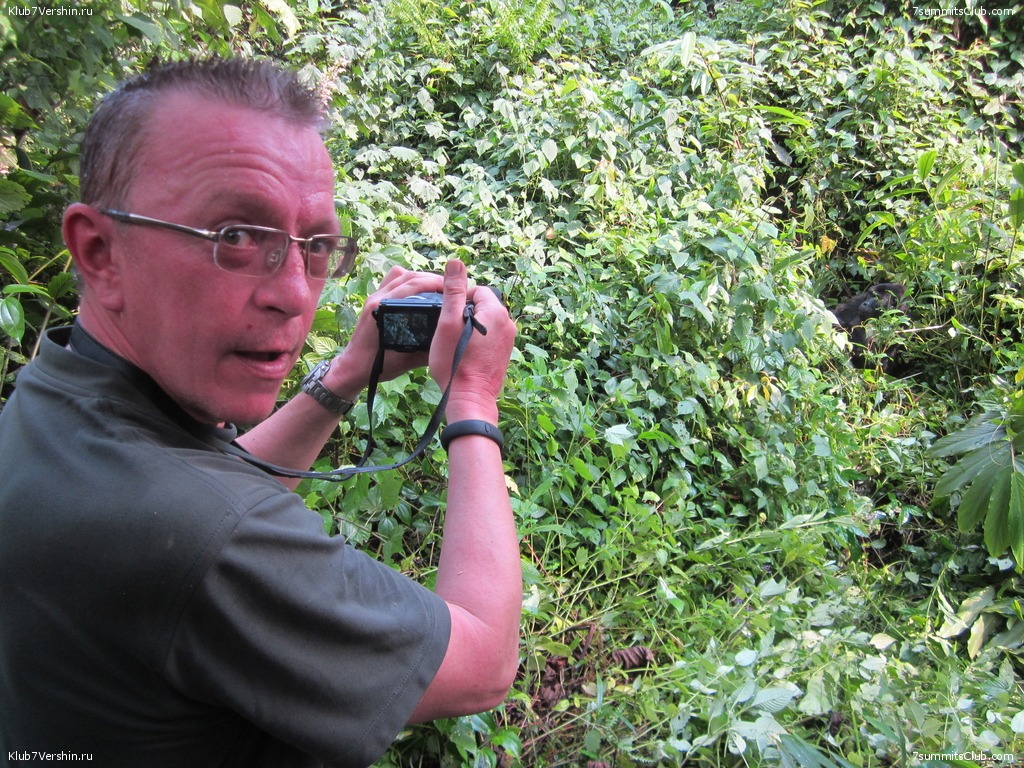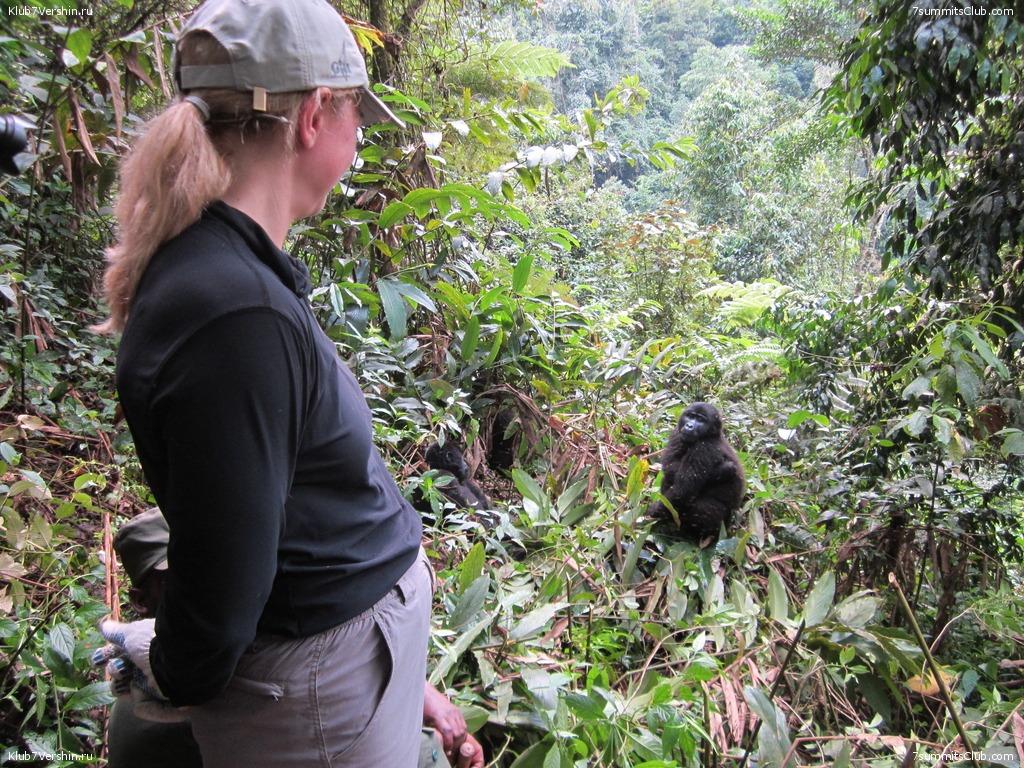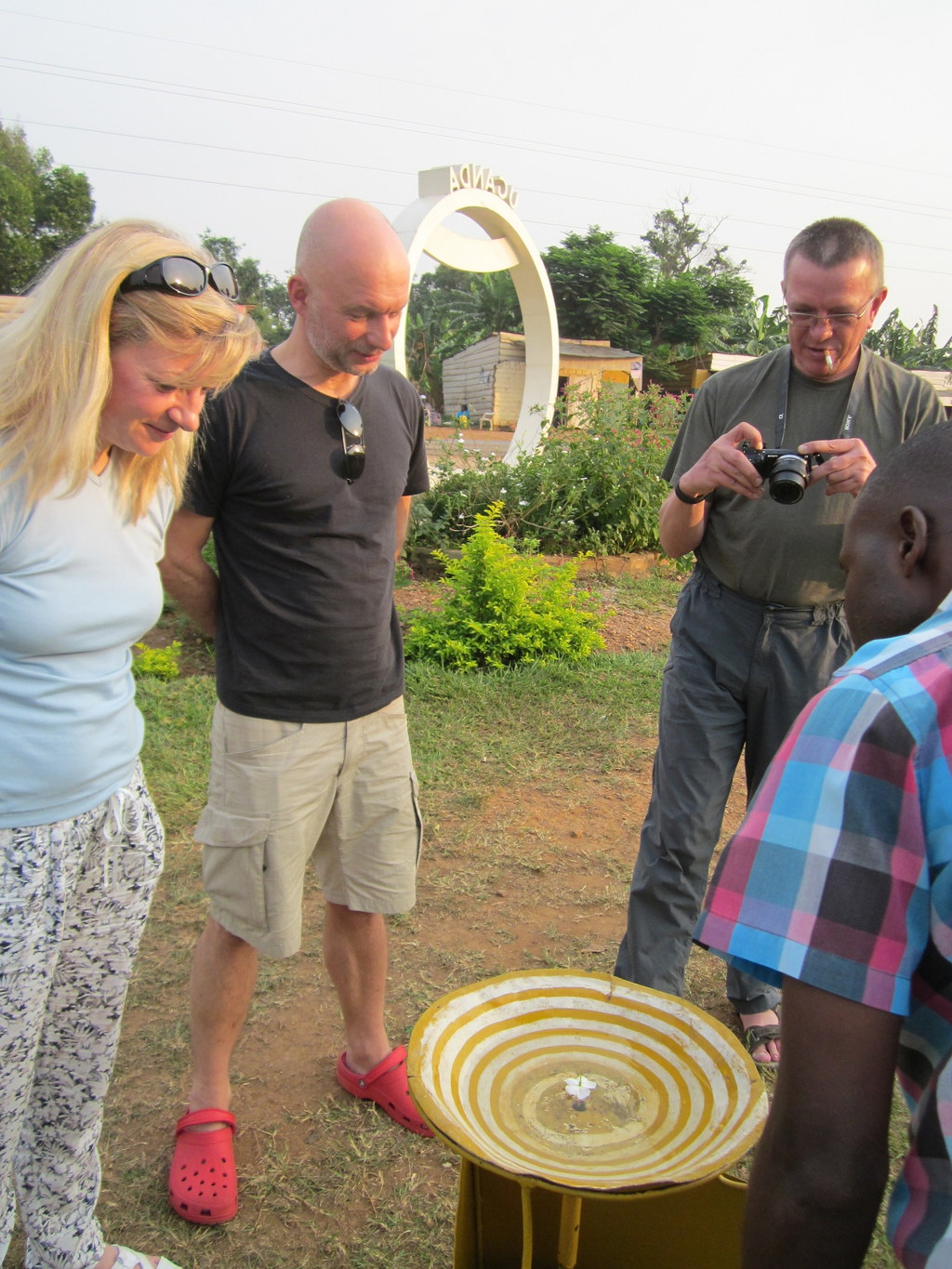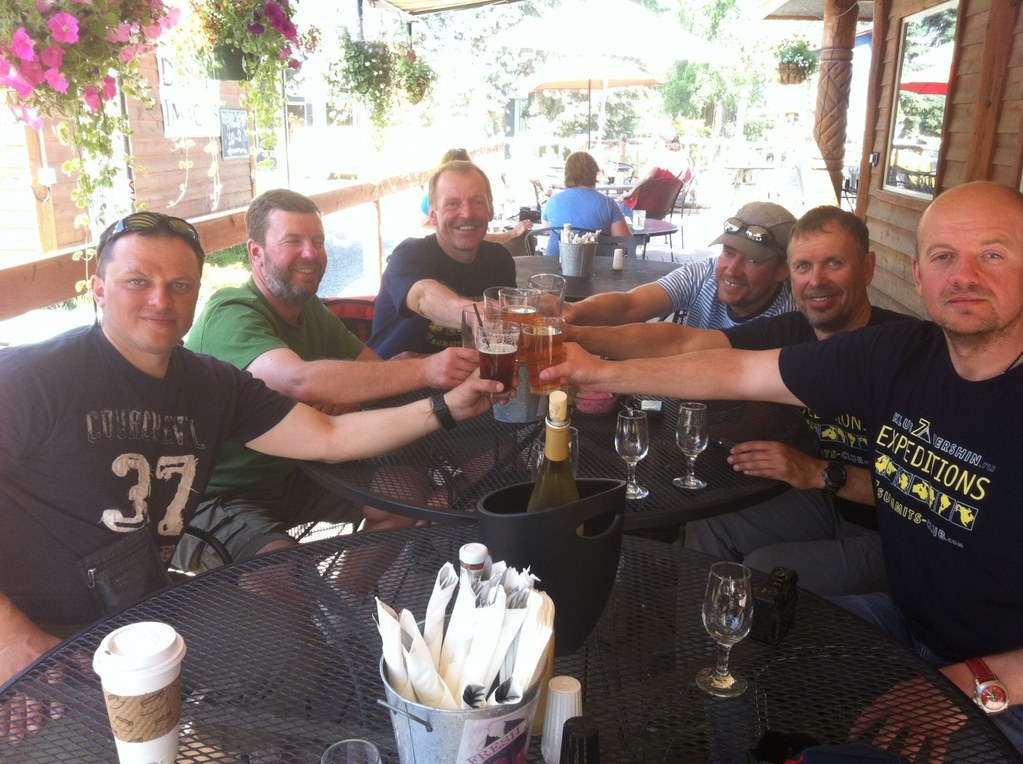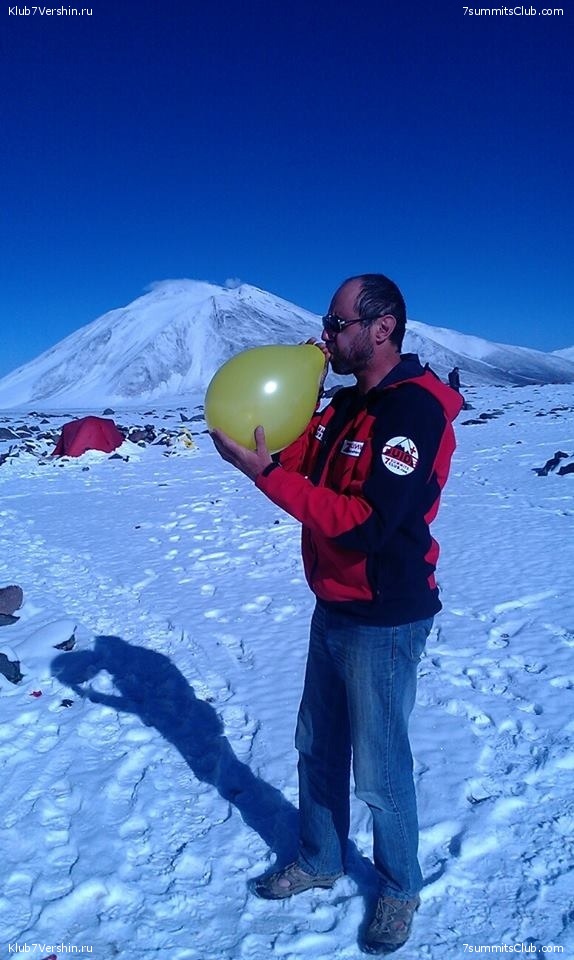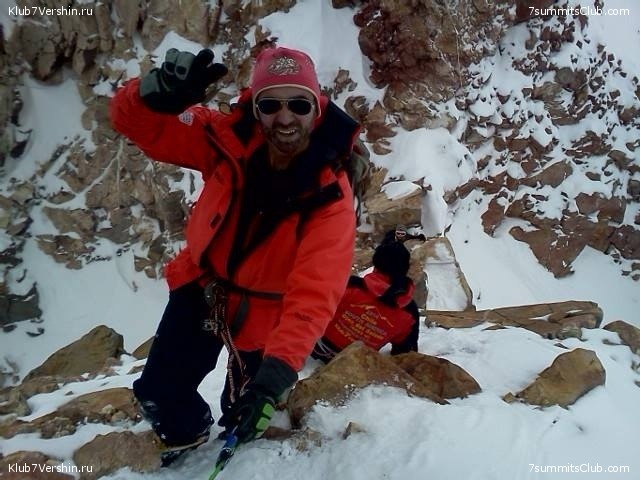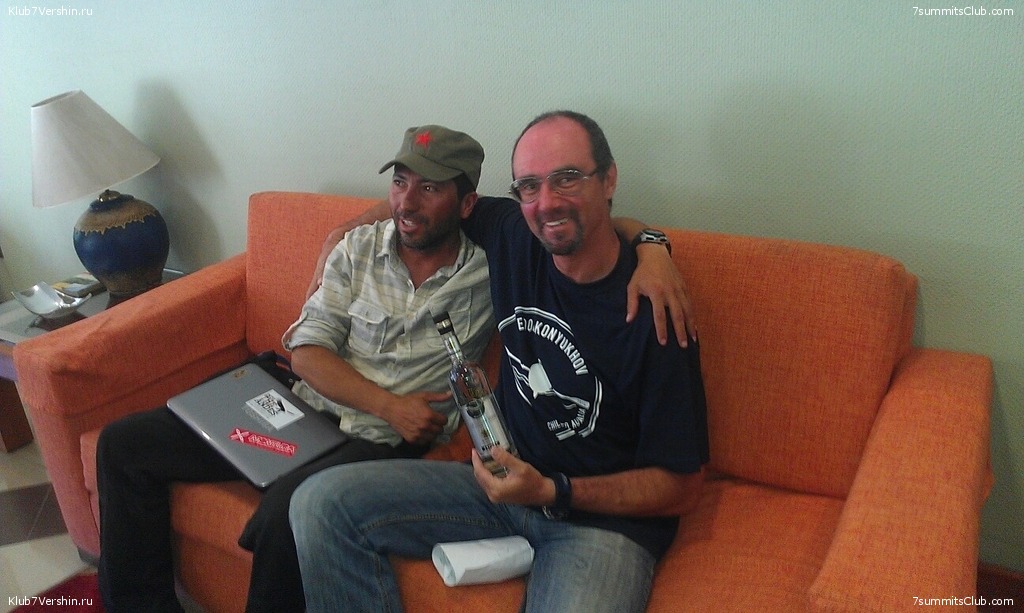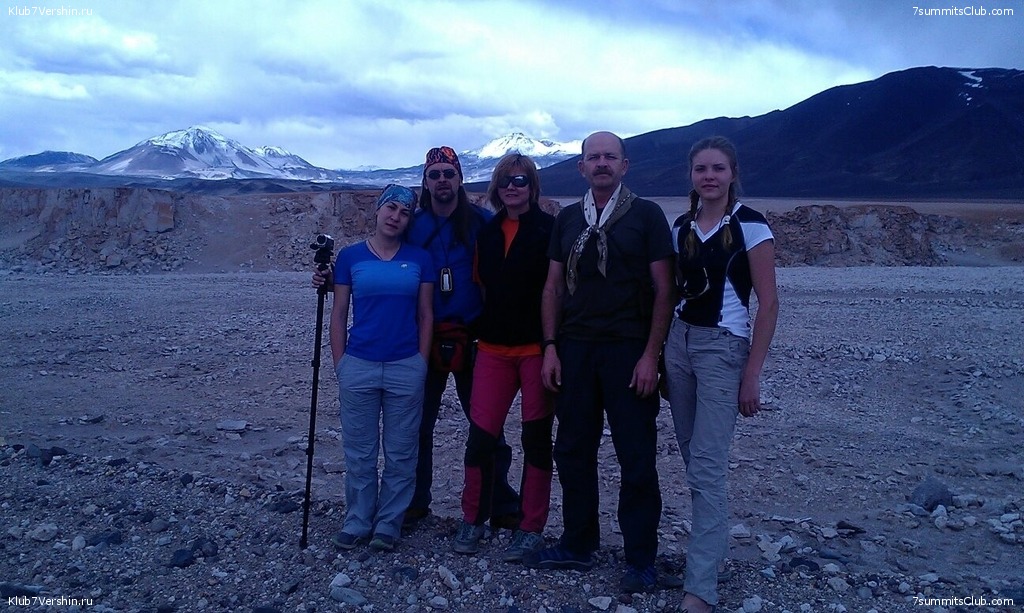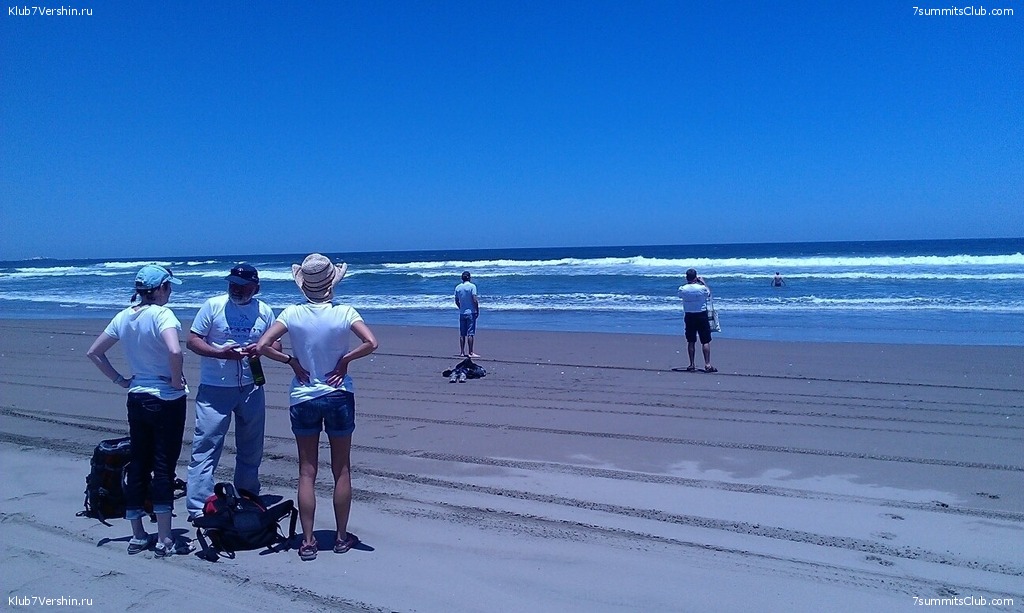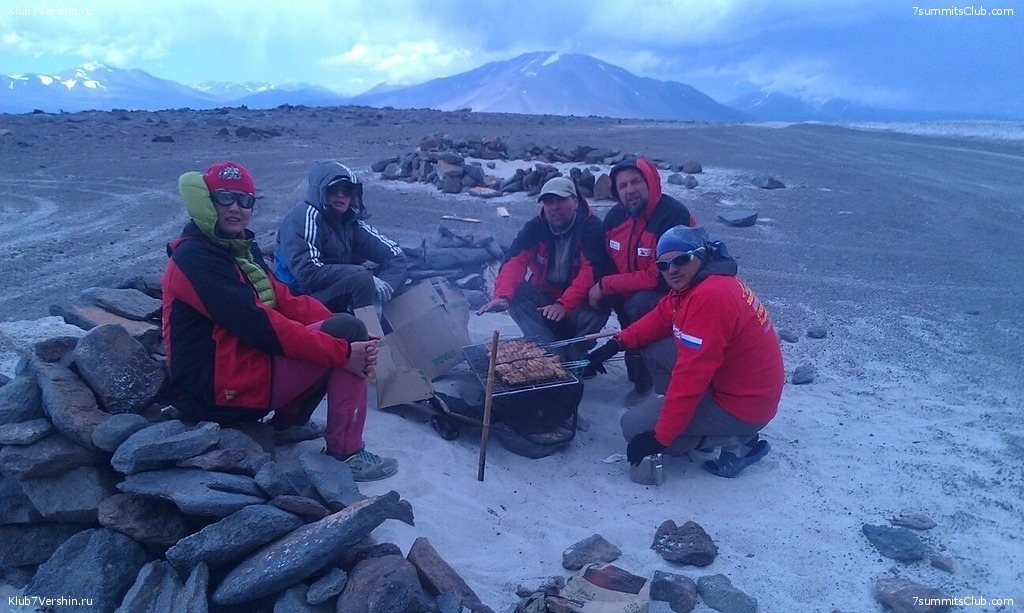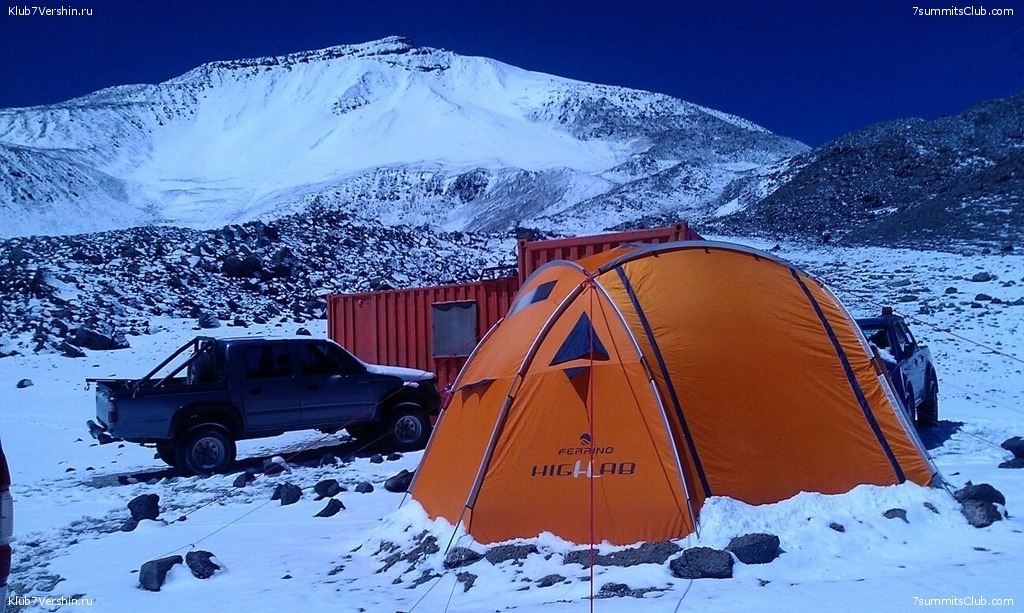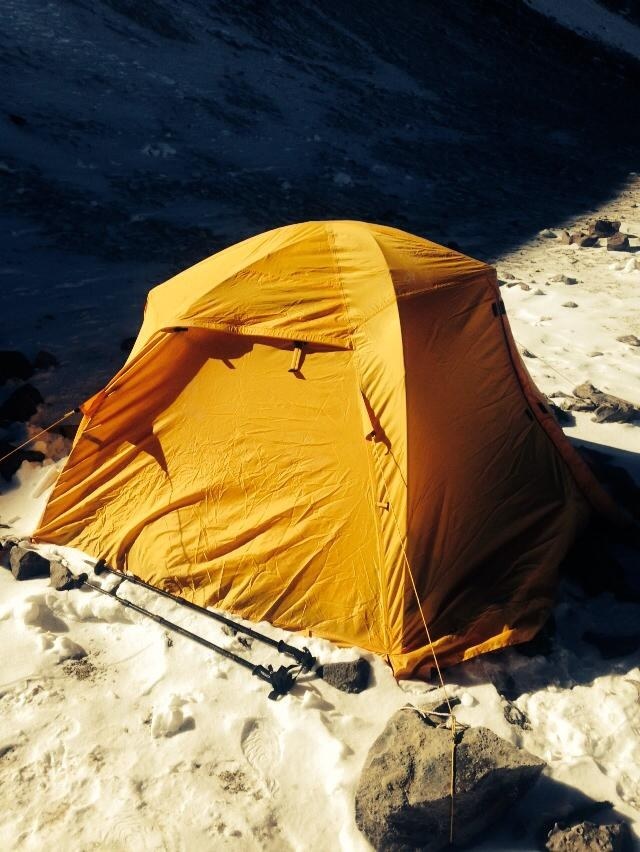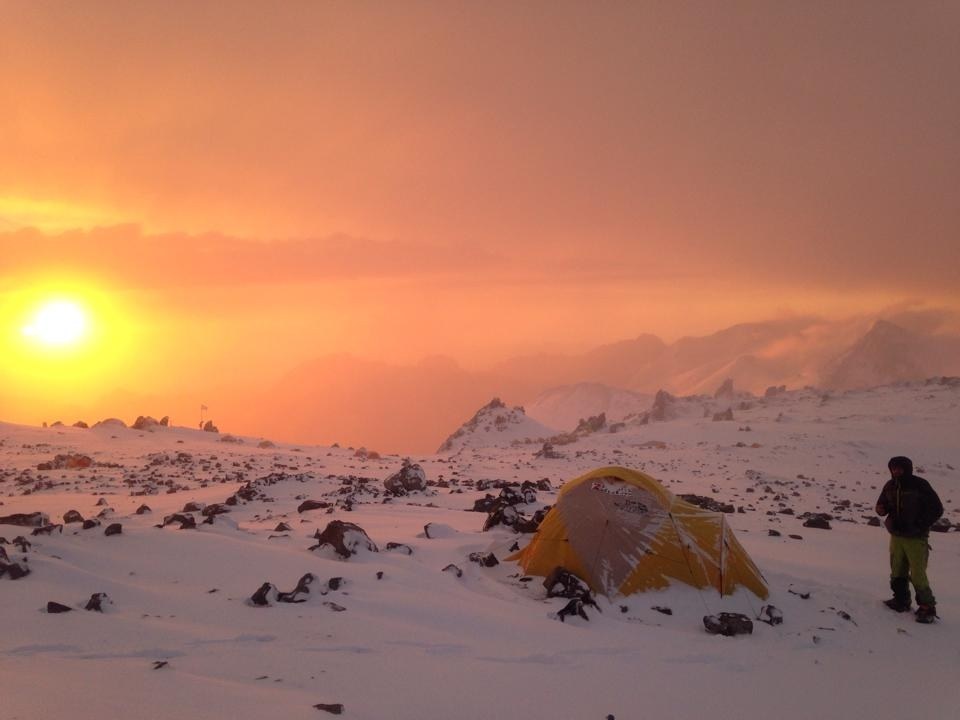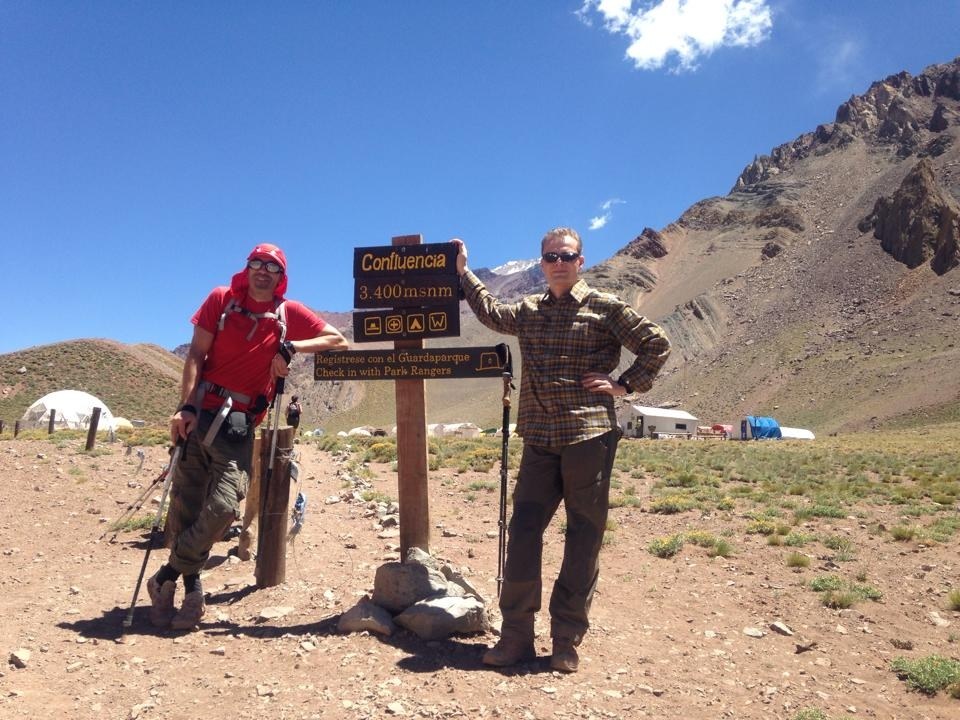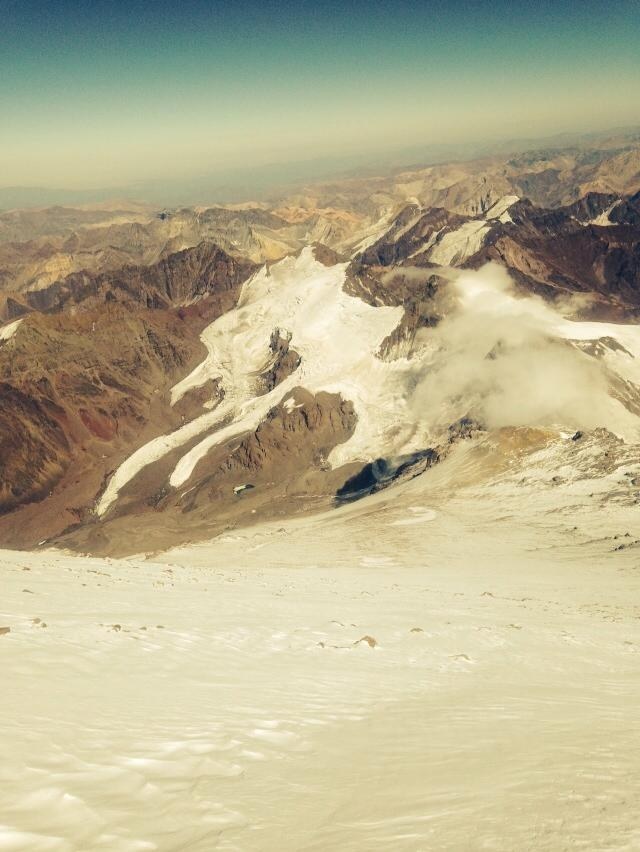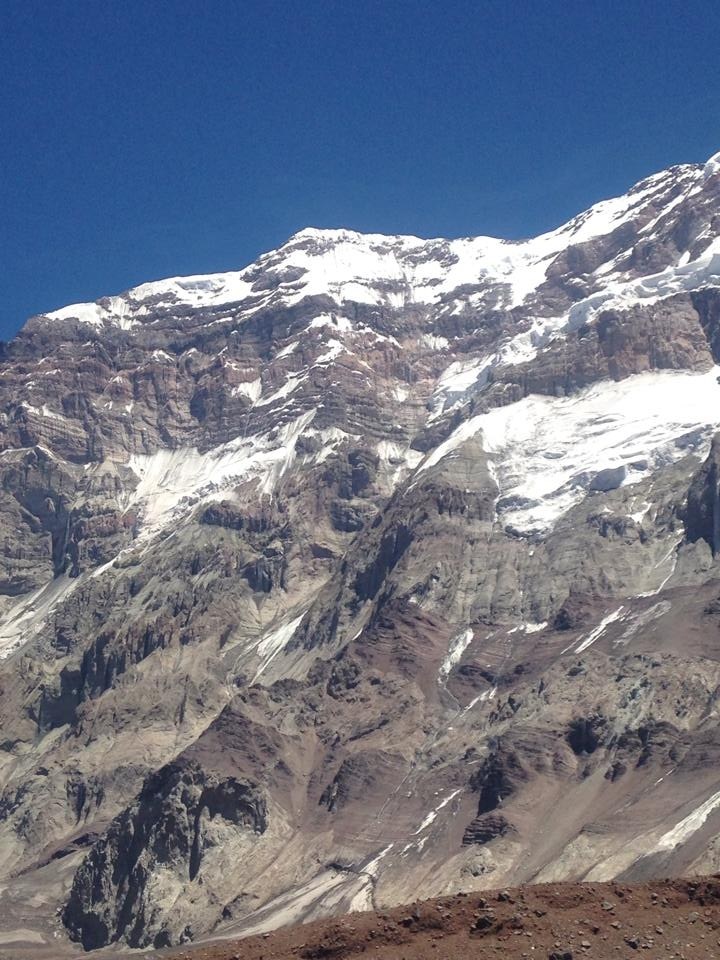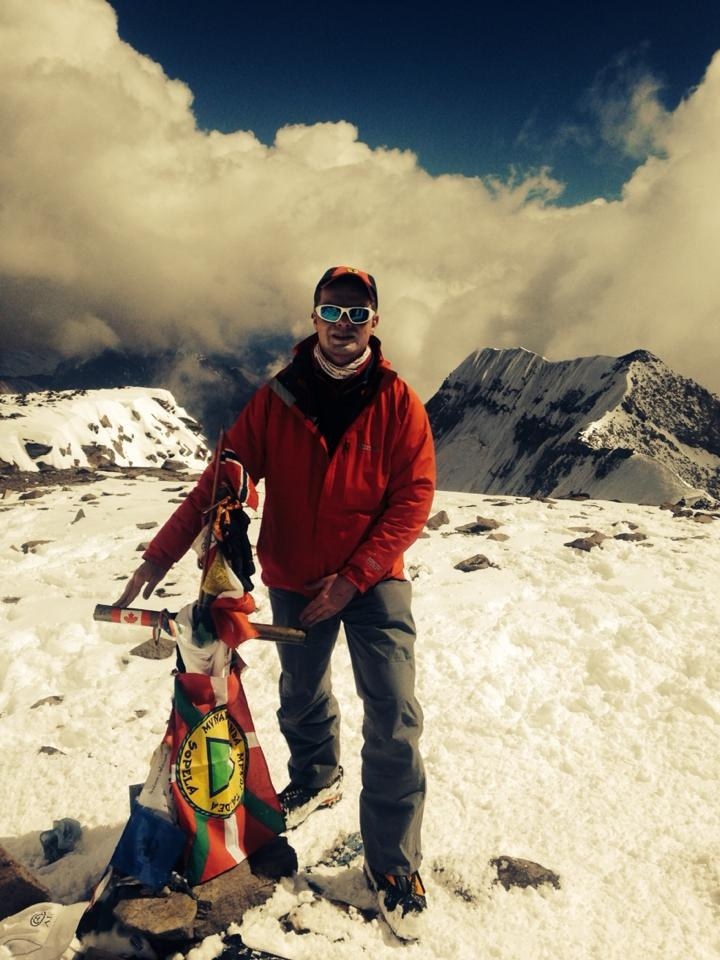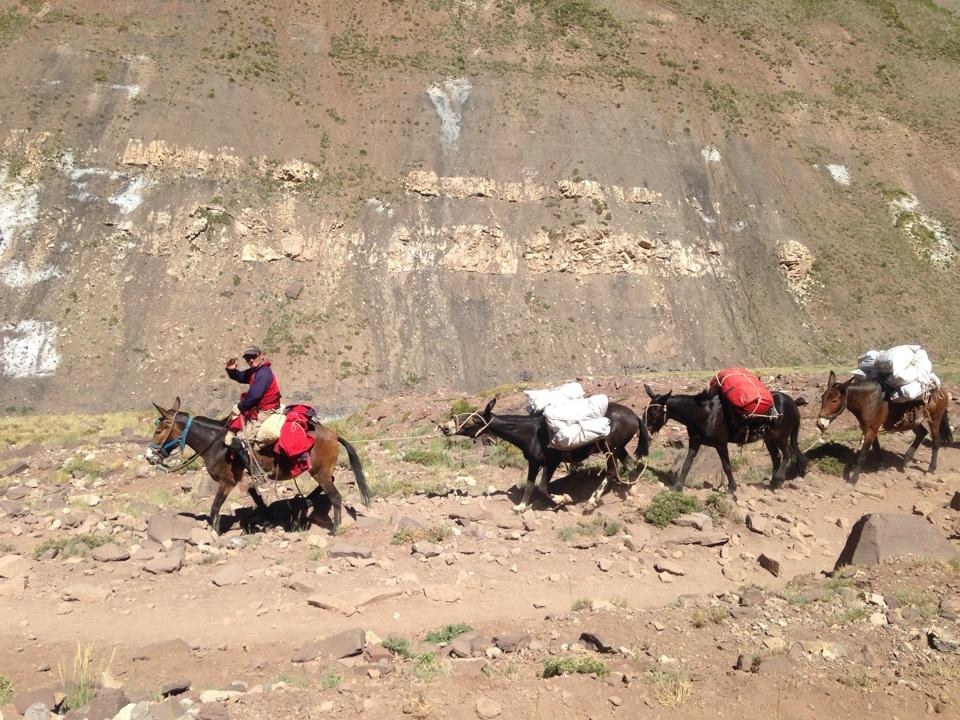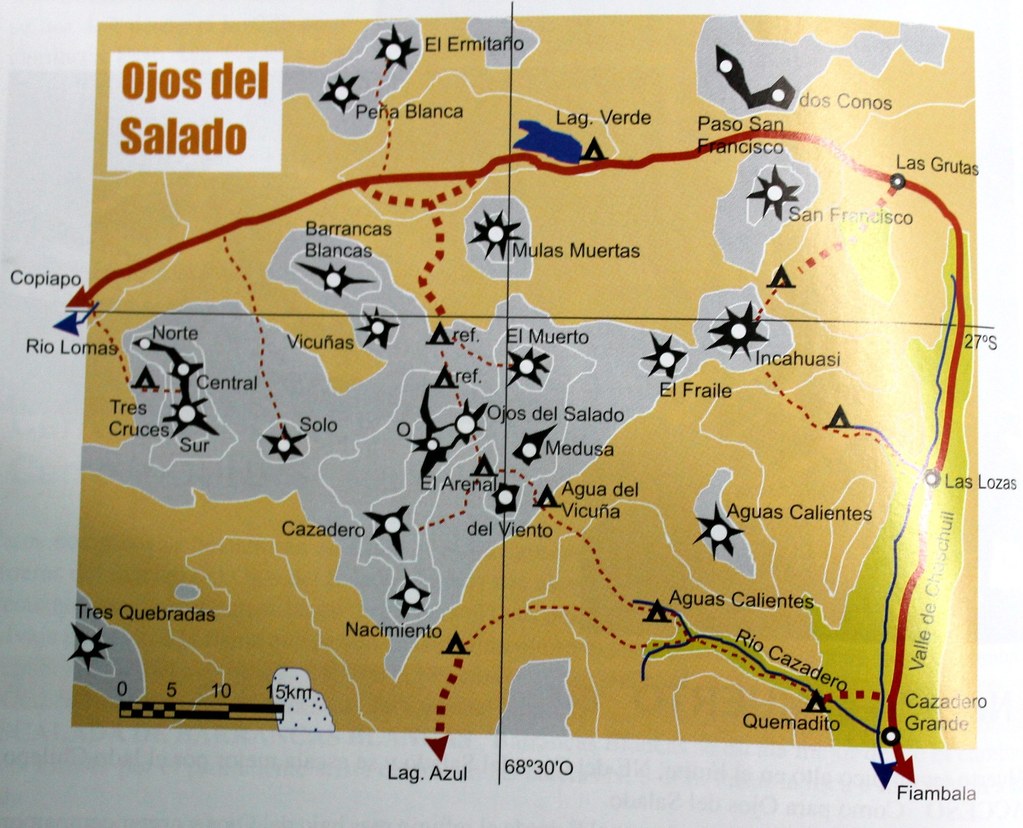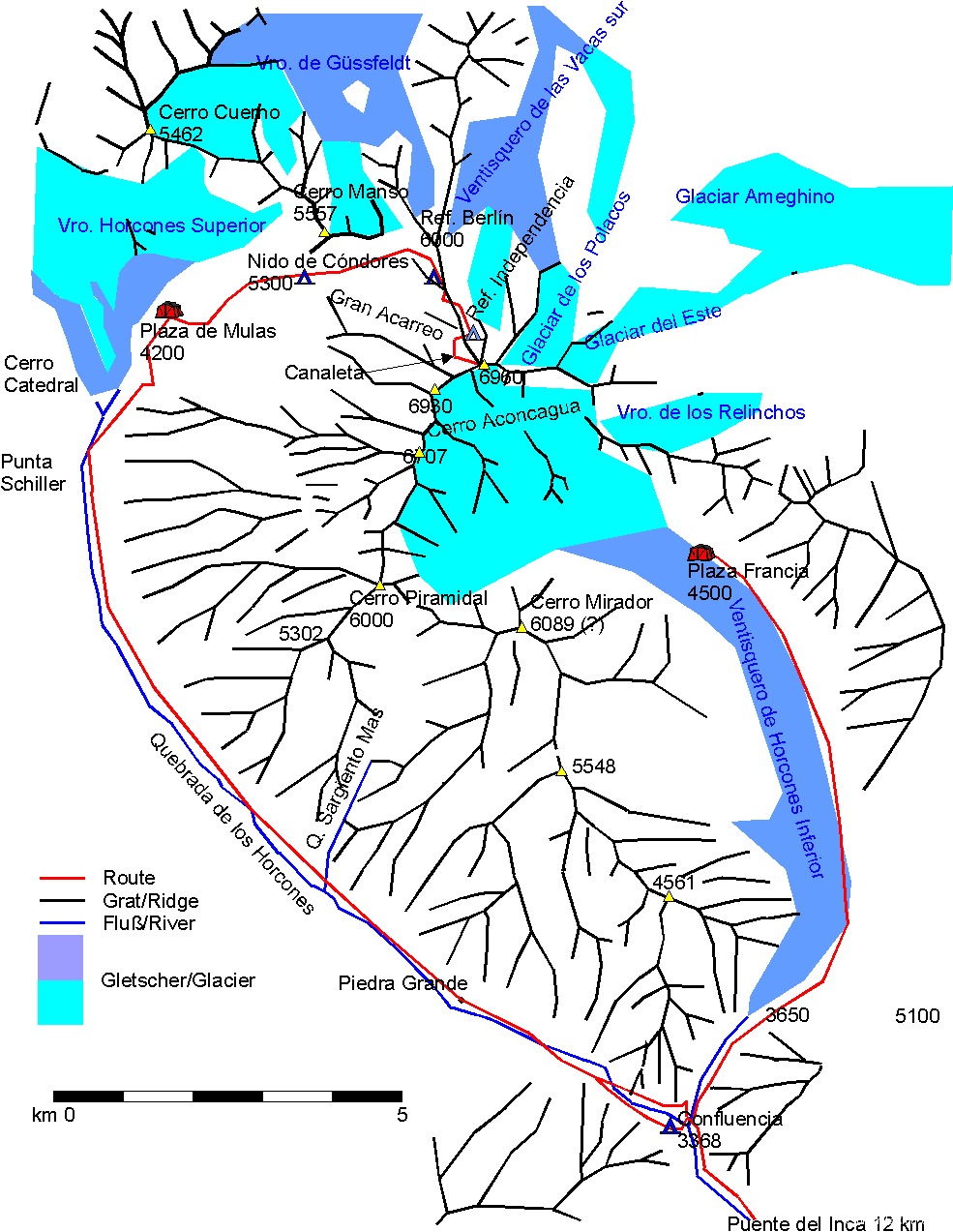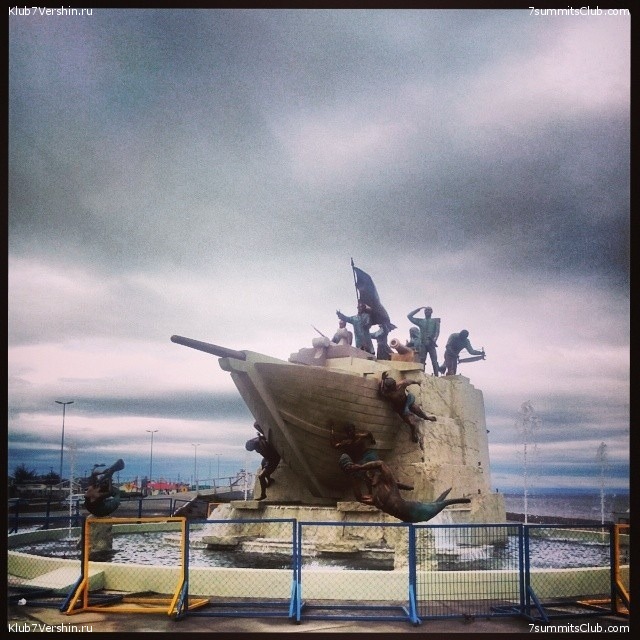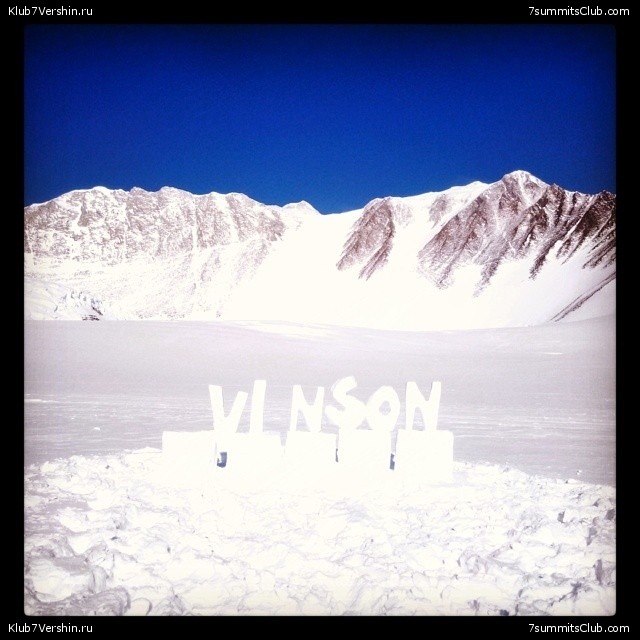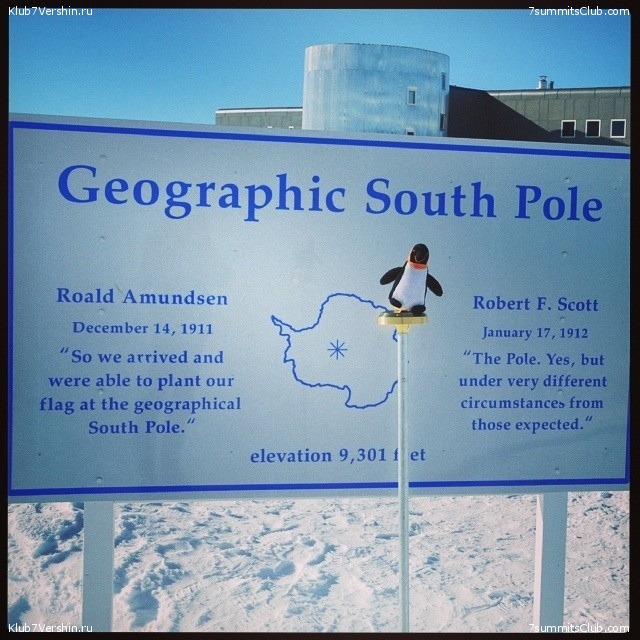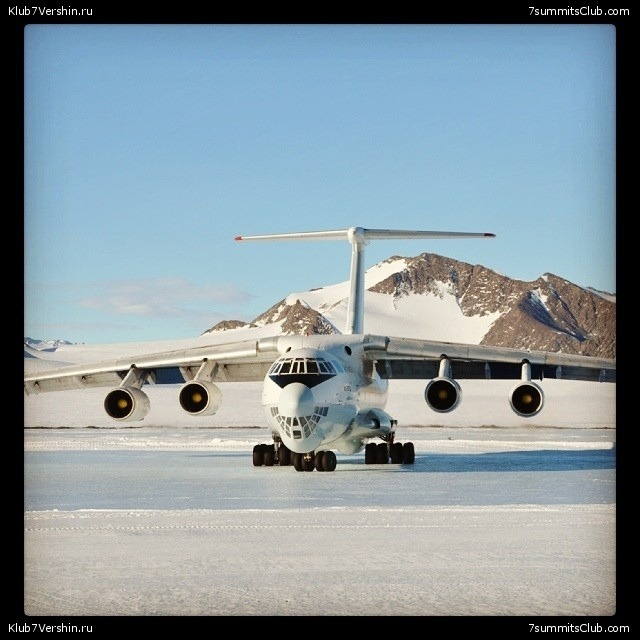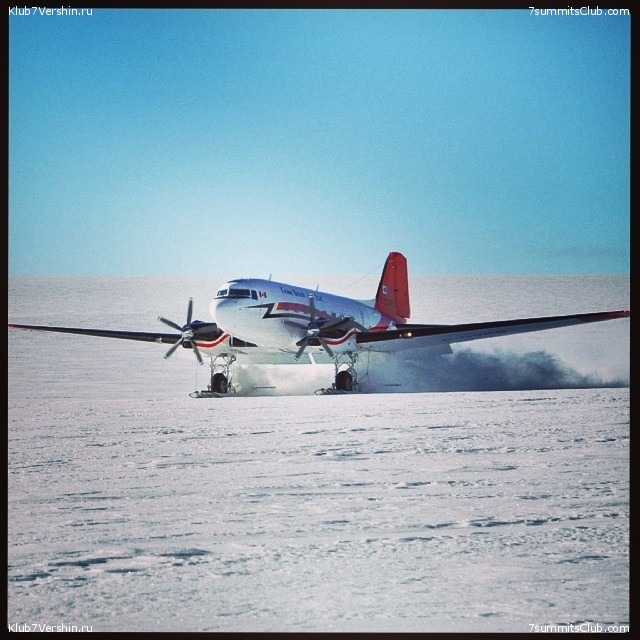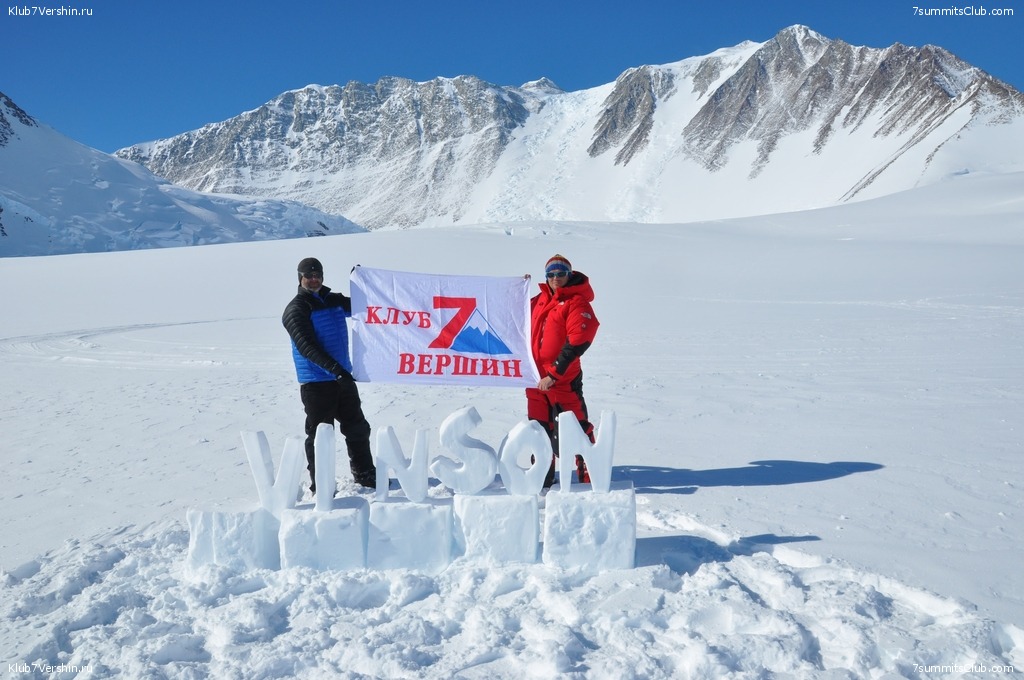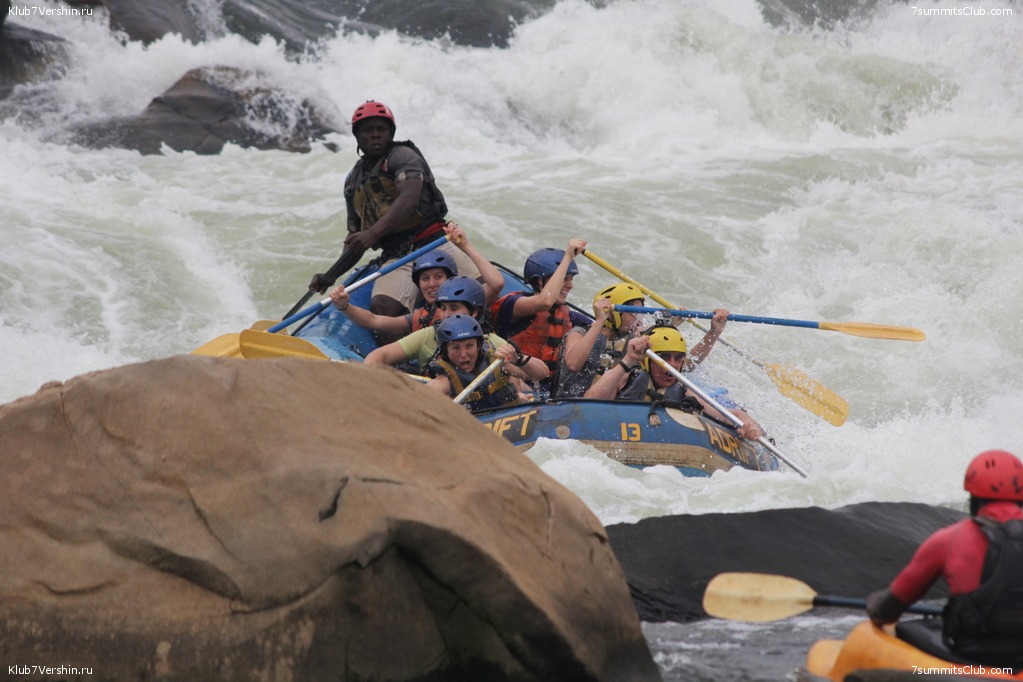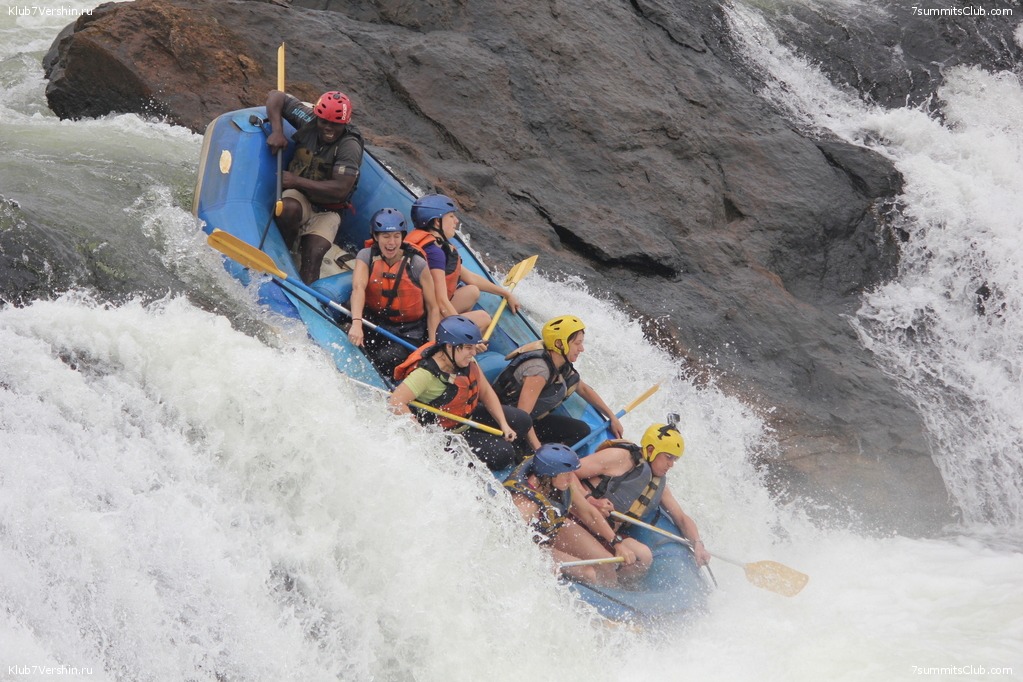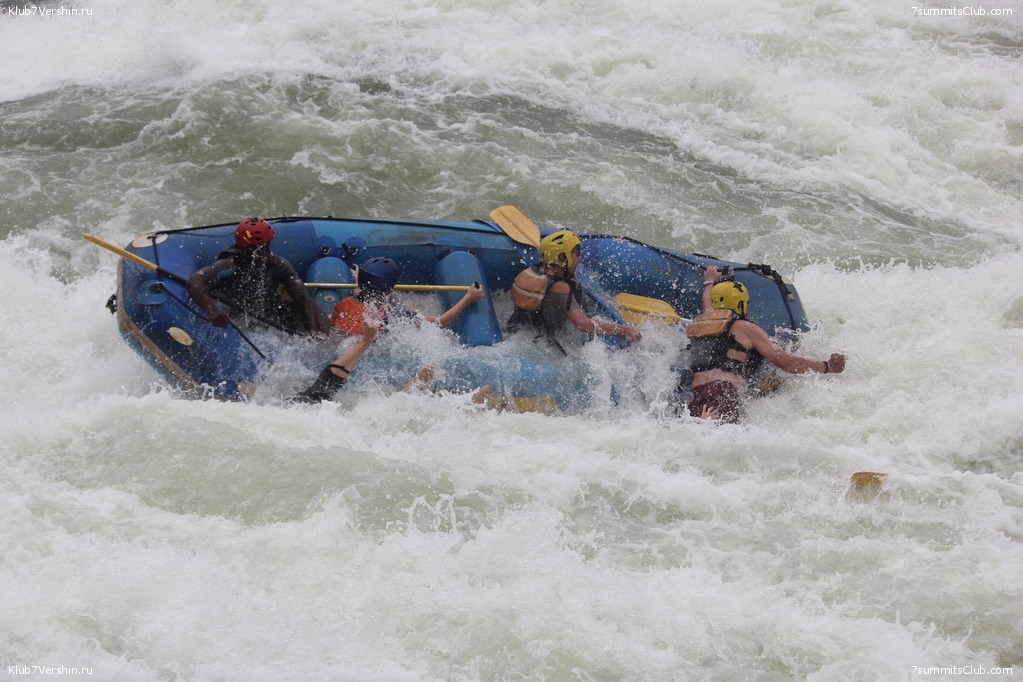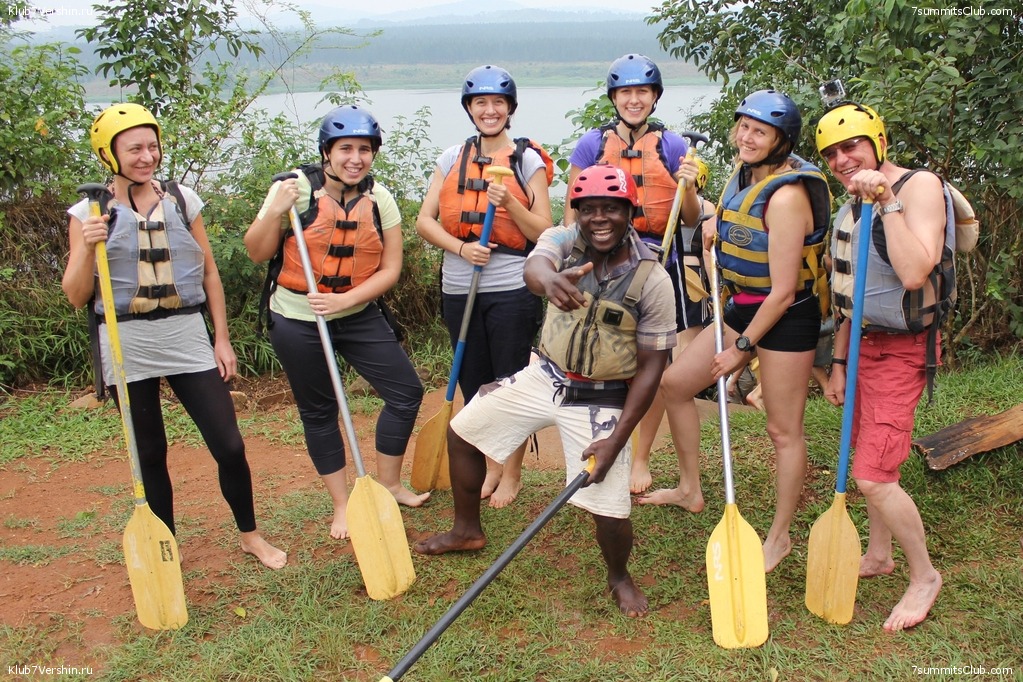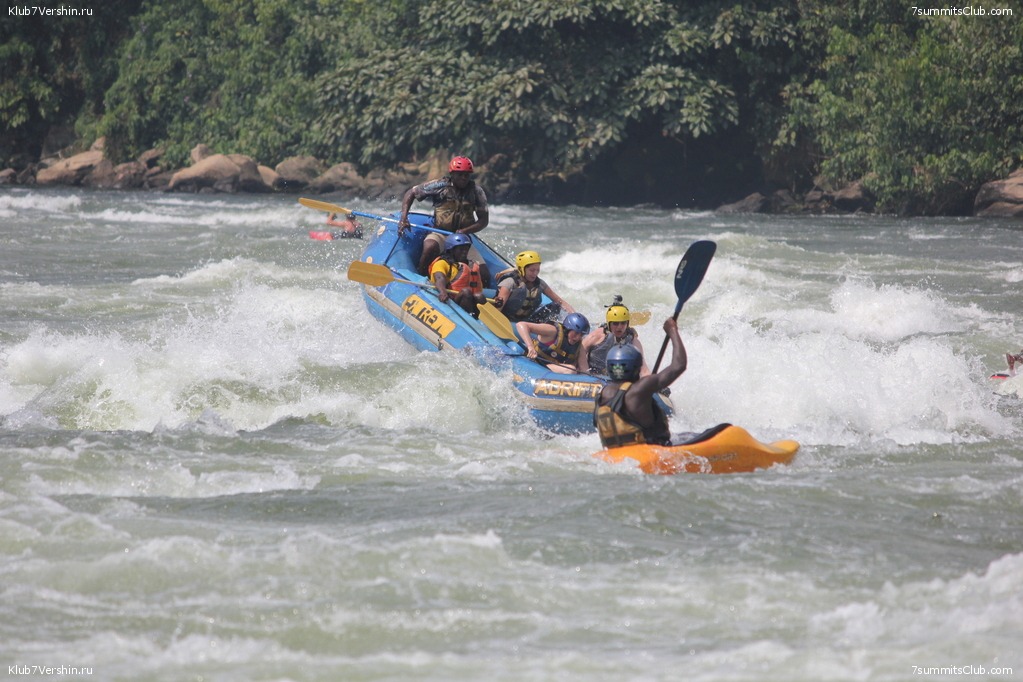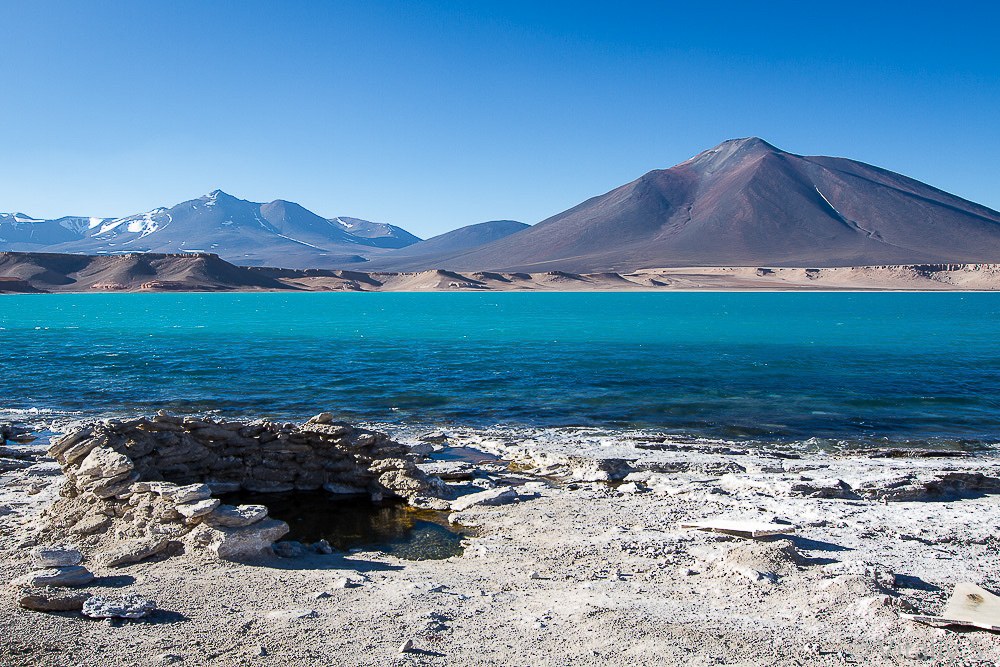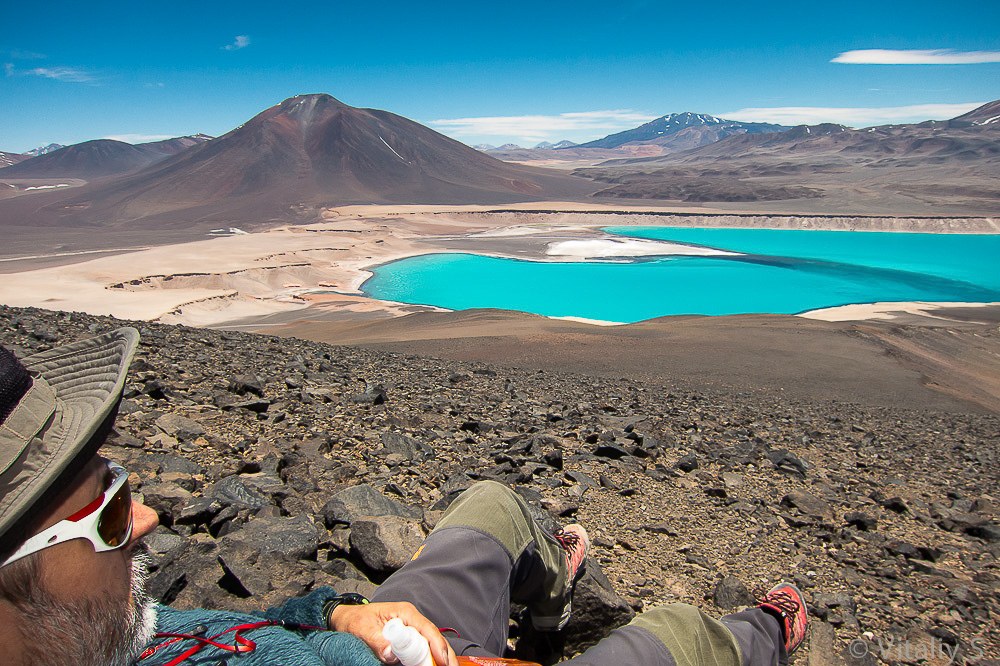All news - Page 272
Alexander Abramov and Lyudmila Korobeshko open office of the 7 summits Club in Tanzania
Lyudmila Korobeshko: Hello from Tanzania! Today the group of 36 people under the leadership of our representative in Tanzania and our guide Sasha Sak goes to a way! The expedition starts from here - from a cafe Union... ...
Lyudmila Korobeshko: Hello from Tanzania! Today the group of 36 people under the leadership of our representative in Tanzania and our guide Sasha Sak goes to a way!
The expedition starts from here - from a cafe Union...
And we open representation of the 7 summits Club in Tanzania...
On a photo - Sasha at Tanzanian office...
The Olympic flame has been lit at Mt. Elbrus. Nice view of Elbrus summit
Elbrus.
At the end of October 2013, an ascent of the western summit of the "two-peaked mountain" was made by experienced mountain climbers: Karina Mezova, who has climbed to the summit of Mount Elbrus 130 times, and Abdul-Khalim Elmezov, President ...
At the end of October 2013, an ascent of the western summit of the "two-peaked mountain" was made by experienced mountain climbers: Karina Mezova, who has climbed to the summit of Mount Elbrus 130 times, and Abdul-Khalim Elmezov, President of the Climbing Federation of the Republic of Kabardino-Balkaria. Both climbers are close friends of the 7 Summits Club, both are Everest summiters.
http://www.youtube.com/watch?v=dCA4W9ltGKA&feature=youtu.be
Russia Today
http://rt.com/news/olympic-torch-mount-elbrus-511/
A handout picture taken during the Sochi 2014 Winter relay on October 25, 2013 and released by the Sochi 2014 Winter Olympics Organizing Committee, shows torchbearers carrying an Olympic torch at the Elbrus Mount in Russia's North Caucasus region. (AFP Photo/Sochi 2014 Winter Olympics Organizing Committee)
With the Winter Olympic Games in Sochi just round the corner, the Olympic Flame has been lit at the summit of the highest point in Europe, Mount Elbrus, which lies in the Greater Caucasus mountain range.
During the relay, the longest in Olympic history, the Olympic torch has been seen at the International Space Station, in outer space, on the bottom of Lake Baikal, at the main Buddhist temple and monastery in the Republic of Buryatia, on top of Avachinsky volcano on the Kamchatka Peninsula, and at the North Pole.
A team of five experienced mountaineers has also reached the summit of Mount Elbrus with the Olympic Flame in a special lantern, the Torch Relay Committee revealed on Saturday.
Although commonly known as a mountain, Mount Elbrus is in fact a layered volcano, which last erupted about 2,000 years ago. It has long been a challenge for climbers from across the world, with the first documented ascent of the eastern summit in 1829. The slightly higher western peak was first conquered in 1874.
The plan to take the Olympic Flame to the western peak of Elbrus, at an altitude of 5,642 meters above sea level, was developed separately from the main Olympic Torch Relay route to have a chance to choose the best possible weather conditions for the climb.
At the end of October 2013, a Russian team of mountain climbers made an ascent of the western summit of Elbrus. One of the mountaineers, Karina Mezova, has climbed to the summit of Elbrus 130 times; the other, the president of the Climbing Federation of the Republic of Kabardino-Balkaria, Abdul-Khalim Elmezov, has climbed Elbrus more than 220 times.
A total of 14,000 torch bearers have taken part in the 2014 Olympic Torch Relay, with the oldest participant aged 101. Meanwhile, the average pace of the Olympic Torch Relay is 534 kilometers a day, with a variety of means of transportation available to ship it, including the traditional Russian three-horse sled, the troika, dog sled and reindeer sled, a hot air balloon, an amphibious motorboat, a medieval “ladya” Russian sailboat, a motorbike, a water scooter, a wakeboard, a ski bike, a snowmobile, as well as a snow-and-swamp buggy, just to name a few.
The 2014 Olympic Torch Relay has been hosted by 135 cities located in all of Russia’s 83 federal subjects. The longest nonstop leg of the relay spanned 2,055 kilometers, between the cities of Norilsk and Yakutsk in the Russian Far East.
On the official site of the Torchrelay of Sochi2014
http://torchrelay.sochi2014.com/en/photo-and-video#video=the-olympic-flame-has-been-lit-at-mt-elbrus
The Group of the 7 summits Club completed the acclimatization period and resting before the summit assault
Aconcagua.
Hello! It is Vladimir Kotlyar, the guides of the expedition to Aconcagua. Today we went from Nido de Êîíäîðåñ to Cholera, it was for acclimatization reason. We went briskly enough, went down and now we are on the Plaza de Mulas. We are ...
Hello! It is Vladimir Kotlyar, the guides of the expedition to Aconcagua. Today we went from Nido de Êîíäîðåñ to Cholera, it was for acclimatization reason. We went briskly enough, went down and now we are on the Plaza de Mulas. We are resting, eating etc. In General, the group restores strength prior to storm the summit. We are all well. Tomorrow we plan to have a day of rest. The weather is good, that's good. Mow it is windy. Weather forecasters promise the next three days strong wind. On the scheduled day of the ascent it should be “a window”. Goodbye!
Denis Provalov from Northern Patagonia
Dear comrades! It is a guide the company Seven Summits Club Provalov Denis. With an information from Argentina, from North Patagonia. A fascinating journey of Vladimir and Polina Lande in the Bariloche area continues. The day before ...
Dear comrades! It is a guide the company Seven Summits Club Provalov Denis. With an information from Argentina, from North Patagonia. A fascinating journey of Vladimir and Polina Lande in the Bariloche area continues. The day before yesterday we had a very interesting climb to the top of Bella Vista. Unfortunately, up to the top we were unable to walk, but we had a good time.
We had a very interesting tour by jeep of our friend Markus around the district of Bariloche. We travelled a lot and have made various radial outputs and treks in a very beautiful place. It is difficult to convey the beauty and charm all of these wonderful places and believe me - it is very very beautiful. The weather spoiled, but we will continue our route.
The book «Igor Svergun: We don't conquer the mountains, just ascend into them» is now in the 7 Summits Club
2013 inscribed very dark page in the history of mountaineering: in Pakistan, at the foot of the mountain Nanga Parbat terrorists shot 10 climbers from different countries. Among them three were from Ukraine, from the city of Kharkiv, ...
2013 inscribed very dark page in the history of mountaineering: in Pakistan, at the foot of the mountain Nanga Parbat terrorists shot 10 climbers from different countries. Among them three were from Ukraine, from the city of Kharkiv, one of which, Igor Svergun was a close friend of our Club. We honor his memory. In December in Kharkov they published a book about Igor and his friends. Now you can buy it in our Club (Bolshaya Pereyaslavskaya street, the house 7, 2nd floor).
It should be noted that it is a charitable project and all funds received from the realization of the project will be transferred to a family of Igor Svergun.
Igor Svergun
(1966-2013)
Master of sports in mountaineering (1989), MS international level (1991), instructor-methodologist of the 3rd category. Igor started climbing in 1984 in section climbing club of the Kharkov Polytechnic Institute. The first ascent was made on the Peak Semenov-Bashi. First instructor – G. Artemenko. Climb in the Himalayas: Lhotse South face - up to the height of 8,200 m, 1990; traverse Manaslu (with V. Pastukh and A. Makarov) - 1991; Everest, South peak - 8790 m, 1992; Dhaulagiri, 8167, 1994; Annapurna (Bonington route), 1996; Shishapangma (in Alpine style), and Àìà Dablam and Pumori, 1998; Cho Oyu, 8201 m, 2004; Everest, 8848 meters, NE Ridge, 2005 and 2006 (as a guide of the 7 summits Club). Igor had made in the mountains of 25 routes highest grade difficulty. In 1999, during Ukrainian ascent on Everest Igor participated in the unprecedented transportation of V. Gorbach from the height of 8600 meters. His climbing achievements were awarded with government awards of the USSR and Ukraine.
In August we visited the graves of Kharkiv climbers:
Photos by Yevgeny Karjakin from an expedition on Ojos del Salado
Ojos del Salado.
We continue the publication of photos from the participants of the anniversary of the expedition to the highest volcano of our planet. Today we present the photos by Yevgeny Karyakin, Vice-President of the company Gazovik. Completely photo ...
We continue the publication of photos from the participants of the anniversary of the expedition to the highest volcano of our planet. Today we present the photos by Yevgeny Karyakin, Vice-President of the company Gazovik. Completely photo gallery (182 pictures) is located at the following link >>>>>>
/photos/all/section_533/
The second group of 7 summits Club on the way to Aconcagua
Aconcagua.
Hello! This is Vladimir Kotlyar, a guide of the program Ascent of Aconcagua. Today with the group we went on acclimatization hike to the Plaza France. We climbed the height 4100. Up we walked for five hours and a half, half an hour sat ...
Hello! This is Vladimir Kotlyar, a guide of the program Ascent of Aconcagua. Today with the group we went on acclimatization hike to the Plaza France. We climbed the height 4100. Up we walked for five hours and a half, half an hour sat there, drank tea, ate and went down for two hours and a half. After that, the doctor examined the group. Indicators all excellent, the group is just like the astronauts! You can all send after Aconcagua to the moon. In General, the mood is all excellent, ready to fight. We send greetings to our Homeland!
Igor Pochvalin: new mountains, new titles and a new book. Photos from the Ojos del Salado (260 pictures)
Ojos del Salado.
In April 2013 at the 11th Congress of the Ukrainian Geographical Society Igor Pochvalin was elected an Honorary Member. He also became a member of the Presidium of the Crimean branch of the Society. In May, Igor went with the Club 7 summits ...
In April 2013 at the 11th Congress of the Ukrainian Geographical Society Igor Pochvalin was elected an Honorary Member. He also became a member of the Presidium of the Crimean branch of the Society. In May, Igor went with the Club 7 summits on Jebel Toubkal, in August, he presented his new book, this time the book of poetry named «Free translation from Farsi». At the same time Igor remains, first of all, professional, surgeon-oncologist of highest qualification....
We were happy that Igor took part in the expedition of Alexander Abramov on Ojos del Salado. And are glad to present you a gallery of photos which he made during this travel:
260 pictures are here
http://www.7vershin.ru/photos/all/section_529/
"The achievements of each individual Person are the achievements of Mankind."
The biggest ever gallery of photos of Uganda from Ludmila Korobeshko (270 pictures!)
Ludmila Korobeshko: «Well, so ended our fun trip to Uganda, during which we really fell in love with this country. It's real and very hospitable! During the trip we visited 6 different kingdoms, in each of its king and its ...
Ludmila Korobeshko: «Well, so ended our fun trip to Uganda, during which we really fell in love with this country. It's real and very hospitable!
During the trip we visited 6 different kingdoms, in each of its king and its language, its own capital, their customs, costumes. I want to write a lot, but...»
While let talk pictures.
Fully Gallery >>>>>>>
http://www.7vershin.ru/photos/all/section_528/
Journey to Uganda was held in the new year period 2013-2014. It consisted of three major parts:
(1) Mountain Rwenzori massif, with the ascent to the highest point - peak Margheritta (5109 m).
(2) Visiting the national Park Bwindi in search of traces of the silvery gorillas.
(3) Rafting on the White Nile.
The 7 Summits Club congratulates Igor Kadochin – a new conqueror of the Seven Summits , the first on the Amur!
Everest.
The Club leaders has long been traveling. During this time, Russia received one more winner of the Seven summits. This is Igor Kadochin. Dima Ermakov, as a guide of the group climbing the final peak of The Seven - Mount Vinson, this is ...
The Club leaders has long been traveling. During this time, Russia received one more winner of the Seven summits. This is Igor Kadochin. Dima Ermakov, as a guide of the group climbing the final peak of The Seven - Mount Vinson, this is promptly informed in the day of climbing. Now we all join in the congratulations! New achievements, new heights!
Banner of Komsomolsk-on-Amur on top of the world. Igor Kadochin picked it up.
Igor Kadochin - Director of LLC Trade house «Sun» in this glorious city. Igor was one of the heroes of the seven summits, you can see on our Chronicles, how cruel tests they were offered: Aconcagua, McKinley, Everest.... All overcame. Hero!
The first photos from Jubilee expedition on Ojos
Ojos del Salado.
Please find some pictures from snowy highest volcanoes of the World. We congratulate Alex Abramov one more time with 50th annivesary and good climb!
Please find some pictures from snowy highest volcanoes of the World. We congratulate Alex Abramov one more time with 50th annivesary and good climb!
Some fresh pictures from Aconcagua
Aconcagua.
The group came to Mendoza, this is end of expedition. One of summiters Genis Kirienko sent by facebook some pictures from the climb...
The group came to Mendoza, this is end of expedition. One of summiters Genis Kirienko sent by facebook some pictures from the climb...
Our group rest at Plaza de Mulas
Aconcagua.
Seven Summits Club, this is Vladimir Kotlyar. Hello! We went to the Plaza de Mulas. Now we have a hot shower, a good dinner, bottle of wine, a steak. In General, everything is fine. Today we will spend the night here , relax, collect things ...
Seven Summits Club, this is Vladimir Kotlyar. Hello! We went to the Plaza de Mulas. Now we have a hot shower, a good dinner, bottle of wine, a steak. In General, everything is fine. Today we will spend the night here , relax, collect things and tomorrow we get back to civilization. In General, it is the successful completion of the journey. All the best!
SUMMIT ! Five climbers reached the top of Aconcagua
Aconcagua.
Seven Summits Club, Hello! This is Vladimir Kotlyar from Aconcagua. We are on the top of the highest peak of South America Mount Aconcagua. With me: brothers Lavrentievs, Vladimir and Constantine, Anuchin Gennady and Denis Kirienko. Thanks ...
Seven Summits Club, Hello! This is Vladimir Kotlyar from Aconcagua. We are on the top of the highest peak of South America Mount Aconcagua. With me: brothers Lavrentievs, Vladimir and Constantine, Anuchin Gennady and Denis Kirienko. Thanks for the support and organization of travel to all employees of the Club! Thank you! We begin the descent. All the best!
Alex Abramov from the expedition on Ojos del Salado
Ojos del Salado.
Hello! This is Alexander Abramov from the expedition on Ojos del Salado. Today we spent a night in a hut Òåjos at the height of 5800 meters. Of course, we slept not in the hut, but in tents. This is the last camp to conquer the ...
Hello! This is Alexander Abramov from the expedition on Ojos del Salado. Today we spent a night in a hut Òåjos at the height of 5800 meters. Of course, we slept not in the hut, but in tents. This is the last camp to conquer the summit of Ojos. Now we went down to stay two nights in the camp Atacama and then we go to the assault. Tonight was a very strong wind, it was snowing hard. But now it's such kind of weather that...
The Group of the 7 Summits Club in the camp Plaza de Mulas
Aconcagua.
Hello, Club! This is Vladimir Kotlyar from Aconcagua. We have the good weather here in the base camp. We went for a rest day in the Plaza de Mulas. The group will go up tomorrow, but not in full. Roman flew down by a rescue ...
Hello, Club! This is Vladimir Kotlyar from Aconcagua. We have the good weather here in the base camp. We went for a rest day in the Plaza de Mulas. The group will go up tomorrow, but not in full. Roman flew down by a rescue helicopter. In his lungs fluid began to accumulate. In general, the further climb was unsafe. In all others - everything is fine. Guys are healthy, they are in the mood of fighting. We hope for good weather. All the best! Thank you all!
End of the season in Antarctica
South Pole.
7 summits, Hello! Dima Ermakov from Punta Arenas. Yesterday, early in the morning we arrived here from Antarctica. The weather is fine, the sun shines. Today almost all the participants departed, except me. Our expedition is over. ...
7 summits, Hello! Dima Ermakov from Punta Arenas. Yesterday, early in the morning we arrived here from Antarctica. The weather is fine, the sun shines. Today almost all the participants departed, except me. Our expedition is over. Antarctica will not surprises us more this year. The 7 Summits Club has completed its work on the Ice continent this season. With two successful expedition on Vinson, one Last Degree, and one of the volcano Sidley. So we have a fine finish. We are happy and glad that soon we'll be seeing family and friends.
Best Regards! Dima Ermakov, a guide of the 7 Summits Club
Ludmila Korobeshko from Uganda. End of expedition
Hello! Well so ended our fun trip to Uganda, during which we really fell in love with this country. It's so natural and very hospitable! During the trip we visited 6 different kingdoms, in each there is its king and its language, its own ...
Hello! Well so ended our fun trip to Uganda, during which we really fell in love with this country. It's so natural and very hospitable!
During the trip we visited 6 different kingdoms, in each there is its king and its language, its own capital, their customs, costumes. I want to write a lot, but tomorrow I am flying to Chile, still a lot to do. Therefore, briefly about how we had a final day in Uganda + several photos from rafting on the White Nile (they are very emotional, these pictures).
The team of Alex are resting after acclimatization
Ojos del Salado.
Hello! This is Alex Abramov from the Atacama Desert, Ojos del Salado expedition. Now we have a rest at lake Laguna Verde, where we bathe first in the hot springs, then immediately in cold water of the lake. Around there is an ...
Hello! This is Alex Abramov from the Atacama Desert, Ojos del Salado expedition. Now we have a rest at lake Laguna Verde, where we bathe first in the hot springs, then immediately in cold water of the lake. Around there is an extraordinary beauty. Mountain peaks covered with snow, green lake. In general, all very cool. Yesterday we went to the summit of Mount San Francisco, 6018 meters high. All we reached the top, although it was of course difficult. Now we believe that we are ready for further program. Today we move to the base camp Atacama. Follow our messages. So far!
Summit for our group
Hi! This is Alexandra Sak from Kilimanjaro. Today morning at seven, six of the eight our climbers were on the top of Uhuru. Although the mountain was not good with the weather today. First, a strong wind in the morning, then we walked as ...
Hi! This is Alexandra Sak from Kilimanjaro. Today morning at seven, six of the eight our climbers were on the top of Uhuru. Although the mountain was not good with the weather today. First, a strong wind in the morning, then we walked as hedgehogs in a fog, and then went to grad. Now we are already in Horombo, 3700. And here, too, there is hail. So Kilimanjaro is sad. But we are quite cheerful, everything is great. With impatience we wait for tomorrow to come down to the hotel and get in the shower, lukewarm. We are all well, feel well, although a little tired. Bye-bye!
